Banderas Bay Biodiversity
Latest update August 24, 2019 Started on January 1, 2018The wonder of Banderas Bay in western Mexico is a wide array of very diverse habitats. From deep sea to oceanic islands, from beaches and mangrove covered estuaries to several types of tropical forest in lower elevations, topped by temperate forests on the higher slopes of the bay. Everywhere you find a wealth of animal and plant species, many endemic to Mexican west. New species are still being discovered regularly.
Yet, few know the true magnitude of the local natural richness. Can we change that? Can we make residents and visitors alike understand the privilege of enjoying such a remarkable heritage? To wake up their pride and desire to protect the local nature? We believe we can. That's what our project is about.
Not an endeavor in a far away land, this expedition is our life.
Eel safari and starry eyes
Recently arrived from my Canadian cold diving expedition, I am back ready to dive into the local waters, wearing a thin wetsuit and only a few sticks of lead. Quite frankly, it almost feels odd. I mean - not wearing 50 pounds of gear and several layers of clothing. “This cannot be it?! I must have forgotten something!” A quick check - nope - it is all there. Tropical scuba just happens to be terribly easy in comparison. Well then - let’s get on with it.
We are back at The Boulders on the southern shore. My buddy today is my son Adam, eager to test his new GoPro 7. Calm ocean and high tide let us enjoy en easy start. We won’t have to worry much about stepping on the sea urchins that line the entry point underwater. We jump in, dive down, swim out and reconvene on a sandy patch a few dozen feet from the shore. Last gear and camera check and we are off in a southward direction. Our plan is to explore around the boulders and adjacent sandy bottom. Top 20 feet are quite murky, but the visibility improves below. I carry my macro and look for small life to photograph. Adam, I am sure will chase anything. This is a shallow and easy dive with lots to look at. We find a Spotted round ray (Urobatis maculatus) buried in the sand, several species of Moray eels, some even sharing the same rocky crevice, sponges, hydroids, sea stars, sea urchins, tubeworms, anemones and dozens of fish species that mill around us.
Today, there is a large concentration of Spiny porcupine fishes (Diodon holocanthus). Some swimming around, others resting on the bottom or in small caves. I have always been fascinated with their large eyes, painted with a strange iridescent pattern. To me they look like galaxies. So far, I haven’t been able to find any source, scientific or popular, that would explain such structures. I know the Porcupine fish is often most active during the night and its large eyes certainly make low light perception easier, but whether this fact has anything to do with the strange colorful designs, still remains a mystery to me.
- Petr Myska
More info:
Eerily beautiful: Capturing images of the Salish Sea life
For the next few weeks I am changing latitudes and water temperatures by quite a few degrees. I will be diving around Vancouver Island in the Canadian province of British Columbia on a quest to photograph the life under the surface of the Salish Sea.
Follow my expedition up north here: https://openexplorer.nationalgeographic.com/expedition/eerielife
I will continue writing here about my explorations of the Banderas Bay when I return ...
Add a comment
Downhill in Colomitos
Some of you might remember Colomitos from one of my recent posts, when I took the Trident on a shallow practice run to spy on fish. Today we are back with a different plan. We will explore the southern side of the cove diving. I know what to expect in the first 10 meters (33 feet), but I know little about what lies beyond. We plan to start close to the beach and follow the contour of the bottom down to about 25 meters (82 feet). Maintaining the depth we will swim due west and ascend to 15 meters (50 feet) at half tank and turn back. As it turns out, the large boulders familiar to me from my Trident excursion and a number of previous snorkeling trips can be found all the way down to our target depth. I cannot see deeper too well though - the water is still murky, although considerably warmer than a few weeks ago. Around the boulders we spot lots of familiar life - fish, octopus, several species of moray eels. Cesar points out a large ray resting on the sand below us, likely a Longtail stingray (Dasyatis longa). The boulders are covered by several kinds of coral. I find a nice Muricea fan, lots of Porites and even one colony of Pocillopora and Pavona. Then, exactly at half tank we hit what resembles a downhill skiing slope! Boulders are gone and we are presented with a large expanse of coarse sand. The incline has almost perfect 45 degrees. There is little life around - I find only one Spotted Snake-eel (Myrichthys tigrinus) patiently searching for food in the sand with is long snout. As we swim back we ascend slowly, until at the end of the dive we are only a few meters below the surface. Here, there is lots of action. Exactly as I remember it from the Trident footage. Rainbow wrasses mill above the tops of the boulders and several schools of larger fish circle around me. There are busy barnacles, anemones and several nudibranchs.
I should come back with a macro lens!
Photo 1 - Muricea coral
Photo 2 - Spotted Snake-eel (Myrichthys tigrinus)
Add a comment
Growing corals … and alliances
Today, the Trident stays at home. Where I go, there will be no need for its deep charging prowess. I am invited to tag along and capture some images of a coral restoration project conducted by joint efforts of Prozona (a Mexican conservation organization) and the Marine Ecology lab of University of Guadalajara. This effort led by Dr. Amilcar Cupul, whom I have known for years and Dr. Paola Rodriguez - a National Geographic Explorer has more than 5 years of work under the belt. The focus of the project is to assist the growth of the local coral reef and ensure its bright future. Although Las Marietas enjoy National Park protection status, they have been very popular with tourists and the large number of visitors together with other environmental pressures have caused a severe decline of its coral reefs.
A few years ago this situation became untenable with literally thousands of visitors arriving at the islands on some days! A need for regulation became evident and daily limits have finally been established. Today, only 620 are allowed in on any given day, with the exception of Mondays, when the entire National Park is closed to the public.
We meet up at La Cruz marina and start shuttling the equipment down to the boat. The crew - a mix of professors and their students is evidently in their element. Gear is loaded and stored promptly in its assigned spots and we are ready to set off towards the hazy horizon. I take advantage of the boat ride to ask a few questions about today’s activities, trying to imagine what kind of photo opportunities I should be ready for. There is also a lively discussion on the topic of expected water temperature and the appropriate wetsuit thickness for today. Although the seasonal change-over should be happening any time now, it hasn’t happened yet it seems. Some optimists are packing only 3mm, while others, brought their 5 and 7’s (me!). I prefer to be too warm to being cold by a long shot and until further notice have my gloves, hood and cold core undergarment in my dive bag.
Once on site, all happens very quickly. You can tell pros by the speed they can get geared up. A few minutes after arrival everyone is in the water, including those who slept the entire ride in. I follow Amilcar as the rest of the crew scatters to their respective work sites. Today’s tasks include evaluation of growth and bioerosion of Pocillopora and Pavona coral colonies and re-tagging of restoration fragments.
When I get in I am presented with a series of surprises. One - the water IS quite a few degrees warmer! Two, the reef is right under us, this will be a shallow dive indeed! Three - there is more water movement than I expected so shooting washing machine style it is. I know my hands will be stiff after the dive - my right from clutching the camera rig, my left from trying to hold desperately on some inert part of the reef. Let’s get to work!
I spend the next 2 and a half hours following the team around. I admire their underwater skills as the deftly complete their tasks oblivious to the swells sweeping them back and forth as giant fans over the reef. I am feeling less nimble. I find taking decent photos challenging under the best of conditions and I struggle today fearing I might damage the corals I glide above. I am here to help the effort after all - not to destroy its hard-won fruit!
In the end I come home with a new understanding what coral restoration efforts mean “on the ground”... and a few photos to promote the project, too. Although I reportedly missed a Giant Manta gliding right above me, while I was consumed by a very large Pavona coral colony.
But that’s ok, I will be back soon, and perhaps so will the manta.
- Photo 1 - Pocillopora surrounded by Rainbow wrasses
- Photo 2 - A tagged resorted Pocillopora, Amilcar in the background
- Photo 3 - Keeping track of the tags
Add a comment
Majahuitas has deep sea coral gardens, too!
Majahuitas used to be a hidden gem of the Southern shore. Beautiful white beach accessible only by boat and complete with palm trees to provide shade, tropical forest as a backdrop and even a small freshwater stream to dip into and cool off. Over the years I have visited the beach countless times and spent dozens of hours snorkeling its boulder covered underwater slopes. Today is the first time however that I will scuba dive here. I am curious to see what the depth has in store. I am also bringing the Trident to explore a bit during our surface interval.
Majahuitas has grown in popularity, but May being a low season for tourism, we are the only boat around when we arrive. Gear up, gear check and plunge in. Captain Chava passes me my camera rig, I clip it to my chest and down we go. Cesar first, his scuba clients follow, I close the group. We hit a very pronounced thermocline at 10m (30ft). Fingers seem to freeze, but view opens up. Visibility in the cold water column is at least 5x what it is close to the surface. The cloudy water above and overcast conditions however translate in very low light down here. There is not a shortage of things to look at though. The ever present winter Argus morays are around in good numbers and big sizes. I also find a few beautiful cushion stars.
Photo 1: Panamic cushion star (Pentaceraster cumingi)
After the first dive I prep the Trident. Cesar points out a spot he knows from previous visits to be quite deep and I let the Trident go. The first 10 meters we see nothing but soup, no surprises there. Then we hit the cold water, spook some fish with our rapid descent and find the slope. It is not difficult to follow its contour deeper. At 30m we find a pronounced shelf with deep water beyond. I go over the lip and into the darkness. There isn’t a true wall here, more of a steep side with large rocky structures and some boulders. I can see very little to no life around. I pass 40 m, then 50, 55. I realize I am holding my breath when the Trident’s lights finally illuminate something. Coral! Small, branching and as far as I can say entirely white corals cover the rocky slope. Here and there there are orange or red sticklike corals in between - at a first glance similar to those we find in abundance on the Devil’s Jaw in Los Arcos. I glide along the slope for a bit taking in the sight of this new found garden. Then all of a sudden the Trident starts going backwards and up. Quite smoothly, but very fast. I cannot feel any resistance on the tether, but the fact is undeniable. The slope is gone and everything around is dark. The cockpit ticks off meters as the ROV keeps on moving up. I have image, but there is little effect to my attempts to descend. This goes on for a few seconds and then as far as I can the pulling stops.
I decide to abort the dive and ask Cesar to start pulling the Trident back up. This proves to be easy and smooth operation and as we work the spool we discuss what could have happened. To me it seems like something run into the tether (very likely almost invisible in the darkness) and the inertia of its movement made the Trident move backward and up. It could have easily been a Giant manta ray (Mobula birostris). They are quite common around the southern shore and certainly big enough to pull the Trident around for a bit. In a few more moments the ROV is back on boar. Everything in perfect working order.
Lessons learnt: The free tether could be subject to unexpected encounters with wildlife, which in turn can briefly alter the Trident’s behavior during the dive.
Discoveries made: The dive today was short, but now we know the deep sea coral gardens can be found here as well. The stretch we explored was covered by branching, white corals. We have spotted those on the Devil’s Jaw as well, but here they seem to be much more abundant. The descent in Majahuitas was not nearly as vertical as in Los Arcos. More shelves and boulder piles are present here.
… Petr Myska
Add a comment
Colomitos
Today I am taking the Trident for a practice run. I am not planning for anything ambitious. I simply feel I need more “flight hours” under my belt. I chose Colomitos, a small, but deep cove in the southern part of the bay. It is not far from my home and fairly easy to get to. I know the first 10 meters (30 feet) of it quite well snorkeling. There are some large boulders with lots of life around them. Further down there seem to be mostly a sandy slope, which descends to an unknown depth. Perhaps I can check it out, too.
- Photo: Aerial view of Colomitos
My main concern will be the pangas - small vessels locals use to shuttle people around. They tend to zoom around at quite a speed and I will need to watch out for my tether.
Once on site I have to bushwhack a bit through the tropical forest to get down to the water on the southern side. I am lucky and find a perfect, flat and slightly elevated boulder to pitch my work station on.
- Photo: My workstation at Colomitos
I suspend the tether roll on a conveniently situated branch and prep the Trident. In a few minutes I am in the water. I am immediately struck by the amount of fish around me. I cruise around the rocks and occasionally yelp in surprised delight, when something new comes into view. I have already been able to appreciate the abilities of the Trident during some deep descents, but I am absolutely elated by how great of a tool this is proving to be for sneaking up on fish. Vast majority of the species I see are not bothered by the Trident at all, some even seem to approach. I have seen all these fish species before of course, but even snorkeling I have trouble getting close to some of the more shy ones. Although I see most activity in fairly shallow water, I venture deeper. I get to about 33 meters (100 feet), there, on the sloping sandy bottom I spot an Argus eel (Muraena argus). I am getting concerned about the boats above though and decide not to go any deeper. That would take me farther away from the shore and I judge the risk to be too great. I come back into the shallows and spend another hour spying on fish.
A short video edit attached. Despite its lower quality I am using the screen grab here to make the cockpit information available throughout the video.
Lessons learnt:
- The Trident is an excellent tool for fish censuses
- Once the target depth is reached it is much easier to steer the Trident using the lowest power setting on the props. The ROV moves in much smoother fashion - perfect for fish spying.
Discoveries made:
- On the southern side the cove is at least 33 meters deep.
Petr Myska -
Add a comment
Show off
One of the big appeals in scuba diving for me is that you never know what you will see on the next dive. Often times even visiting a well known dive site, you are surprised by something you haven’t seen or experienced before. I, being fairly new to diving, get surprised quite often of course. If on top of that I get to take a decent photo the better! I got such an opportunity on one of my recent dives at El Bajo del Cristo at Los Arcos. While exploring the base of one of the pinnacles, we happened on an octopus hiding in a crack. I approached and immediately saw that a decent shot will be really hard. The octopus was so perfectly camouflaged and wedged into the crack that there was little to no chance to show its true body shape. Besides, managing lighting in these restricted conditions would be hard. Not to waste the opportunity I took a shot anyway. Whether this spooked the octopus or whether it just decided to go for a walk I don’t know, but it started to move along the crack to my right. I glanced in the direction of its walk and saw the crack eventually getting too shallow for the animal to fit in and expected it to jet away as soon as it realized the fact.
However, I was wrong. Once outside the crack the octopus proceeded unhurriedly over the face of the wall. Fantastic! That gave me a chance for a better shot. I switched off my left strobe and took a photo of the octopus walking over the wall with my right strobe only - knocking out a few shadows to paint better its shape.
Photo 1: Hubb’s octopus (Octopus hubbsorum), moving along the wall
Happy to have at least this photo I decided to leave the octopus alone absolutely certain that it will either jet away or dive into a larger cave like crack I saw a bit further. Wrong again. Instead of taking the advantage of this obvious shelter, the octopus continued on finally parking itself perfectly on a top of a boulder. There it sat patiently pumping water through its body and looking down at me. “Clearly, this fellow wants another photo”, I thought! I better make this one count though. I have never had such an opportunity before. I moved so close that my wide angle dome almost touched its closest tentacles. I exhaled to sink a bit and get open water behind the animal into the frame. By now the octopus became an extension of the rock mimicking it perfectly both in texture and color. I readjusted the strobe angle and took the shot.
Photo 2: Hubb’s octopus (Octopus hubbsorum), perched on a rock
Wonderful. Time to say thanks and bye to this Show off of an octopus and find my scuba buddies before they get worried about me ...
- Petr Myska -
Add a comment
Second Trident dive / first close call
Note: This post could also be called “Thank goodness for the kevlar reinforced tether”. You need not read further to get the gist of what follows, but I hope you will. There are lessons to be learnt and new things we found. Although the reading might be longer than usual, I will try to make it worthwhile. There also is a happy ending.
We are heading out to The Devil’s Jaw again to dive and test the Trident. Just as on our first journey, we will scuba down first to find and mark the exact location we want to explore with the ROV. This time however we plan to accompany it down and take a few shots of the ROV underwater. I know this will not be easy due to several issues. First we need someone to operate the ROV on the boat, while we are down. In am lucky though, since my son Adam, age 16, just like any other teenager these days, grew up with electronics in his hands. I have him practice in our pool and quickly find that he might be a better pilot than me. Moreover, I do not expect great visibility in the upper water column, meaning for a good shot of the ROV we will have to dive deeper. The deeper we go, the less ambient light there will be. I hope we find clear water at a depth that still allows for a good amount of it. I do not want to end up with a shot of a white ROV floating in the darkness.
We would also like to see at least the beginning of the Devil’s Jaw with our own eyes and plan to dive to 40m this time to check it out. For safety purposes we will deploy an extra scuba tank suspended on a BCD and tethered to a line close to the location of descend marked by the surface buoy. After this recon dive, we will go up and undergo another Trident mission piloted by me from the boat. This time around we will also record a screen capture of the Trident dive via an Android app to keep the information coming from the cockpit recorded. With this plan we head out.
Once on site, first part of the plan goes well. Adam is ready to assume control of the ROV and Cesar and I go down with it. We find the lip of the Jaw without much trouble. Compliments to captain Chava, who without fail leads us to it on the surface. We place the anchor with buoy. Then we keep going down. When Cesar lets go of the Trident he has been carrying under his arm (per our plan) I notice Adam (on the surface) has trouble controlling its buoyancy and the ROV quickly ascends. We are too deep now to safely follow it up. We have to hope he will be able to find us again. To make the best of the situation we start exploring the Jaw’s wall. At this depth it is devoid of large corals. I cannot see any Gorgonias or any of the corals the Trident discovered deeper down on our previous trip. It is fascinating spot nonetheless. I touch the wall and I glimpse up to see greenish hue of the surface, I look down and see only black abyss. For some reason this doesn’t unnerve me at all. This is like flying in space. I keep an eye on my dive computer though and know we will have to go back up soon.
Then Cesar points to the wall in from of him. I swim closer and see probably the largest Argus moray eel I have ever met. It is stretched out in full view on the wall. I take advantage of that and of Cesar being close and take a shot of both.
- Photo 1: Cesar with an Argus moray eel
After this we start ascending. As we go up I hear a faint buzzing and suddenly the Trident is here. It is a funny feeling. Like having a good friend drop by unexpected. I am glad Adam managed to find us again. Not an easy task in this soup. We are at about 15m depth, the vis is bad, but lot’s of ambient light to shoot. I maneuver to get Cesar with the ascend line in hand and the Trident in the frame.
- Photo 2: Cesar with the Trident
We finish the dive with a safety stop and get on board. We take off our gear. I strip my wetsuit not to get the controller wet and we prep for another Trident descent. We plan to go a bit deeper than the last time around. I will pilot, my daughter Madelaine is in charge of the spool. Adam, who had been battling some stomach bug since last night bales out of the mission and curls up in a ball on the floor. He did his part well today.
The Trident goes overboard. Depth ticks off. We go through the soup and when the view clears we are above the wall. I steer down … 30 meters, 40 meters, some fish, no coral yet, Then as on cue at 50m the corals appear. Same panorama we contemplated on the last Trident dive. I run along the wall for a bit. Then I want to go on, but the spool crew (Madelaine with Cesar now) reports the tether is running out. “How is that possible?”, I think? The controller reports 60 m, the tether is supposed to be 100. Where are the 40 “missing” meters of it then? Obvious conclusion is that the ROV is not directly below us, but the line seems to be pretty vertical, the current almost non existent right now. Then I notice I cannot advance any further. The thought occurs to me: The tether is stuck somewhere below us and the ROV continued on until the tether run out. Time to come back home. I push forward while pressing the lever to ascend position. The ROV rears up and we get an upwards view of the wall with surface outlined above. But the Trident goes up only about 2 mts and no more. I let go of the controls and it slowly sinks back to 60m, where it settles. I try to go up again, but this time cannot lift almost at all. I reverse the thrust in attempt to retrace my “steps”. Trident shudders, but doesn’t move. Rotor wash throws debris in the camera frame. I try again and wiggle from side to side. Same effect - no motion, flying debris. We are stuck. Panic washes over us all. Captain Chava quickly checks the current and our position - we do not want to rip the tether by drifting away from the stuck ROV. “All good”, he reports - staying cool and in control. We are safe from that danger for now. I try again to free the Trident by different combinations of movement. No luck. A discussion ensues - main topic being: “Jeez, sixty meters (almost 200 feet) is too deep to dive with compressed air. This is not an option. “Perhaps the tether is not stuck at 60m, it could have got tangled higher up”, Chava volunteers an opinion. OK, perhaps worth the try - I could follow the line down to a safe depth and see. But before I do, I will try to pull the tether a little - trusting the stated 100 kg breaking strength. I grab the line and pull - I feel the tether stretch a bit, but I cannot free the Trident. On the screen I can see it is still at the same depth and in the same location. Going down starts to look like the only option. I pull gently some more. Then I apply a bit more strength. After one good tugg I feel the line give. “Did I break the tether?”, I panic. Then we can see the screen image is on and the Trident is the open water now, starting to move. I pull some more. I can clearly feel its weight at the end of the line. “We got it free!” An immense relief. Everyone cheers.
I opt for pulling the ROV up manually. For a good number of seconds the Trident moves only horizontally, before it finally starts ascending. In a few moments we have the Trident back on board. Unscathed - everything working, not a scratch. The crew is all smiles. Phew …
Lessons learnt: First of all, we have to be much more aware of the dangers of entanglement. The wall of the Jaw is not as smooth as we originally thought. There are protruding shelves, boulders and also coral at the target depth. Next time around we should drop the Trident to our target depth well away from the wall and then approach to explore. We will explore the use of a clump weight to have a better control of the ROV and the tether. Open ROV forum has several conversations dedicated to this specific topic. The tether can save the day! I do not plan on this happening again, but the strength of the tether saved us today. Thanks to the designers for that! I think this time around we actually got a snag somewhere at 60m and directly below us and then, when the tether run out we also got the actual ROV stuck in between corals and boulders jutting out of the wall. I draw this conclusion from what I can see on the screen when the ROV is finally freed and the fact that for several longs seconds it ravels only horizontally when it is being pulled back and only after that starts coming up to the surface.
Discoveries made: The coral cover at the site we explored starts around 50m depth and continues at least to 62m - our max depth today. It is very likely going deeper. There are corals of several shapes and colors, which makes us believe they belong to more than one species. We will contact experts in the field for positive ID We found Ctenophora and Gold-spotted sand bass (Paralabrax auroguttatus) at the depth of 60m.
… Petr Myska
Add a comment
It is raining eels
As I mentioned recently, there seem to be an unusually large amount of Argus moray eels (Muraena argus) at los Arcos now. The Argus are a resident species and we usually see one every few dives. Now they seem to be more plentiful though. Whether this is actually true, or whether they are simply more active at the moment, I haven’t been able to figure out yet. I have searched literature for clues, but apart of sources that describe the species in a superficial way I couldn’t find any information. I tried Google of course, plus Google Scholar and ResearchGate, but nothing.
The reality underwater is that we are finding the Argus not only more often than before, but also very frequently in pairs, trios or even groups of four. They also seem to be moving around more. While I never used to find them outside their shelters in rocky crevasses, under overhangs and in small caves, I often see them these days on exposed sandy bottom. In such situations they tend to look for a place to hide as I approach of course, but the fact might mean I surprised them while they were traveling somewhere. Common sense would dictate that this is their mating season. That in turn would nicely explain what we see, but since I haven’t find any relevant info on this I will be conservative and stick to reporting. Once I have found more clues, I will make sure to post an update.
- Photos: different individuals of the same species photographed during one dive
- Video: note the second eel behind the one in the foreground
Add a comment
Trident maiden voyage and first discovery
I am very excited to report that our expedition was selected to receive the Trident! I am very grateful to the S.E.E. Initiative and Open Explorer for providing us with such a fantastic exploration tool.
After thoroughly reading the manuals and concluding a few trials I was very pleased to learn how easy it is to prepare the Trident for a dive. Connect the tether, Trident comes alive. Turn on controller, tap the Open ROV app icon, all links up! Easy. Piloting the Trident in the optimal conditions of a swimming pool was a breeze. I am aware that operation under real life conditions in the ocean might be a different story, but I am excited to start.
Today is the day. We plan to conduct our first ocean trial at the site of our interest - The Devil’s Jaw at Los Arcos. This scary name was given to a sheer wall that drops abruptly from about 25 m (75 feet) to at least several hundred (thousands of feet). I am unsure about the actual depth directly below us, but the Banderas canyon reaches confirmed depths of about 1 km (3,000 feet) well inside the Bay itself, eventually plunging to three times that farther out. We frequently dive along the lip of the Devil’s Jaw and gaze down into the abyss. This is where the growth of black corals starts and whenever the water is clean enough to see, I notice more corals down below. They seem more plentiful and larger the deeper they go. Now with the Trident’s help we can find out more.
So far I have only used the Trident in a pool and I am concerned about my ability (or the lack thereof) to pilot the submarine in an ocean current. Fortunately, we are lucky today. The ocean is very calm. No wind, no swells. This being winter we do not expect great visibility though and Cesar suggest we dive down first to edge of the wall and place an anchor with a buoy at the lip. So, that’s what we do. This leaves us with a perfect point of reference on the surface. Additionally we now know that the thermocline lies today at about 20 m (60 feet). Everything above that will be a soup with almost zero visibility.
Once back on the surface I prepare the Trident and everybody on board crosses their fingers. We do not plan to be too ambitious on this first dive. The Trident goes overboard and I pilot it directly down through green featureless cloud of water. Then quite suddenly the view opens up. We are below the thermocline and perfectly positioned over the wall. All systems go. We try deeper. I spot some fish and follow the wall down. I switch on the lights. At 35m I feel more in control. Either I am getting a hang of it, but more likely, the current isn’t quite as strong. I also have a distinct feeling that the Trident is less buoyant the deeper it descends. Forty meters, forty five …
At 50 meters (165 feet) I gasp. A new scenery opens partially illuminated by the Trident, but continuing in blue and green hues beyond the cone of light. There is a growth of large corals here! And not a few stray individuals. An entire forest of them. I can see reds and oranges, some paler, almost white. Excitement grips everyone on board. Cesar and the captain Chava crowd over my shoulders to peek at the screen. I venture on, flying past more and more coral now. Fantastic. Then I get swept backward and the Trident becomes stationary. I fear it might get tangled in the coral and after a few seconds decide to ascend. A little panic as I do not see the submarine respond as I expected, but then it starts moving again and the depth dial starts ticking off the centimeters. We are on our way up. Going up turns out to be at least as lengthy as going down, but all goes smoothly and the Trident surfaces a short distance from our boat. We all cheer. What an incredible first dive!
I am confident that we are the first to explore and film the coral forest growing peacefully on the wall of the Devil’s Jaw and I cannot wait to come back to search for more.
Add a comment
The Cup has grown!
I am back home on the Pacific side of Mexico and ready to keep exploring the Banderas bay. Today we are heading back to Bajo del Cristo at Los Arcos. En route, Cesar fills me in on the latest. He reports a very high number of Longtail stingrays (Dasyatis longus), many Green sea turtles (Chelonia mydas), a congregation of Argus moray eels (Muraena argus) in Las Lajas and several Sea horses hanging around the Gorgonias in the Canyon and the Wall. He also claims that the Orange cup coral colony (Cup of Gold post a few months back) surely has grown larger at El Bajo del Cristo.
Well, we are headed there, so I will find out!
Once in the cold water, two thoughts hit me. One: “You are no longer in the Caribbean!” and second: “How am I going to find the Cup of Gold in this soup?” As it turns out, I never would have. The visibility is only a few meters. But Cesar does. He leads me unmistakably to the spot. One glance and I know he was right again. The coral colony is much denser and also spreads much wider than on my first visit (February 9th, 2019). Unfortunately, the water is very cloudy and a decent current is running along the base of the Bajo. Any sand I will stir up will be swept into my frame. I will need to be very careful if I want to bring home at least one decent photo.
In the end, I manage somehow.
Photo 1 - colony on April 18th, 2019
Photo 2 - for comparison - colony on February 9th, 2019
Short video clip is from the safety stop directly above the coral colony. You will notice lots of fish, but very poor vis and lots of swells. The beeping is my computer telling me I am reaching my tank reserve.
Add a comment
George, the shark
After our first dive at The Cathedral, we decided to return to El Cedral for our second dive. As soon as we got into the water and started descending, I noticed that JP carried his spear with the dead Lionfish still on it. I was curious about that, but it was too late for questions. I was busy. One hand checking my camera and switching on my strobes, the other helping me equalize on the way down. As soon as we got to the reef I started looking for my next shot and forgot all about the fish.
That is until the moment when after having taken a shot of a nice coral I turned around and found myself face to face with a large Nurse shark. I pressed the shutter - more by a reflex than a conscious decision. By then the shark was so close that his snout was actually in the shadow of the wide angle dome, light from the strobes hitting him from the sides (Photo 1). The shark head butted me, turned sharply to my right and was gone. I veered to find where he went, hoping for at least one decent shot.
Then I noticed the shark close and personal with JP, going right after the speared Lionfish. Aha! That’s what the fish is meant for”, I thought. The shark was beside himself. He really, really wanted this fish, their smell permeating the water all around. JP teased the shark a little, savoring the moment, as much as the shark, I think. I was amazed how fast and agile the shark was. Turning and twisting on the spot, nose following the tip of the spear. He strongly reminded me of our Golden retriever George with his eyes on a treat. JP tried to make the show last for a bit, but the shark made a short business of it all. Fish was gone.
But with all the smell around, the shark had a hard time believing that lunch was over. I was only a few feet away and he went again directly at me. With no time to move I stretched out my left arm and holding my camera rig in one hand I did, what I would have done with George. I gently pushed his nose away .The shark responded in a perfect George fashion by snuggling under my armpit, trying to find a treat. That’s how I got the unprovoked opportunity to stroke the entire length of his body as he slithered through my arms. For a brief moment I got to feel the strength and suppleness of the shark’s body full of life … And then he was gone.
Wow. No photo … but what a wonderful experience!
But, as it turns out the day wasn’t over yet. In a few moments, the shark was circling back to our group, clearly determined to find more fish on us. He shot past me at a reasonable distance and I got an OK photo after all … After a few pases around JP’s spear, I think he understood that this was really it and took off into the blue.
Add a comment
Sharks in La Catedral
Another group of animals I hoped to see and photograph in Cozumel, that would be important for my field guide were sharks. I knew this was going to be more tricky than the patient sea turtles. Whale sharks arrive in the summer and Bull shark are mostly gone at the end of winter (both species also live around Banderas Bay). I wasn’t going to get discouraged though. I knew the Nurse sharks would be around and if I was lucky I would get a glimpse of some reef sharks as well. And a glimpse of those is exactly what I got during our dive at the southern end of the island at a dive site called The Cathedral. Due to its remote location, currents and bigger depths, this is considered an advanced dive. For that reason my son Adam and I joined a group of local seasoned divers, lead by JP, the owner of Scuba Life Cozumel outfit, who knows the Cathedral very well.
Our instructions were to drop quickly to avoid getting carried away by the current and park ourselves at a rocky outcrop on the edge of a steep wall at around 80 feet depth. We were to stay put and as immobile as possible and see if we can spot some sharks. And we did! Exactly as JP predicted, a few small Caribbean reef sharks (Carcharhinus perezi) appeared like rockets from the blue, checked us out and disappeared again. These guys were too fast and too far for any decent shot, so I preferred to enjoy the sight. This shark species doesn’t live in Pacific and even if I had managed to take a shot, I couldn’t have used it for the purposes of my field guide.
After this, we continued exploring the tunnels and caves of The Cathedral, carefully hovering over our non deco limits. At the end of the dive JP speared two Lionfish, members of an invasive species that has been ravaging the reefs of the Caribbean for some decades now. I have never seen wild Lionfish before and took a photo of the event, not knowing yet that the speared fish were to become protagonists of our next shark encounter.
Add a comment
Hawksbill encounters
One of the species I wanted to photograph is the critically endangered Hawksbill sea turtle (Eretmochelys imbricata). The sightings of this species are quite rare around Banderas Bay, where Olive Ridley (Lepidochelys olivacea) and Green (Chelonia mydas) sea turtles are far more common. I didn’t have a single photo of a wild Hawksbill in my archives and wanted to have this important species appear on my www.vivanatura.org website and the upcoming field guide. I knew with certainty approaching 100% that if we dive Cedral reef at Cozumel, I will get my shot. And boy did I ever! Turns out local Hawksbills are plentiful, beautiful and very patient. In the end we saw at least 10 individuals on our 3 dives at El Cedral.
Add a comment
So what happened with all the posting?
I owe everybody an apology here. It has been too long since my last post. Have we given up? Have we been sitting on our hands? On the contrary! We have been underwater far more than usual.
I wasn’t sure though, whether posting about our recent dives would be misleading here. And why the doubt? It turns out that we left the Pacific side of Mexico and the Banderas Bay and went searching for photo opportunities to the island of Cozumel in Mexican Caribbean. My motivation was not only the fact that diving in Cozumel is fantastic, but I knew I could get shots of animals for my field guide that could take me years to acquire at home. For sure, Pacific and Caribbean are very different places, both underwater and above, but there are species of fauna that can be found in both. Caribbean however has the undeniable advantage of being fantastically clear. A big plus for an underwater exploration and photography.
My mind was mainly on the large animals. Namely sharks and sea turtles. I also knew it wouldn’t hurt to pay a visit to some fellow explorers, hone our scuba skills and take lots of photos. So did it work out? You betcha! I will dedicate the following short posts to a few moments from the trip.
Note: I always post using the actual dates of each outing, not the current date)
(Photo: my son Adam, left and our guide Ruben, El Chino cruising 45 feet below me on El Cedral Reef)
Add a comment
Second try
After our dive at Chimo (previous post) we decide to change location. We figure conditions could hardly be worse elsewhere. After a short discussion we decide on the eastern point of Yelepa bay. We need to pass by on our way back anyway. I like Yelapa and know it quite well, although only to a snorkeling depth. Also, Yelapa is close to what I privately call “Pizota drop off” a wall descending to 250 m depth very close to the shore. Surprising sightings therefore cannot be ruled out. I have seen photos of Oarfish (Regalecus glesne) and Longnose chimaera (Harriotta raleighana), that were washed out close by.
Twenty minutes later we are there. We can tell immediately that the visibility will still be an issue, but unlike Chimo, there is almost no current at all! Good news. After jumping in and regrouping on a sandy patch we start swimming east, keeping the coast on our right. We skip over and under giant boulders I remember from my earlier visits, but this time I am able to check them out properly. We find several octopus hiding in the cracks and also my favorite Diadema sea urchins. What surprises me is to see them on a near vertical wall (Photo 1). Whenever I found them in the past, it was on fairly flat horizontal surfaces. Turns out they are decent climbers, too!
Add a comment
A different story
Less than 24 hours after diving the surprisingly clean Corbeteña, we are in the southern part of the Bay close to the fishing village of El Chimo. I am quite excited, because it was here, some 19 years ago where I saw my first Giant manta ray. We might as well be on another planet though. The conditions here are a polar opposite to what we experienced yesterday only a dozen miles west. Water is cloudy green and current running at the speed of a freight train.
In Chimo, there isn’t any rock breaking the surface and we struggle for a while trying to locate the submerged pinnacle we plan to explore. Finally we come across some local spear fishermen, who point it out to us. “Esta negro alli abajo!” (It is black down there!), they warn us. We drop anchor and gear up. It is quite clear that we will need to descend using the anchor line and hold on tight if we are not to be swept out to Hawaii. We jump in and hold on for dear life. I have my camera rig attached to the front of my BCD as always and have to fight the drag of it against the current. It takes quite a bit of pulling to get down.
At some 30 feet the current eases and we regroup on a sandy patch. Visibility is a few feet. We follow the pinnacle counter clockwise, descending slowly. I think about the spear fishermen we just saw and admire their courage to freedive this spot under today’s conditions. It is difficult to see anything and I am trying not to get separated from the others. I follow Cesar past some very nice Gorgonias - a sure sign we are getting deep. I look at my computer. We are at around 90 feet already. More than an exploration, today is turning into an exercise in diving under suboptimal conditions. Further on, at about 100 feet we come across another very large gill net wrapped around the rocks. But we have neither the time, not the tools to lift its weight to the surface.
At the end of the dive I spend a few minutes exploring the top of the pinnacle at the convenient depth of 15 feet - perfect for a safety stop. I cling to the rock and breathe slowly, trying not to spook the fish swarming around me. (Photo 1). A few minutes later, out of the green dark water a few large jacks appear and circle me without fear. I had switched my camera off, the conditions impossible for quality photo work today but as I watch the jacks make their second round I suddenly feel quite content. I don’t have any decent photo to take home today, but I am grateful for the privilege of being able to visit the underwater world and learn something new about it. For instance, how much it can change in only one day.
Add a comment
Chasing summer blue
I have mentioned seasonal changes of the Banderas Bay several times before. The fact that we are used to diving under varied conditions is a consequence of this reality. Lots of divers can spend hours underwater in shorts in the summer (30 °C) and then, at the same dive spot wear a 7mm wetsuit in the winer (14 °C), hoodie, gloves and all! Hand in hand with temperature changes goes visibility. This is not Caribbean, but if we are lucky we will get up to 100 feet in summer. Then, a few months later we sometimes cannot see our hands!
We do like the variety. Different conditions = different challenges = different fauna. But let’s be honest - in the middle of winter we all look forward to clear and warm water. Clear water, however is a rarity inside the bay in March. The only option is getting out. That means open ocean - that means far. Even the most serious local divers do not regularly venture farther than Marietas Islands or El Morro - 25 miles from Puerto Vallarta. Still, there is another great dive site out there, if you are willing to go another 15 miles west.
La Corbeteña is basically just a rock jutting out of the seafloor in the middle of nowhere (Photo 1). Above the water line there is little more than a few seabirds and an abandoned beacon. Underwater is a different story. My knowledge of the site has been limited to one visit a very long time ago though, so I jumped on the opportunity to join a trip organized by Cesar for a group of visiting scuba semi-pros.
Everyone very excited, we board the panga (Mexican open boat) loaded with fuel an hour earlier than usual. The captain guns the two outboards and we are on our way. Humpback season is still in full swing and we count many whales on our way, including 2 that grace us with fantastic breaches.
Two hours later we are at La Corbeteña. We look overboard and our jaws drop. The water is BLUE! We can see the bottom at 80 feet. I get geared up in a record time and I am the first in the water. It is fantastic. Only a diver deprived for a half a year of such sight can truly appreciate the joy of it.
The reef life is of course more abundant, larger and more colorful than at the shore. There are large Muricea and Pacifigorgia corals everywhere (Photo 2), surrounded by schooling fish. I find both a Panamic green moray eel (Gymnothorax castaneus) and an Argus moray eel (Muraena argus) under the “same rock” and a bit further on a beautiful Cushion sea star (Pentaceraster cumingi) hugging the reef (Photo 3).
Unfortunately we also find several large pieces of gill net clinging to the reef. Cesar and I try to dislodge it, but soon discover that we would need more than our hands to lift its weight to the surface. One day we need to come back and do just that. This piece of gill net has been there for a while - who knows how many animals have drowned in its grasp. Illegal netting is still a big problem in Mexico and these ghost nets claim a staggering amount of lives. Marine mammals, sea turtles, fish of course.
I try to bring home at least a testimony of this in a decent photo. The current slaps me around and I am find it difficult to nail both focus and correct lighting (Photo 4). I want to keep trying but Cesar tugs at my fins and points up. I check my dive computer - sure enough - I have bumped into a Deco. I quickly comply with his plea and we start to ascend. I make sure to fulfill the prescribed deco depths and times. That gives me a few moments on my own, floating at 10 feet depth contemplating the panorama. We need to come back soon.
Add a comment
Looking for more gold
We are back at Los Arcos looking for more colonies of Orange cup coral (Tubastraea coccinea). Today I have my son Adam with me to back me up and assist. I also have the idea of involving him in one of the shots to give the image and the coral colony (if we find one) some sense of scale. We explore behind the largest Los Arcos islet and glide over the lip of the wall keeping at around 55 feet.
I spot again the large fans of black coral below. They appear at about 65 feet and as far as I can tell get larger and more plentiful with the depth. The visibility today is not great. I cannot see too well or too far. I would like to come back one day to check them out. We would have to be careful though as they live at the limit of a safe diving depth.
We keep of scanning the reef in search of the golden hues of Tubastrea but cannot find more than a few small patches. Nearing the end of the dive however we come across a 12 foot tall pinnacle and as we swim around it, we are surprised by a beautiful colony of the coral climbing up the steep northern wall. I adjust the strobes and fire a few shots, then using hand signals try to get Adam into position. I ask him as best I am able to with hands to use his flashlight and illuminate the colony. He doesn’t seem to get what I want and shines the light at me instead. I cannot tell immediately, but when I review the photos at home I find an incredible amount of backscatter in these images, no doubt caused by the flashlight aimed at my camera. My bad. Lesson learnt. Perhaps in more forgiving circumstances, this would not matter much, but under our winter conditions you have to do everything possible to avoid backscatter. And we did the exact opposite.
In the end, some of my friends and family preferred the “noisy” photo. “It looks like floating in space”, my friend Al said. Perhaps. Judge for yourselves.
Add a comment
Cup of gold at El Bajo del Cristo
A worthy pirate story title, I guess. But fitting in several ways. For one - the feeling of thrill and surprise when I came up on it and second, for it’s undeniably golden color. Also, pirate treasures are often found underwater, right?
So, what am I talking about? I am referring to my discovery of an Orange cup coral (Tubastraea coccinea) colony at the foot of the rocky tower called Bajo del Cristo. Why the tower is called that I am not sure, but will try to find out. El Bajo is one of the dive sites around Los Arcos and a place I had visited before. I have always approached from the east though. I knew its overhangs and caves, even wrote about them some posts back, but this time as we kept on circling the tower counterclockwise and ascending gently, we came to its shallower western side. There, hidden behind a large boulder I came upon this sight (Photo). I had never seen such a beautiful Tubastrea colony and didn’t expect it here. I know the species from several local dive sites, but around Los Arcos it seems to be limited to very small patches.
Of course I wanted to come home with at least one decent shot of my finding. I knew I didn’t have much time. We were approaching the end of our dive, my tank well below 1000 PSI. No time to contemplate. I parked myself with care at the bottom of the boulder, lying flat on the sandy/ rocky floor. I wanted to get some “water” behind the scene and point upwards towards the surface. Visibility wasn’t great, water greenish, but nothing I could do about that. I fiddled with the strobes output and position for a few seconds and fired. Then I saw some Panamic soldierfish (Myripristis leiognathus) rounding the rock and waited for them to get into the shot. I spooked a few unfortunately, but some can still be seen in the photo, along with a Three Banded butterflyfish (Chaetodon humeralis), bottom right and a Pacific graysby (Cephalopholis panamensis), bottom center.
The coral Tubastraea coccinea belongs to the group called large-polyp stony corals. It is native to Indo-Pacific but was introduced, likely on a hull of a ship, to Atlantic around 100 years ago. Today its distribution is practically circumtropical. It is a heterotrophic coral and it can grow in complete darkness as long as it catches enough food. Although very beautiful, it is causing concern outside its native distribution because it competes well with autochthonous benthic organisms and while searching online I came across several scientific articles whose title includes the key words “invasive potential”. Here, however, it is at home and a welcome sight!
Looks like a great project to educate people about what lies beneath the waves.
Did you get the field guide published? How many people do you think see it? I've worked on a couple of projects recently to show people about local marine life using web pages (www.poolerocksmcz.uk and www.kingmeremcz.uk ) but I often wonder how many people these pages actually reach.
Maybe we need books, webpages and as much outreach and media as possible to spread the word how important our seas are? What do you think? What do you find works best to teach people about the sea?
Hello Matt. The Viva Natura: Field Guide to the Ocean Explorer hasn't been published yet. This blog is about its creation. I have published a similar field guide though (Viva Natura: Field Guide to the Amphibians, Reptiles, Birds and Mammals of Western Mexico), so I am not new to the process. You are quite right about the multiple channels we need to take advantage of. My Viva Natura project (www.vivanatura.org) has produced printed publications, website, mobile app and several documentaries. I try and use every means to convey the message. That includes talking directly to people as well. I give talks on biodiversity and its conservation to interested groups as well as schools and companies. Ocean however is quite a new topic for me. I have lots to learn, lots to explore and photograph. I couldn't tell you exactly which channel is the most effective. I would say that the mix is the key if you want to address a wide audience.
I checked your websites. Wonderful source of info - very easy to navigate, visual and fun to explore.
Add a comment
And who the devil is this Cesay guy?
I am realizing that I have written several posts mentioning my friend Cesar, without ever properly introducing him and his contribution to my efforts. I think it is high time to remedy that. So this, in a nutshell, is how I came to be a frequent "flier" on Cesar's scuba charters.
I have been vaguely aware of Cesar's outfit Banderas Scuba Republic for years. It is in the same part of town where I move the most (The Old Town) and I had passed by it dozens of times. I had never met “the man” himself though. I finally ran into him a few months ago while picking up some scuba tanks at Charly Rivera's filling station (more on Charly perhaps another time :) We shook hands and talked a few minutes about current diving conditions, exchanged phone numbers, shook hands again and split. A few weeks after that, when I started to realize that I urgently need to spend more time underwater collecting photos for my field guide and started to build a network of local scuba contacts, I remembered Cesar. I called and we met for a cup of coffee. It didn't take me very long to get him interested in my project. To understand why, you need to know Cesar.
Born in Madrid, but resident to Puerto Vallarta for 14 years now, Cesar left a successful career in IT and as he says, exchanged a lifestyle with 10x more money for one with 10x more fun. But he didn't stop there. Not only is he the owner of a top rated scuba outfit, he is also a keen conservationist and educator. Founder and a very active member of a local Citizen Environmental Inspection Committee, he organizes beach clean ups, school conferences, participates in several scientific data collection projects, untangles wildlife stranded in fishing lines and so on and on and on. He puts his hand where his heart and mouth is.
Well, and now he is my very valued guide to the underwater world of the bay as well. I join his charters whenever I get a chance. Cesar knows the dive sites better than anyone I know and his ability to predict where wildlife will be is uncanny. He is always the first to spot a stingray buried in the sand, sea turtle hovering below an overhang or a tiny nudibranch hiding on the reef. He is also generous with tips on how to dive safely, how to communicate effectively underwater, how to take care of your gear and even on how best to load 15 scuba tanks onto a trolley for a sprint down the pier.
Muchas gracias amigo!
(Photo: Cesar at the La Princesa wreck a few weeks back. I promise to take a more personal portrait of him soon.)
Add a comment
Friday = Rayday
Today I am off, on Cesar's invitation again, to a dive at a site called Las Lajas. Lajas is mostly sandy bottom at around 60 feet with scattered rocky reefs, close to Los Arcos. A great place to find some stingrays. Cesar tells me that in the winter Longtail stingrays (Dasyatis longus) can be found here. Well, we have a plan.
Stingrays of course are usually buried in the sand and sand bounces light like crazy, so instead of folding my strobe arms to either side as usual, I decide to go for one light set up. I switch my right strobe off and position the left above the central camera axis and as far forward as the arm extends. That should allow me to cast light directly from above onto the resting animal.
We set off as always from Los Muertos Pier in the Old Town of Puerto Vallarta. This involves carrying all the gear, including tanks and lead for some 300 yards. A good morning workout. Weather is great with clear blue skies and sun just cresting over the mountains to the east. Ocean is calm. We do not expect great visibility, but if I can get close to the stingrays, that should not matter much. We get dressed and geared up on the short ride in and ready to jump in as soon as we arrive. There is a bit of current running to the south and we use an anchor line with a buoy to descend. Water, even at 60 feet is still surprisingly warm. Unusual this time of year. I, being a wimp after living in the tropics for almost 20 years still wear my 7 mm wetsuit though. I prefer to be too warm to being too cold.
We hit the bottom and move off to the east. We swim barely 30 feet when Cesar points into the sand. Sure enough, a large Longtail stingray (Dasyatis longa) (Photo 1) is resting in front of us, almost invisible in the sand. I have no doubts it can see us. I move as silently as possible, "holding my bubbles", gliding forward with frog strokes not to disturb the sand. I land perfectly, just about 2 feet away. I extend my arms a bit to get the strobe directly above the stingray, focus and take the shot. LCD screen flickers - all looks good. I zoom out and move a bit closer ready to take another one. But that's too much for the stingray's patience. It lifts off in a cloud of sand and veers off to get away. I am in position though and manage to get one more shot before it glides off to settle in a dozen feet away. I decide not to push it anymore, thankful for the photos it allowed me to get.
We keep on swimming, exploring the sandy bottom. As we approach one of the larger rocks I see Cesar pointing upwards. There, at the edge of visibility, I see a sea turtle shape hovering above the rocks. I consider following it, but know that before I can change my camera settings and strobe configuration the turtle will have gone. I enjoy watching it for a few seconds as it passes us in a large arc and then focus my attention on the bottom again. And a good thing I do - not far from me, peacefully resting on the rock strewn bottom is the Cortez electric ray (Narcine entemedor), unmistakable for its shape. I repeat the same approach and manage to take a shot without spooking it away. I am excited - decent photos of two ray species in a few minutes. (Photo 2)
We continue on - Cesar as always being the spotter, myself fiddling with the camera and strobes, anticipating the next photo opportunity. We see lots of fish, another sea turtle and keep on glancing up in hopes of spotting a Giant manta ray (Manta birostris) gliding above us. In the end I go home with 3 species of rays photographed, having managed to photograph the Spotted round ray (Urobatis maculatus) as well, shortly before we surface. (Photo 3)
Add a comment
Lesson learnt
Ok, tonight I am putting together my gear in preparation for a dive. Where I usually take most time is with my camera rig. I meticulously check that every part of it is clean, dry and functional. I check everything after rinse and clean following the dive and then again before I head out on the next dive. (Photo 1) Everything should be ready to go. Well, at least that's what I thought!
Now, while I am putting it all together I notice 2 small droplets of water inside the barrel of my viewfinder! I panic, of course. How am I going to get these out? And how on earth did the water get in? I turn the viewfinder over and notice that it's rubber eye guard is loose. It is a screw on part, not one piece with the metal barrel! The separation of the two parts is covered with a rubber skirt, that's why I never noticed. The water must have got in under the seal, of course. I try to Google a tear down procedure for it. No luck. I will have to attempt this myself. Scary, but there is no other way. While Googling the topic I find that if I mess up, this will be a 500 USD problem.
In the end, opening the barrel proves to be fairly straightforward. There is a series of rings, seals and lenses. I set everything in order on a microfiber cloth. Now to getting rid of the water. I could try and let it evaporate, of course, but I am planning to dive tomorrow and there might not be enough time. I decide to chance a hairdryer. I put the flow on "Cool" and blast the barrel for a minute or so. I look inside and my heart stops. Instead of two small droplets, there is no image visible at all! (Photo 2) For a minute I think I liquified the glue holding the mirror in place making it drop. Then I realize it will likely be fog resulting from evaporation of the water inside. I decide to continue with the dryer. Sure enough, to my relief, after a few minutes, the optics clear (Photo 3).
I wait for the metal parts to cool down to room temperature, grease the seals and reassemble the works. All seems in order. I will have to keep an eye on the viewfinder in the future.
Lesson learnt - be prepared to deal with gear emergencies. Know all there is about your gear.
Add a comment
What do fish do when large swells hit the shore?
I have wondered occasionally about that. Our home overlooks a beautiful beach, called Conchas Chinas. The beach is locked in between two long rocky points, where the water is only about 3-4 m deep. It is a great place to snorkel, when conditions are right, but when large swells arrive the entire space in between the points - about 80 m wide becomes a giant washing machine. Everything in between the points and the shore turns to foam. I know the place underwater quite intimately, having snorkeled and scuba dived dozens of hours around there in good conditions. I would never attempt that during a storm of course, so I have always been left wondering where all the wonderful reef fish retreat to in such a situation.
Yesterday I had a chance to get an idea. I was invited by Cesar to join him for a tour of Los Arcos again. Nothing unusual about that if it weren't for the large swells that have been hitting the bay for several days now. I can see Los Arcos from my house, too - far in the distance, but close enough to see with binoculars that the waves were crashing against the islets and shooting water up dozens of feet. Los Arcos though, unlike Conchas Chinas has sections deep enough to escape the effect of the swells, so will be OK to dive. I knew the conditions for photography will be extremely challenging, but the difficulty in itself was the draw this time for me. I was curious to meet the ocean on one of its "bad" days.
Arriving at Los Arcos, we carefully studied the situation to make an appropriate dive plan. We had to plunge in at the sheltered side of the islets of course and go quickly down to 60 feet. That worked. Below 50 feet the effect of the waves above us dropped to gentle, although still perceptible rocking. The visibility was minimal. I knew right away that using my strobes with so many suspended particles around all I was likely to get was backscatter. I decided to ditch still photography all together and try some video instead. My rig is not really set up for that, having only one constant light source mounted in the center of the camera housing. I will change that once my triple clamps arrive and I mount two lights on the arms together with my strobes. That should give me more light and flexibility. For now, however one centered light will have to do. Cranking the ISO to 6400 and opening the aperture to F9 I was able to get enough light in. All good up to that point. I soon realized though, that focus will be an issue due to lower depth of field and my failing sight. Not being able to focus my eyes on close objects in low light is my 45th birthday present. The small LCD on the back of my camera doesn't help. I did my best pre-focusing and trying to hold position while being rocked back and forth, but I knew I must be missing focus. Anyway, accepting that recording information was to be more mental than digital this time, I started looking around to see what the sea world was doing.
The outcome? At the depths of 50-70 feet, pretty much the same business as always. Fish and everything else was unaffected by the swells above. Actually, everyone seemed pretty busy. I also found "my" trio of Diadema sea urchins on the edge of the wall and these were crazy busy. They were almost running! I parked myself on the wall lip and holding onto the rocks with my left, I tried taking some video with my right. You will find a sample below - the video is actually slowed to 66% to smoothen the movement of my camera. So in fact, the urchins were moving even faster. It was far from the conditions I wished for, but I am encouraged that I was able to find them once more and hopeful I can do so again in the future and come back to take some better footage. You will notice the suboptimal lighting in the clip - the illuminated area is way too small.
Our second dive was launched in the spot called Bajo del Cristo, a shallower and more exposed part of Los Arcos. The situation here was quite a bit worse here. Larger effect of the swells and visibility only a few feet. There were no fish around. The first animal we spotted was a Green Sea Turtle (Chelonia mydas) wedged under an overhang of a rock and the sandy bottom. Clearly assuming this position to anchor itself. In its company I found a large variety of fish gratefully sharing its shelter. As we moved on from one reef to another, I found the situation to be the same. No fish above the sandy bottom on on top of te reef, everyone under overhangs and in small caves. All this makes sense of course. But I have never actually witnessed that before so I was excited to find out for myself. I tried to take some video clips again, but the focusing issues together with the danger of having my dome smashed agains the reef meant I didn't come home with much. All in all, these were two very enjoyable dives and a new experience for me.
The second part of the attached video clip is of a coral with a mollusk growth on it. Species I am yet to identify.
Add a comment
Desktop studies - To the bottom of the bay
I usually think it is too boring to report what I do while sitting at a desk. In the last few days however I was finally able to dig out the info I have been looking for for some time now. I have always been interested in how deep the bay is. The issue is that popular sources mention too many different depths and besides, there must be much more to it than just a number. The bottom of Banderas Bay must have its own (and I believe) exciting geography. All I knew up to now however is that it is very deep in the south. Remembering that I could use my account at the Research Gate, I finally begun finding things. The most interesting so far has been the work of Román Alvarez of the UNAM. His paper "Submarine topography and faulting in Bahía de Banderas, Mexico" not only describes the topic in text, but has some excelent graphics as well. Doing some work in Photoshop layers I was able to plot his batymetric map into Google Earth satellite image of the bay (photo 1). I was delighted to find that the 250 m isobat practically touches the shore at Pizota beach in the south of the bay. The 1000 m isobat is not far from the shore either. It would take only minutes by boat launched from Pizota to reach a spot, where you can "drop a rock" to 1 kilometer depth! What an incredible world it must be down there...
Source: Alvarez, R. 2010 Oct 18. Submarine topography and faulting in Bahía de Banderas, Mexico. Geofísica Internacional
Add a comment
Winter comes to Los Arcos
Right after the Pricess Vallarta wreck (last post) we dive at Los Arcos. No surprises await us here - the water is colder and murky here, too. After watching the current for a while we decide to alter the dive plan and move in N-S direction, the opposit of what we did the last time around. We jump in and meet up on the bottom making sure no one is left behind. Then we move out in buddy pairs. We follow the wall, which we have on our left this time and maintain max dapth of 60 feet. I am after some reef life photos and happily snap away. My concern is not to lose the rest of the group, though. The visibility is only about 15 feet and I don't get much time with each of my subjects before I need to move and catch up. I am enjoying myself very much though. I am the kind of person, who never has a boring dive. Granted - I would be happier divining in clearer water, but even today, there is so much to see. At the end of the dive I find a group of very large Diadema sea urchins (photo 2) and snap a few photos of those. They seem to be very active, moving their quills and generally looking very much alive. I would love to come back and take some video on a calm day with no swell. At the end of the dive on the more sheltered side of the islet the conditions are a tiny bit clearer and I am able to take a few pictures of the reef itself. (photo 1)
Add a comment
Princess Vallarta Survey Dive 2
Today we are back to the wreck with Cesar. Unfortunately with colder and much murkier water. We sweep around the hull, but seem to be mostly concerned about not losing each other from sight. The visibility at the bottom is only a few feet. I actually fail to locate the propellers I photographed the last time and wanted to again for growth comparison. The conditions are not going to deter me from bringing some photos home though. I find a few more interesting sections of the structure in clearer water and photograph the growth and fish that are milling around. There are several fairly large Cortez angelfish (Pomacanthus zonipectus) darting in and out of the structure together with a number of Long-spined Porcupine Fish (Diodon holocanthus). I also spot some Pacific mutton hamlets (Alphestes immaculatus) and a female White-spotted boxfish (Ostracion meleagris). I am sure there are dozens more species around, but those less bold ones will be hard to spot today. I also take photos of the abundant Hydroids that grow resembling large wavy beards all around the wreck for future species determination. These, along with barnacles seem to be the first abundant colonists of the hull.
Add a comment
Back to the Boulders
Today, I am back with my macro lens to the site I started to call The Boulders. It is great operation staging base with a dive site right in front of my friends' house (described several posts back). Only 20 minutes drive from home, private parking, cable car to shuttle gear down to the water, friendly environment and lots of sea life around. This is the perfect office many dream about (myself included).
This time around my son Adam is keeping me company and providing an extra set of eyes to look for photo opportunities. Today's plan is simple - get more photographs for my upcoming field guide (see Expedition background below).
The first part of this plan = finding animals proves to be quite simple. There is a lot of action below the surface. I am struggling with the actual photography though. There are some substantial swells and since we are mostly in shallow water, I get tossed around constantly, which makes the job quite frankly daunting. To get a decent shot, the following has to happen perfectly and in a quick succession:
- Find something to photograph.
- Grab onto a bare rock with my left hand.
- Use my right hand to frame the shot with my bulky camera rig.
- Focus and keep focus - depth of field is minuscule.
- Check that the laser guide of my strobe is actually aiming at the subject.
- Take a photo.
You fail one step and no photo. I do fail. Over and over again. It is really quite dispiriting. But I am not here to complain. I clench my teeth and carry on. In the end we spend almost 3 hours underwater. We see lots and lots of fish, Green sea turtle (Chelonia mydas), Spotted eagle ray (Aetobatus narinari), we spook a large stingray that disappears in a cloud of fury down to the depth. We greet a couple of Zebra morays (Gymnomuraena zebra) - photo 1 and marvel at the perfection of sea urchin shells (photo 2). We discover something that looks like a giant fossil only to realize it is an ancient truck tire that has blended into the reef (photo 3). I take photos, Adam keeps an eye on the fish (and me) and floats around interacting with the curious Rainbow wrasses. We have fun... and a few photos for the field guide, too!
Add a comment
Marietas Islands Quick Aerial Recon
Today I quickly jumped at the opportunity to hitch a ride (flight) with my friend captain Joel in his Cessna. He needed to take care of some business and his flight plan would take him past the Marietas Islands, one of the more popular dive sites in the Banderas Bay. I welcomed the opportunity even though the weather wasn't great for photography. I love flying and especially with Joel, who has a lifetime of experience and I bet can land his Cessna blindfolded. I brought my cameras, of course but if nothing else worked out (understand photos) at least I wanted to eye ball the far side of the islands to see what the water conditions looked like for a potential near-future dive.
We took off in the early morning light and almost immediately spotted three humpback whales. My long lens had trouble to focus in the low light and before I could focus manually, it was too late. Never mind. It was great to catch a glimpse of them.
In a few more minutes we were at the Marietas and started a wide clockwise circle around the islands. The water looked gorgeous! With winter rolling in I didn't expect that. I couldn't believe the sight. Shallow reefs stood out dark against the sandy bottom bathed in light blue tones. I wished I could dive right in!
Well, here it is - now I know. We should dive Marietas soon. The video clip doesn't do the scene justice, but for what it is worth, here it is. Oh, in case you wonder - yes, I always ask to have the door taken off - makes taking pictures easier and also feels just great.
Add a comment
Princesa Vallarta wreck
In the Southern part of the Banderas Bay, not far from the shore, a wreck of a former tourist day-cruise ship, named Princesa Vallarta was sunk several months ago. The intention was to create an artificial reef to attract marine life, otherwise fairly scarce in this section of the coast, where the bottom is an uninterrupted sandy slope. I was very interested in visiting the site, which has not been officially opened for scuba divers for long. Today is the day. My guide is Cesar Ortega - a long time owner of a local scuba outfit and a person, who has visited the site several times before. There isn’t any official effort to document how the wreck will get colonized by life, so I am taking this onto me. Today is Survey Day 1.
We depart from Los Muertos Pier, in the Old Town, which means a good exercise shuttling all our gear and tanks on foot through the pedestrian zone and the pier ramps. Once the gear and divers are in the boat though, everything speeds up and we are at the dive site in question of minutes. The site is unmarked, but our captain hones in on it using simple visual triangulation employing several features on the coast. We had used the ride from the pier to get geared up and we are ready to jump in almost immediately. A short, but important briefing of our dive plan comes first though. This is a fairly deep dive and other hazards, such as rusty edges of the hull need to be communicated.
We “parachute” to the hull's deck at 80 feet - a feeling of free fall I love so much about scuba and regroup on the sandy bottom in front of the ship. Everyone flips the OK sign and we are ready to explore. My goals are clear. First of all, I want to recon the site and get familiar with it. Second - take some photos home. During this fun and successful dive I manage both (images of the bow and the large propellers below).
Due to the short time, this wreck has been submerged, the growth is of course small. Nevertheless, present and promising. Large schools of fish are already making home inside the hull. A large moray eel is apparently taking residence here too, but I wasn’t able to find it this time.
I plan on getting down sometime soon with my macro lens and keep on recording and identifying the first colonists.
Add a comment
Los Arcos
This well known site close to the southern shore of Banderas Bay consists of several large islets. In between those and the shore, one can find lots of fairly shallow reefs. On the far side however the wall plunges down to some serious depths. Further on the canyon keeps descending and achieves the depths surpassing 1500 m. The 1000 m isobath can actually be found only several hundred meters from the shore at some sections of the southern coast!
The proximity of Los Arcos to the shore makes the site a very popular destination. During the high season the site can get quite busy. Many serious scuba divers avoid it for that reason. Also, such amount of traffic has had its impact on the ecosystem and some of the reefs have suffered. Still, it is an interesting and easy site to explore and I am especially drawn to the secrets of the deep wall canyon, that beyond our reach remains practically unexplored. This would be a great spot to employ the ROV (fingers crossed). That's why I quickly accept the invitation of my friend Cesar Ortega of Banderas Scuba Republic to join his trip today.
Our dive starts on the southern side of the largest islet at about 40 feet and will lead us along gradually deeper to the lip of the wall at about 80 feet. This being our second dive today, we will not go any deeper and will start ascending gently rounding the large islet and eventually passing through a narrow channel at the end of which our boat will pick us up.
My goal, as usual, is to collect more photos for my field guide. I carry a wide to mid range zoom on my rig, so I will mostly go after medium sized critters, fish, sponges, corals .. ect. I would like to get a few shots of the underwater seascapes, but immediately after entering the water I realize the visibility will not be good enough for those. Winter is slowly approaching and murkier waters will be our norm for the next few months.
In the first shallower stretch I find a few opportunities to photograph fairly patient fish, including the very pretty Pacific graysby (Cephalopholis panamensis) - photo no.1 Eventually we get to our target depth and peer over the wall. In the blackness below we can see some silvery shimmer and a few moments later a small group of very large and bold Pacific crevalle jacks (Caranx caninus) passes by. As planned we start ascending along the bottom and make our way into the channel in between the large islet and a small rock called the Turtle. Surge is quite strong here, but the visibility improves considerably. The well aerated waters also sport much denser reef growth and lots of life all around. I have never been to this spot before and I am astounded. This is as good as some sections of El Morro (25 miles out to sea). The current and surge make photography almost impossible though. I manage to snatch a few shots even so. With the right conditions, this spot would be a great place to get some macros. I will have to ask around if the waters here ever get calm enough for that.
We finish the dive at a sandy patch sheltered from the surge and greet a Spotted eagle ray (Aetobatus narinari) during our safety interval.
Add a comment
Mismaloya beach UW clean up
Today, we stray from our usual objective of documenting the marine life to something no less important. My son Adam and I are taking part in the underwater clean up of the Mismaloya river mouth organized by the local NGO Bahia Unida. Dozens of divers converge on the Mismaloya bay this Sunday morning to both collect what we can from the deep and to raise consciousness amongst the locals principally about the importance of not littering.
My subgroup is assigned the southern portion of the bay from its point inward, where we will meet up with another group taking the opposite route. This is not our first such undertaking and previously I decided to leave my camera equipment at home and lend my hand to the task. Today, however I opted for bringing my rig and rather document our efforts and use the result for further education.
The conditions are great considering this is the end of fall here. Visibility is very decent and currents non existent. Soon enough we have other news - No trash! On one hand, this is good of course - we do not like to see trash and in our segment we find almost nothing during the entire dive. On the other hand, this means, the trash must be elsewhere. The river will have reliably dragged a lot of it downstream during the rainy season. This also means no photos of UW trash for me.
To make the best of it I switch my attention from trash seeking to fauna finding ... and back and come home with a few shots for my marine life field guide in making. A few samples here:
Spotted scorpionfish (Scorpaena plumieri)
Cortez electric ray (Narcine entemedor)
Add a comment
Shore macro life
Today I am on a mission to document marine macro life that finds home on the boulders along the shallows if the Southern shore of Banderas Bay. The dive I plan will not be of a challenging difficulty, but it will be long. I plan to dive very close to the surface and spend a lot of time on a few rocks. After some consideration as to where to do this, I remember an open invitation I have to my friends who live on the water in the south. The water around their house is perfect and it doesn't hurt that there is an elevator that can bring my gear from the street (road) level down to the ocean some 120 feet lower. I give Dennis and Joaquin a call and they kindly reaffirm I can show up anytime.
The entry to the water is via some rocky steps with a withering remains of an iron hand railing. I get slapped around a little bit by the waves that make it around the large boulders jutting from the water in front of me, but below the steps the water is deep enough for a safe plunge. I get in and immediately see I will have plenty to entertain myself with.
In the end I make this a 2 tank dive. I am having too much fun. Oftentimes I am only a few feet below the surface, but the scuba gives me the opportunity to be patient and work on my shots. Three hours later I am out of air, not to mention hungry. Another advantage of diving off a friend's back yard is that you can get fed, too! Thanks Dennis.
I come home with a good crop of macros. I find I will need to invest into a good laser guided snoot - my improvised plastic bottle snoots work great in dark conditions, but in well lit shallows their guide light is too weak to be useful. Even so, I am happy with what I can bring home and add to the growing portfolio, intended for my upcoming field guide. A few samples here:
Spotted sharpnose pufferfish (Canthigaster punctatissima)
Banded butterflyfish (Chaetodon humeralis) photo bombing my shot
Pyramid sea star (Pharia pyramidata)
Pink flower urchin (Toxopneustes roseus)
Pacific mutton hamlet (Alphestes immaculatus)
Add a comment
To el Morro with a wide angle
It is the middle of summer. Water is 86 degrees Fahrenheit and visibility is great. It is time to take photos of some underwater seascapes. There is no better place to do it here in the bay then El Morro. So only two days after diving in British Columbia we are heading out again. Dry suits with 36 pounds of lead are a distant memory. I am joining several other divers in this outing and I can see that some didn't even bother with wetsuits. When we arrive, the color of water is deep blue and we can see the bottom at 80 feet. Those, who live or dive in the Caribbean might consider this "a normal" day. Here, on the Pacific it isn't. For us, this is a rare treat.
We descend along the wall and hit the bottom, then proceed alongside it, braving a weak current. After a few minutes of going through tunnels and caves, for which this dive site is famous, we spot a shadow of a Giant manta ray below us. I can see that the animal is taking a wide circle that should bring it back to where we are. I zoom out, prep my strobes and wait for it. Sure enough, the manta glides back in a wide circle. I misjudge its intentions though and see it suddenly change the course and head directly to me. I have no time to back off and the manta is over me in an instant. I know perfectly that it is too close to fit in my wide angle. I snap a photo anyway.
The manta proves to be a very curious individual and it is us, who cut short the game. We are deep and our dive computers are starting to remind us of our non decompression limits. I don't get a chance for another shot. Perhaps next time.
We ascend and spend the rest of the dive in a relatively shallow water. Clouds of fish are swarming the pinnacles. I take a few shots of the action.
Gian manta ray (Mobula birostris)
Cortez rainbow wrasses (Thalassoma lucasanum)
Add a comment
Cold and deep at El Morro
El Morro is arguably my favorite dive site in Banderas Bay. It is a medium sized pinnacle breaking surface about 7 miles south of Marietas Islands. Being on the outer edge of the bay, it is often subject to larger swells and currents. However, when conditions are right, it is a great dive. Above the surface the rock is fairly uninteresting. Too small to harbor much bird life or vegetation. But underwater there are tunnels, gullies and passages, caves large and small (in some of these caves Nurse sharks can be found sleeping). Almost the entire rock is covered with a colorful reef. Fish and other marine life abound.
Today, we are headed out to explore the deeper parts of the rock wall. We are ready for cold water, which is undoubtedly expecting us at such depth. The visibility, this being winter, is likely going to be poor. That's why I carry a macro lens instead of wide angle. Underwater landscapes are not likely today. I will focus on the abundant small life instead.
Once in the water, we realize that today, the ocean is a soup of Salps. They are everywhere. In long, large-linked chains that undulate in the shallow water. I am amazed at the sight. Now I am a bit disappointed. With my macro I will not be able to take a photo of an entire chain and show its size. But ate least I can take a close up of one of the "links" (Photo 1).
We descend to about 100 feet and head north along the wall. I keep close to the reef taking macro shots of sponges and anemones. (Photo 2 and 3).
Then, when I turn right, I can see a large Green turtle (Chelonia mydas) approaching from the open water. This is the second time I miss my wide angle today. Never mind I think and raise my macro and with the strobes charged take a quick portrait of the turtle (Photo 4). I half expect the focus to fail. There is little ambient light and lots of suspended particles. But it works out and focus locks on instantly.
We keep ascending to stay within non decompression limits and also to escape the deeper cold water. We finish our dive in shallower parts of the reef and finally ascend to the "Salp soup" again for our safety stop. The Salps are now joined by clouds of Ctenophora of many shapes and sizes. The ocean around us flickers with their "electric" pulses.
Add a comment
Las Caletas, Banderas Bay
We are getting ready for another winter dive. I am accompanying my son Adam on his practical navigation exam, part of his Advanced OW PADI course. The destination is southern shore section called Las Caletas. This cove, accessible only by water has been protected by a local tour operating company for over a decade now. Thanks to this the marine life has been able to bounce back quite a bit. I know I will have a lot to photograph. My main goal is to get some photos of the resident Green turtle (Chelonia mydas), that often hides under a large boulder close to the shore. I am also told there is a very large Argus moray eel (Muraena argus) living inside a discarded tyre at about 80 feet on a section where the sandy bottom becomes a steep slop and plunges into the depths. I hope I can find these two and come home with a few good pictures.
It is important to note that during winter the water water in Banderas Bay changes. Not only does it get considerably colder, but the visibility often drops, sometimes to only a few feet. It can also be quite good though and when we arrive at Caletas, we can see that today is a lucky day in this regard. On the surface the visibility is nothing special, but a bit deeper we get about 45 feet. I will take that anytime!
Our trio - my son Adam, his instructor and myself jump in. While the two go through the underwater exercises I look for my objectives. I find the Green turtle quite easily and thanks to its patience manage to take quite a few shots. I don't want to overstay my welcome though and leave her alone as soon as I know I have enough material.
I reconvene with Adam and watch him go through the last of his exercises. I will need the instructor to point me out the moray eel. I have never seen it before. A few minutes later he leads us to deeper water down a sandy slope. Boulders are gone and so is most of fish. In a strange way, this section resembles a big desert dune. And then I see the eel. As promised, this is a very big animal and I feel excited noticing that just like the turtle earlier, this animal is also very patient with us. As we come closer, he unwinds from inside the tyre to look and gape at us. I park myself right next to him and gradually get within inches of his lair. He doesn't mind. I take both photos and video (below) and then hang out for a bit longer just marveling at this incredible fish. So elegant and friendly.
Add a comment
Hunt for the Red-footed booby photo
The last item on my "To do" list for Isla Isabel is to try and get a decent photo of Red-footed booby ( Sula sula). It is one of the important birds that are missing in my last edition of Viva Natura field guide. You cannot find this species reliably inside Banderas Bay and Isla Isabel is my "best shot" so to speak. This is only a figure of speech in this case though, since I know I will get a decent shot at best. This being the consequence of both the fact that there are very few individuals on the island and that they are jealously protected. Therefore it is forbidden to approach their nests, which are in any case in a very dense thorny shrub on the side of the Lighthouse hill. My hope is to spot one flying around close enough to get a photo. So with Damian again as my guide I climb the hill in the early morning to assume a position overlooking the nesting sites. Damian has to point out the nest to me. I would have never been able to find it amongst thousand of other nests. There is a bird sitting on it. The distance is impossible. I carry my 500 mm lens, but this is way too far even for that. So, waiting it is. As it turns out, it doesn't take very long and we can see another Red-footed booby flying directly to the nest - the second member of the pair! As it gets closer it takes a few circular approaches, as an airplane might before landing. One of these gets him close enough for a shot. I have been tracking the bird with my lens for almost a minute now, the 500 getting progressively heavier in my hands now, but I am lucky - I get my shot. Admittedly, this is a fairly ordinary photo - nothing to be too proud about, but for the field guide purposes it will be OK. Check ...
Add a comment
Last evening on Isla Isabel
After a few dives around the Island, delicious lunch and a short nap, I plan to ascend the Lighthouse hill again. I would like to take a few video clips of the scenery as the sun goes down. Our guides are up for it as alway and I understand why. Once on the top, the view is absolutely gorgeous. The rugged landscape of the volcanic island, the Pacific ocean beyond and thousands upon thousands circling birds. This is a view and moments to cherish. I don't think this ever gets old. But I have work to do. I look for a few angles, that would represent what I see and fight a bit with the wind as it rattles my fairly light travel tripod. We stay a few minutes past the sundown, then head back to the camp.
Photo 1: My son Adam and our guides a top the Lighthouse hill
Photo 2: Blue-footed booby nesting on the Lighthouse hill
Add a comment
Isla Isabel UW
When I get back from the lighthouse our camp is slowly waking up. We are served a light breakfast, expecting to have a good hearty lunch once we arrive from our dives. The camping and dining conditions are quite rustic, but the food and attention of our guides are excellent. We satisfy our early morning appetite with, tea, cereal and fruit and get ready to go. Most of our gear stays on the boat for duration of our stay, so besides my camera, I do not carry anything. The campground is about 400 meters from the sheltered beach, where every visitor to the island anchors. On this short trek you can greet hundreds of Frigatebirds sitting within arms reach on the stunted vegetation. They gaze without much interest down at us as we walk by, unalarmed - habituated to visitors.
We plan to dive on the western side of the island, as we round the point, it becomes apparent, that the swells that messed up our Whale shark snorkeling plans are not through with us yet. The exposed side of the island is awash with large waves crashing into the cliffs. We have to find another spot. We select a more sheltered area and jump in. The conditions are not great. So much wave action has produced low visibility even here. Never mind, we all love being underwater and there is always something interesting to see. Underwater landscape photos might not turn out great though. Even so, I come away with a few shots of the walls covered with sea life. You will find a sample here.
Photo 1: Divers - my son Adam and his school mate Gregor
Photo 2: End of a dive. Our guide Damian by the ladder, his father Emilio right
Add a comment
A little climb before the first dive. Recording Blue-footed boobies courtship
My first morning on Isla Isabel starts before day break. Damian, a local guide, meets up with me before day break to accompany me to the light house hill behind our campground. It is not allowed to walk around the National park alone. There are simply too many birds nesting on the ground to allow an uncontrolled amount of foot traffic. So my wish to see sunrise from the highest point of the island means that Damian will have an early wake up call, too. I can see he doesn't mind though. He is all smiles and the enthusiasm is genuine and very apparent on his face. He must have climbed the hill hundreds of times and here he is, not minding at all to do it again.
The climb is short, but very steep. We take our first steps in an almost complete darkness, but only a few minutes later the sky starts brightening up. We are on the top in time for the sunrise. I wanted to be here when the first rays of sun hit the hill top to record a video clip of Blue-footed boobies (Sula nebouxii) during their courtship. With hundreds of birds around me, it is not difficult to find a well positioned couple and set up the camera. I don't have to wait long for them to start. Feet showing, nest material tossing, sky gazing and spreading of wings are all part of this dance. Males emit whistling sounds, females more guttural croaking.
I get what I came for and we can rest, take a few pictures and then slowly head down to grab a light breakfast before our first dive.
Add a comment
Whale sharks and 15,000 pairs of Magnificent Frigatebirds
In the company of my son Adam and several Mexican divers I head for Isla Isabel roughly 70 km off the shores of Nayarit state. This 2 km sq volcanic island enjoys the status of a national park since 1980, when Mexican government took in its hands formal protection of the area. In the consequent years a considerable and successful effort was made to eradicate rats and feral cats. That was a great news for native species, especially the thousands of sea birds that nest here. Today, Isabel is home to over 90 species of birds. It is estimated that 15 thousand pairs of Magnificent Frigatebirds nest here.
One reason why we came here, however is found not on the island itself, but en route to it. In the winter and spring months quite a large number of Whale sharks (Rhincodon typus) come to feed in the area. One year ago we were able to spot 8 of these wonderful animals. The largest longer than our 21 foot boat. Unfortunately, we didn't have proper UW photography equipment then. Now we do and we mean to use it. Very few people in Banderas Bay are aware of the Whale sharks and we would like to bring home photos to show them off and include them in our Viva Natura environmental awareness program.
We load up at 6 AM in the San Blas port. With all the dive equipment, provisions and us the boat sits low in the water. I know we are in good hands though. The local, government certified guides (a requirement to enter the national park) that pilot the panga have done this for living for years now. An hour later, this proves to be a very good thing indeed. There are very large swells and skill is needed to navigate them safely. Our captain Emilio does this with a smile of a true pro. No fear for our with safety, then. We have other issues though - the water surface is so rough that we know immediately that spotting the relatively small whale shark dorsals will be a challenge today. We don't give up easily though. I have my fins and snorkel within an easy reach. I cradle my camera rig on my lap to keep it from bouncing around when we crest the swells. I can be in the water in seconds. But, as an hour goes by without a sighting, we are starting to get used to the idea that there might not be shark swim today after all. After another 2 hours being drenched by salt spray whipped into our faces by head wind, we arrive to Isabel. A small consolation was a Humpback whale sighting on the way. Never mind - there will be another opportunity to look for sharks on the way back. Now, to shuttle our gear to the camp site, have something to eat and sleep well. Tomorrow we dive ...
Add a comment
La Tobara mangrove forests test
Getting acquainted with a new gear is definitely a good idea. I was thinking along the lines of a safe, controlled environment, preferably freshwater (in case of some unexpected leakage in the camera housing). Swimming pool however sounded like a really unexciting option. So, here I am, 3 hours drive from my home in the neighboring state of Nayarit in a wonderfully preserved mangrove forest called La Tobara. In its upper reaches there are several freshwater springs that feed the channels. During our dry season (winter), the water can get very clear. It doesn't hurt that I know well the staff of a local crocodile sanctuary, situated directly on one of the springs. I have all the backup and comfort I need (understand helpful hands to carry gear and a plastic chair and a two tables to prep everything).
Conditions are perfect. There is a bit of debris floating on the surface, but one foot deep, the water is already fantastically clear (see photo). The main spring is about 60 feet long and 30 feet wide, with its deepest part at about 30 feet. At such "depth" I have virtually hours of air in my 2 tanks. This particular pit is fenced off from the main water course. That is why I chose it in the first place. Reason being a healthy population of American crocodiles (Crocodylus acutus) in these waters. First order of the day, once I am in the water is to check the integrity of the submerged fence. I don't want any surprises. Fence looks good - no breaches, bottom well anchored by a wall of boulders. I am good to go.
Everything works great. After a while I can start concentrating at what is around me. I am especially interested in trying my luck and photograph the endemic Sliders (Trachemys ornata). These water turtles are quite common around here, but they can be extremely shy. I see a few, but to get a decent shot with my wide angle lens I have to be very close. That proves to be tricky. Finally I find a patient foot long turtle hidden under a submerged log (photo attached).
With the gear thoroughly tested, I return home ready for what comes next.
Objectives achieved:
- comprehensive testing of underwater camera equipment and lighting
- underwater shot of the endemic turtle Trachemys ornata
Add a comment
Get wet
Thanks to a humbling gesture of kindness a new door to exploration opens. I'm gifted two complete sets of scuba gear along with an entire underwater photography kit by a friend of mine. When I read my first Cousteau book at the age of 6 in landlocked Czechoslovakia and decide to be a scuba diver, I receive lots of funny looks. Well, here I am. This is a big deal. A dream decades in making. Time to dust off properly my 20 year old PADI certification and take diving to a new level. Viva Natura goes underwater. Stay tuned.
... mil gracias Manuel
Add a comment
I have been exploring the biological diversity of Banderas Bay, Mexico for over 15 years. So far my efforts have focused on land. I have published my work as an easy-to-use printed field guide and as a publicly accessible web application http://www.vivanatura.org This is so far the only such source of information on local nature.
However only a part of the story has been told. That is why this year I am expanding Viva Natura explorations to the sea.
Time and time again, in conversation with both locals and visitors, I find how little general public knows about the biological richness of the bay. Ocean, being even less accessible than the steep mountain sides covered with tropical forest, continues to be a mystery to most. From the shallow shore reefs to exposed oceanic islets at the mouth of the bay, I intend to bring images that will inspire curiosity, awe and pride at the vast diversity of local life. One of my ambitions is to bring photos and video from a deep sea canyon plunging into several thousand feet below the surface quite close to the shore.
Ultimately, after I have gathered enough material, I would like to offer the public a tool similar to my Viva Natura field guide and open the door for everyone to explore and learn more about the local sea.
- Petr Myska
December 2018 update - a draft of the new field guide's Cover design. In progress ...
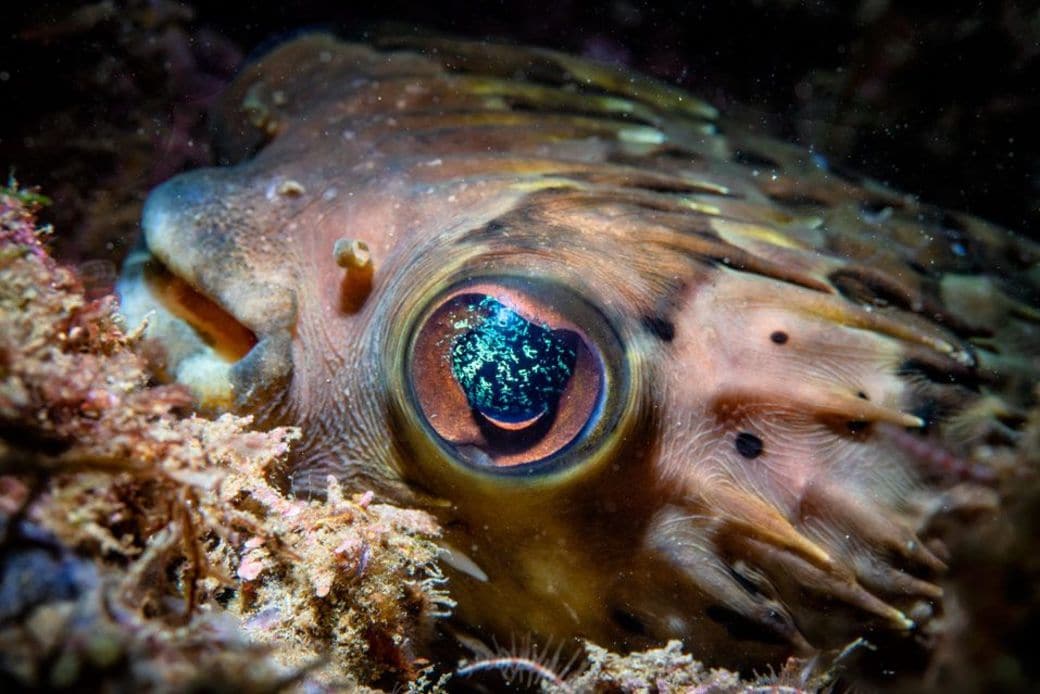
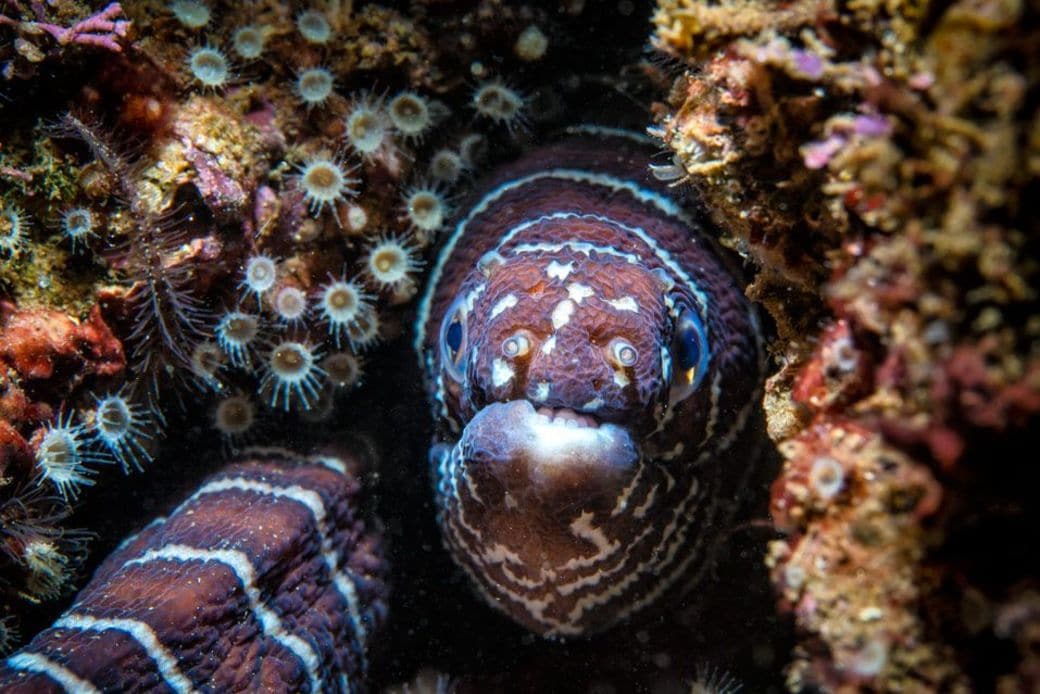
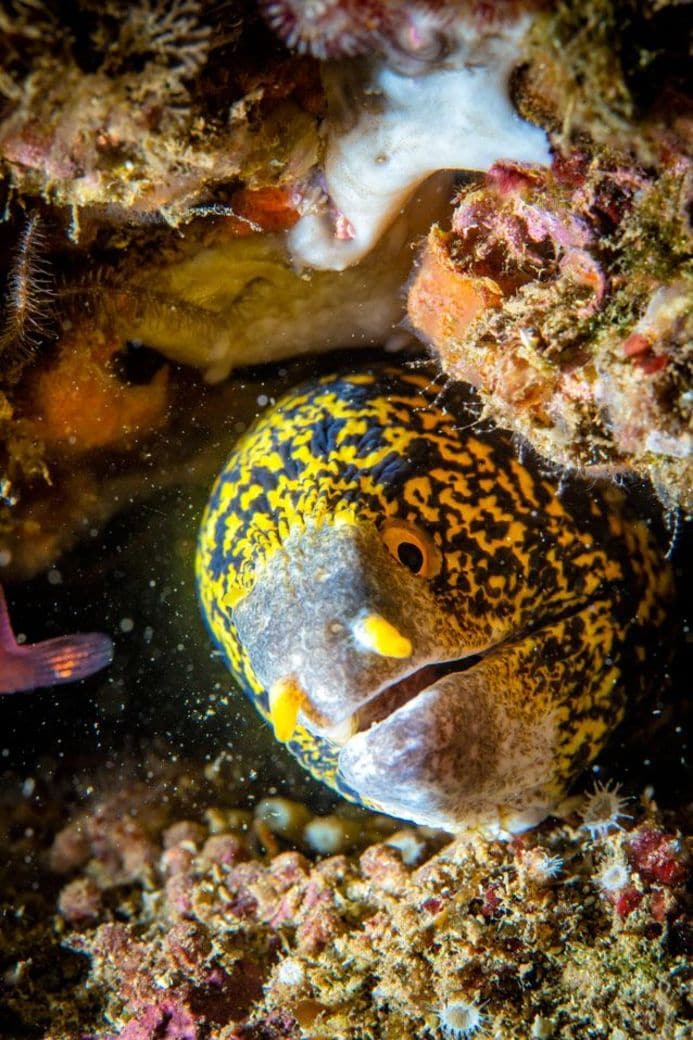
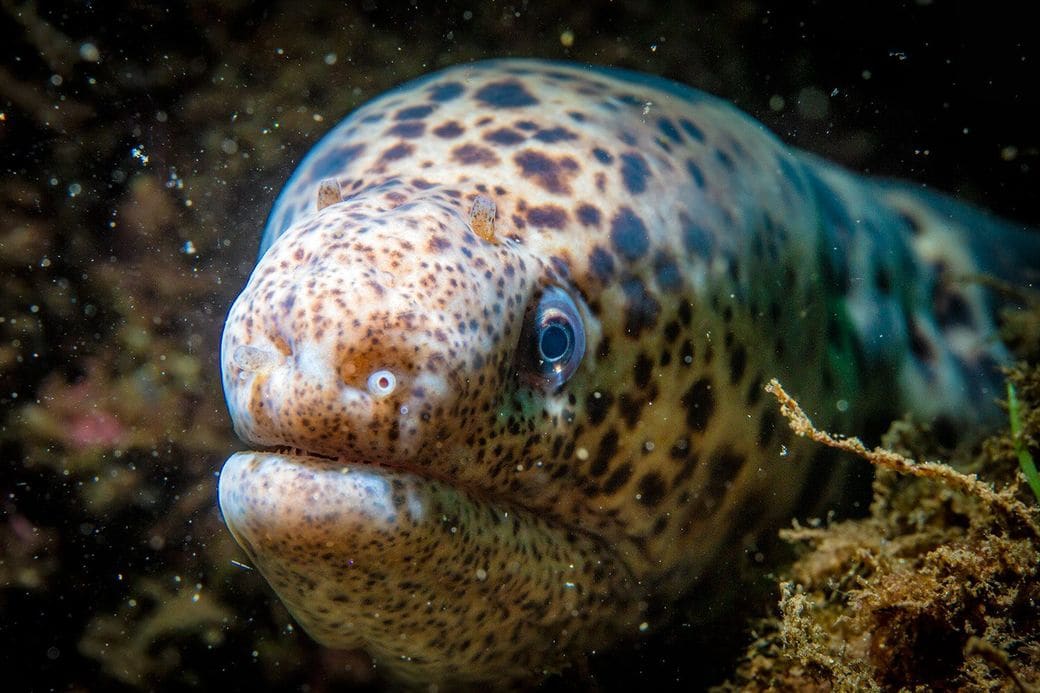
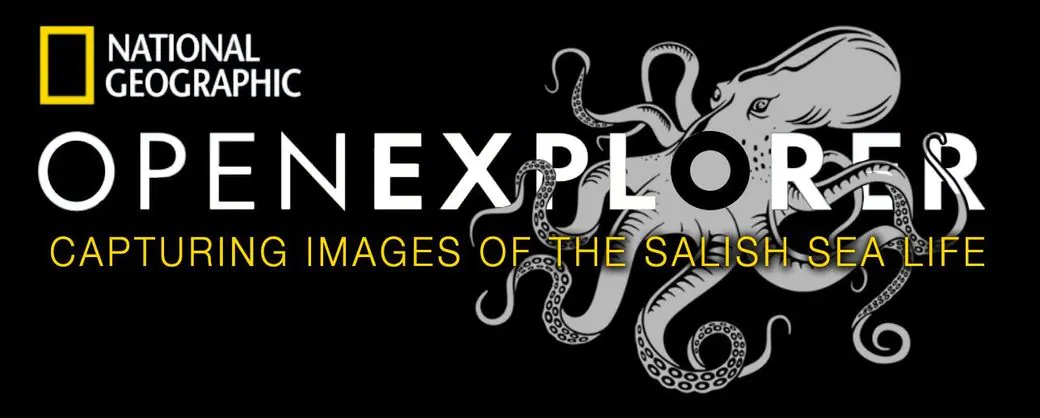
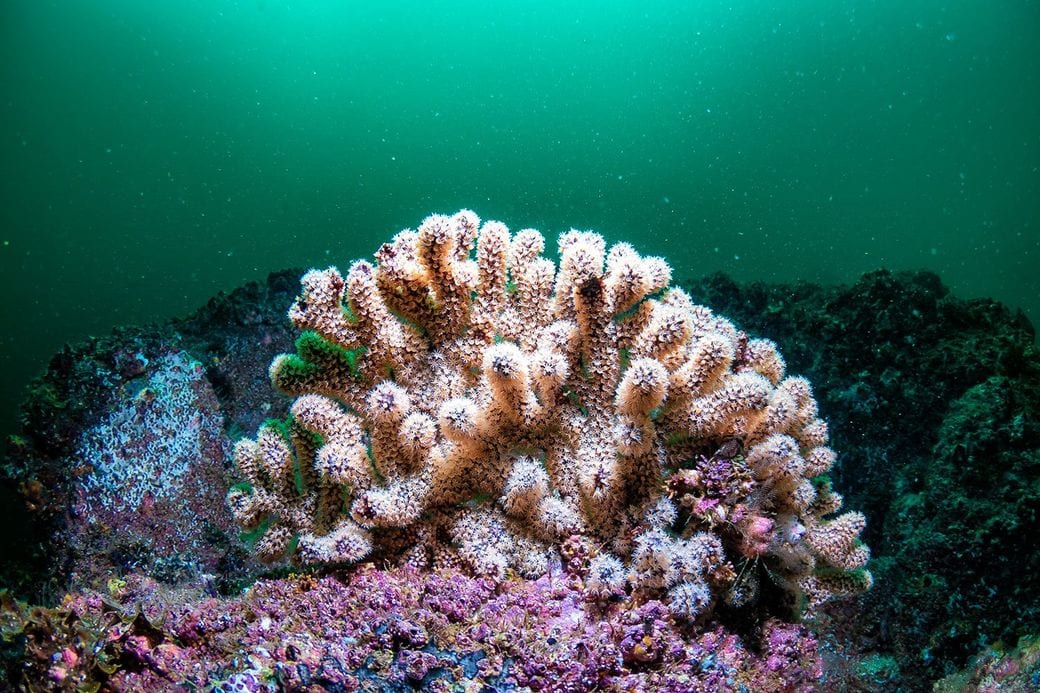
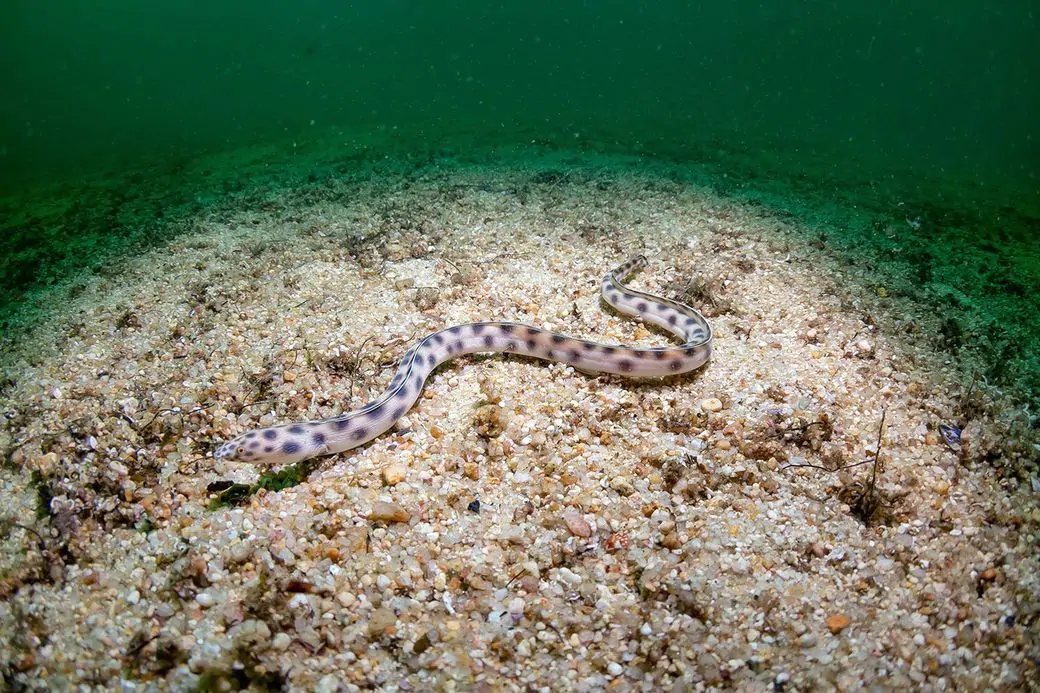
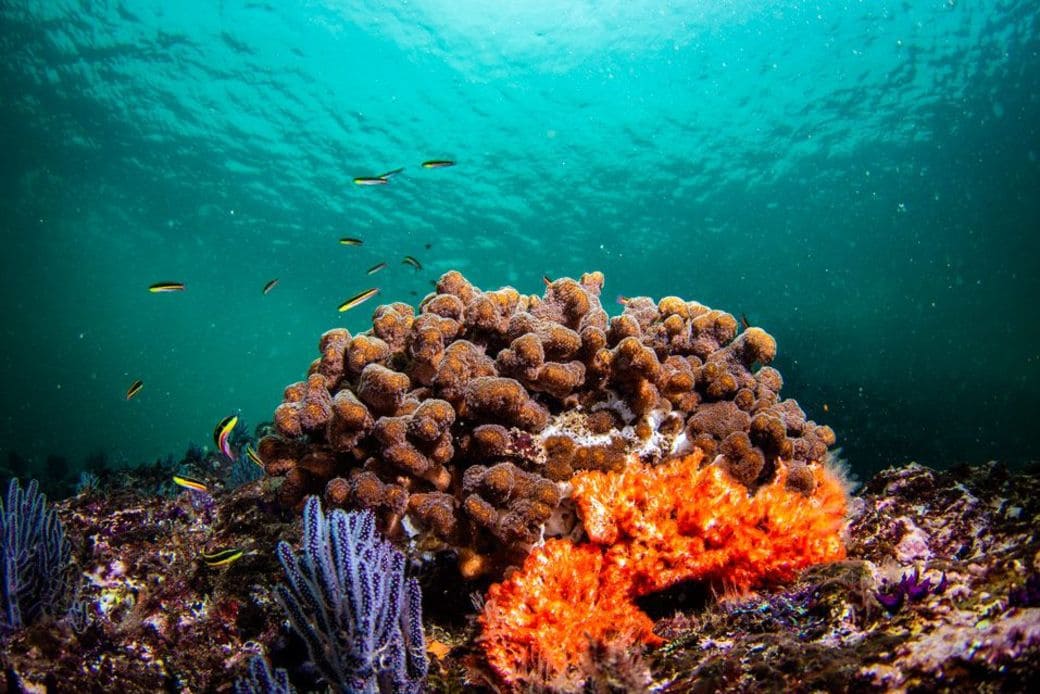
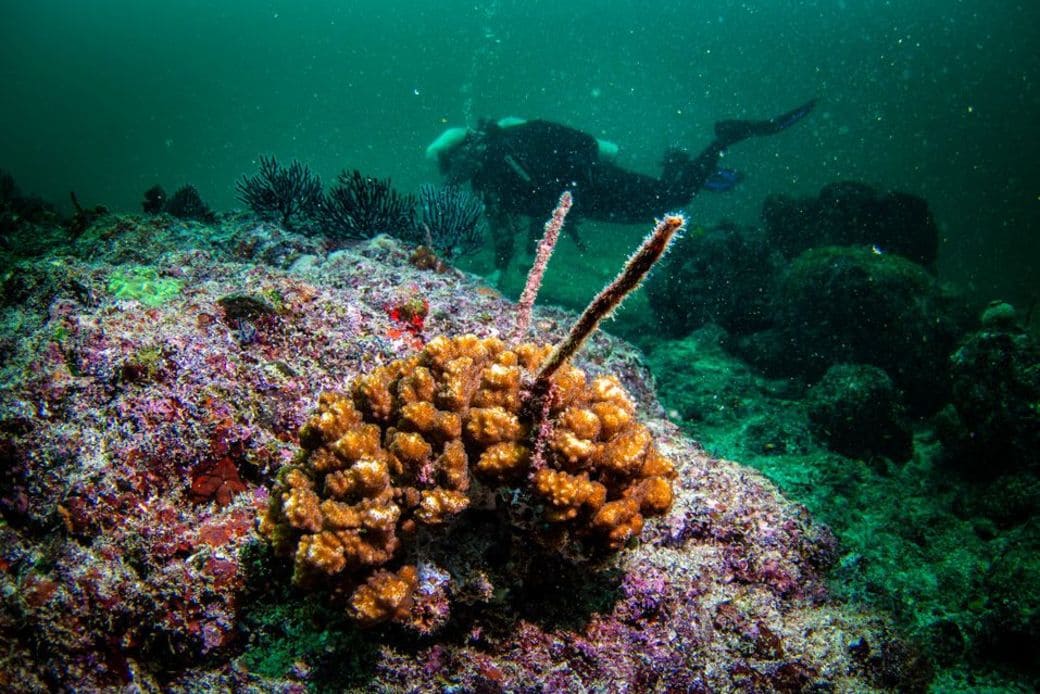
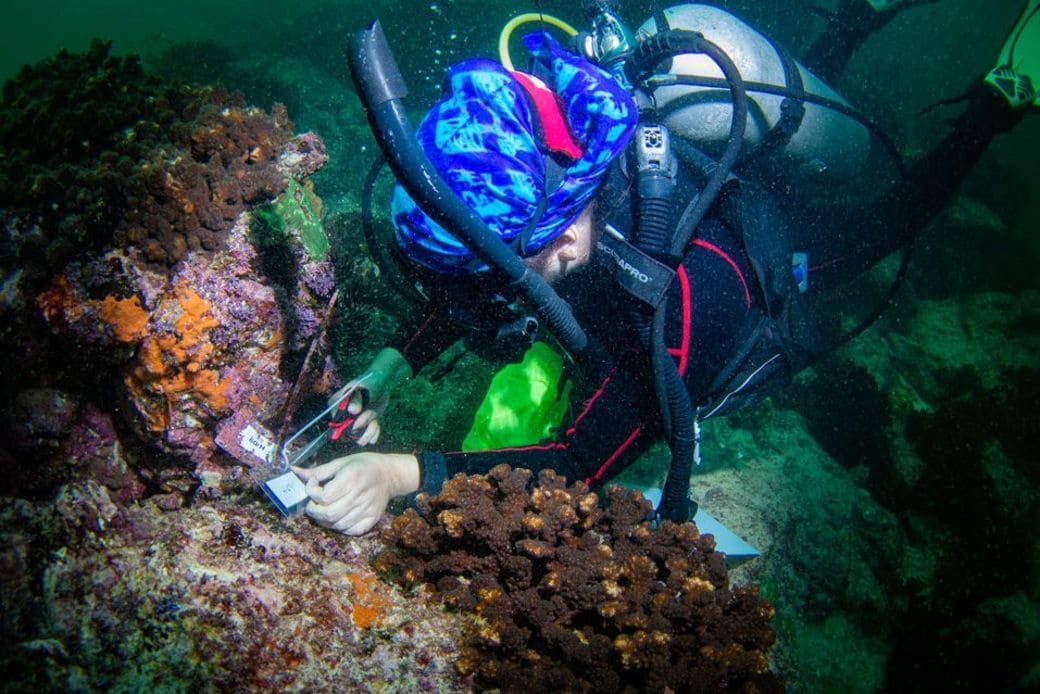
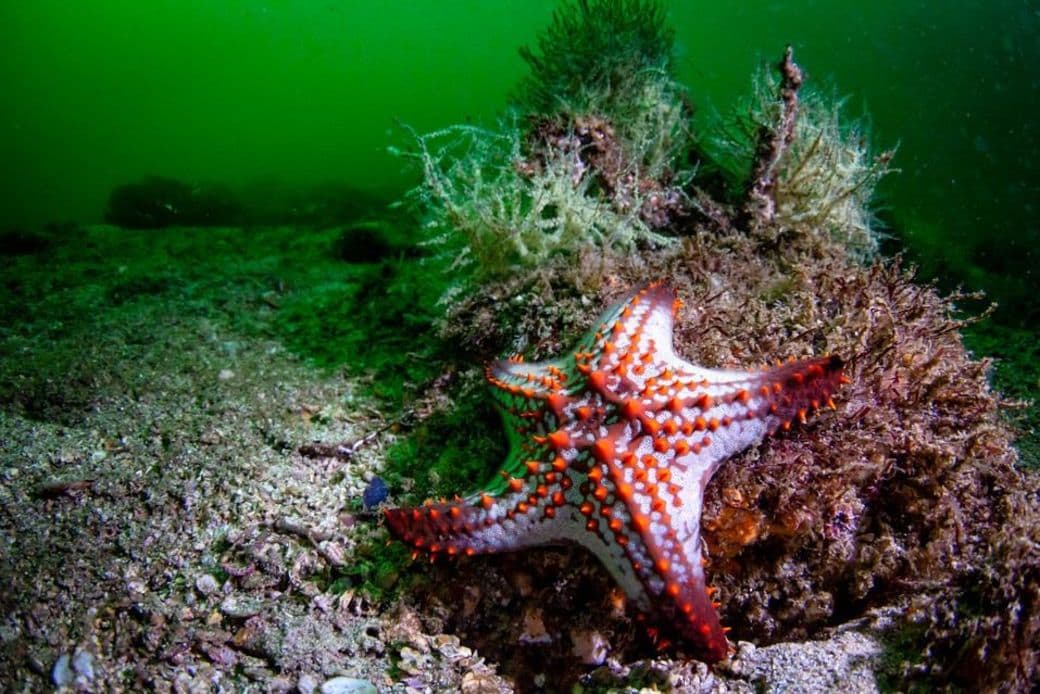
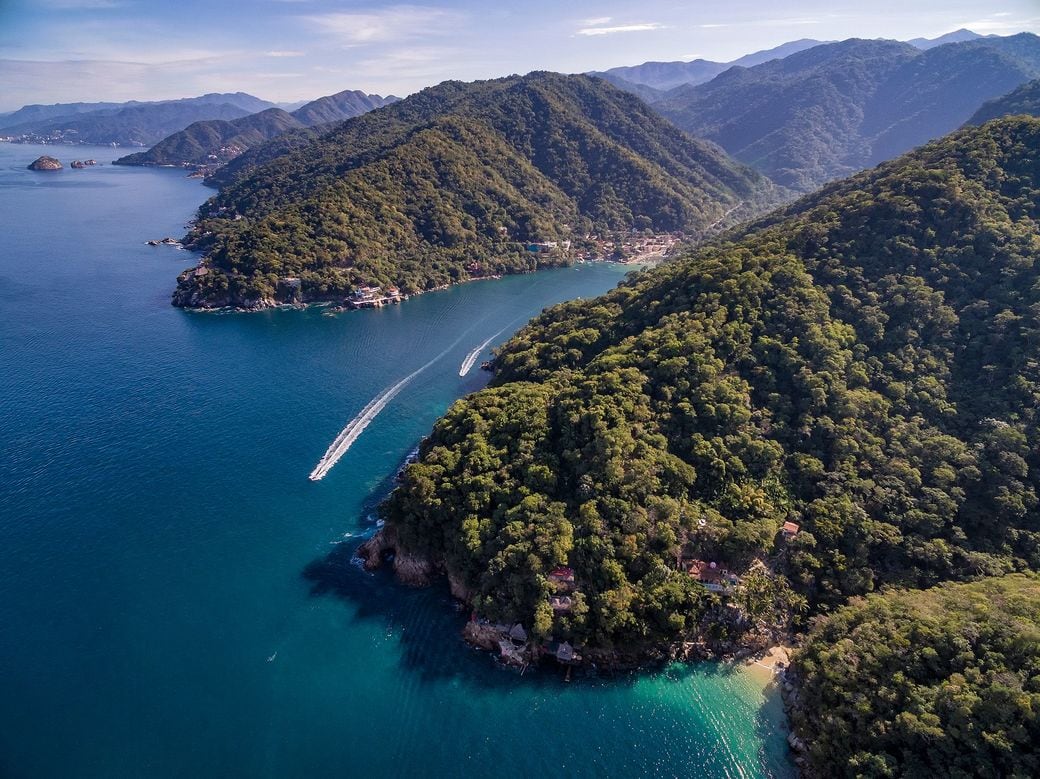
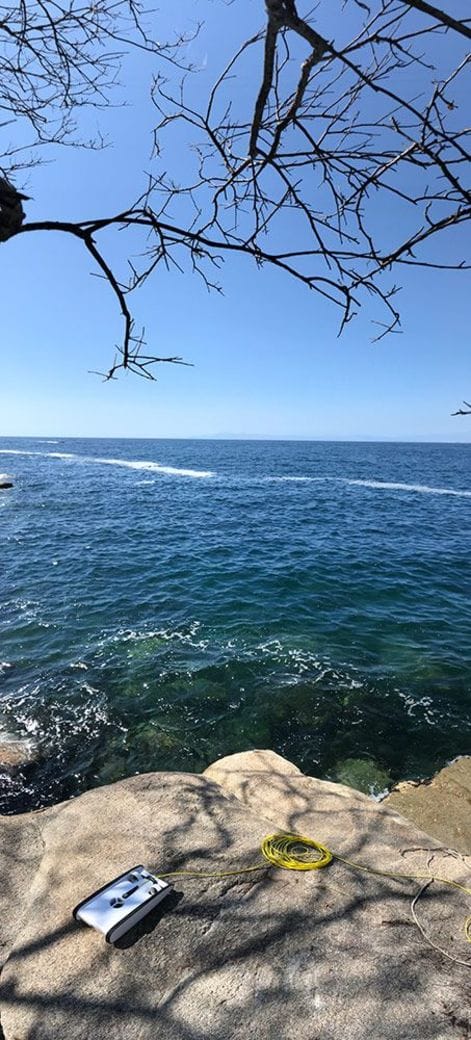
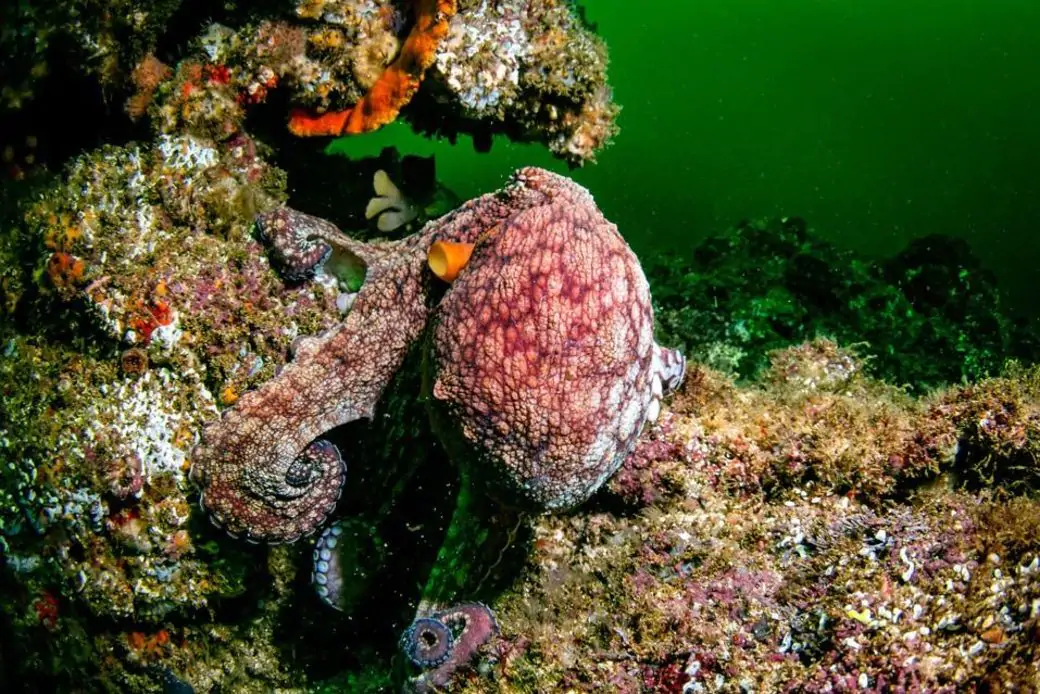
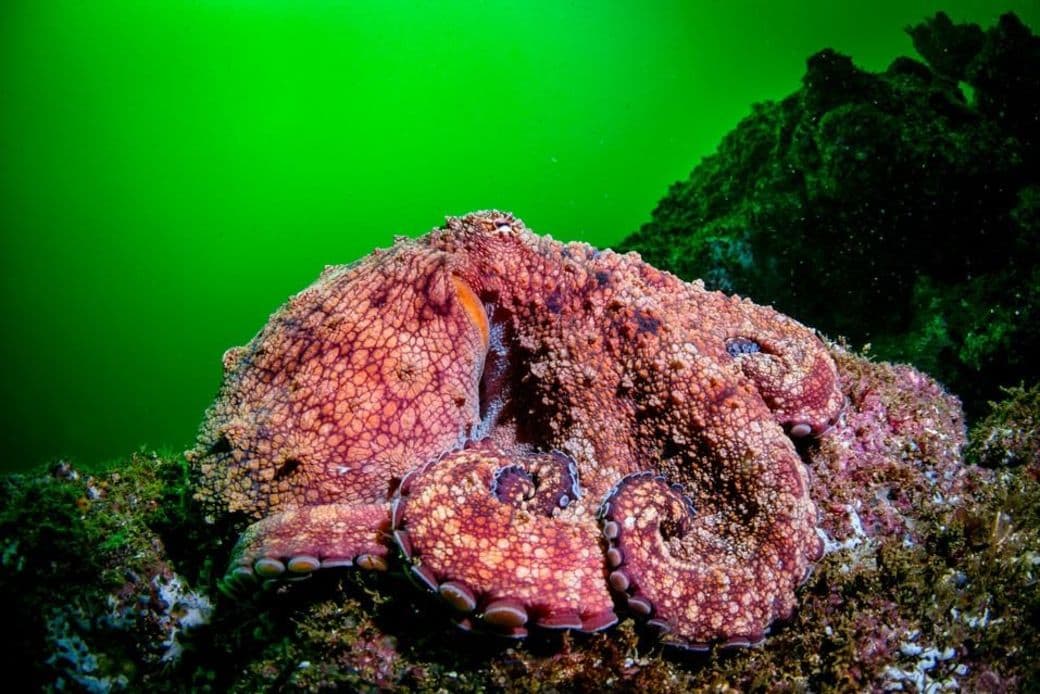
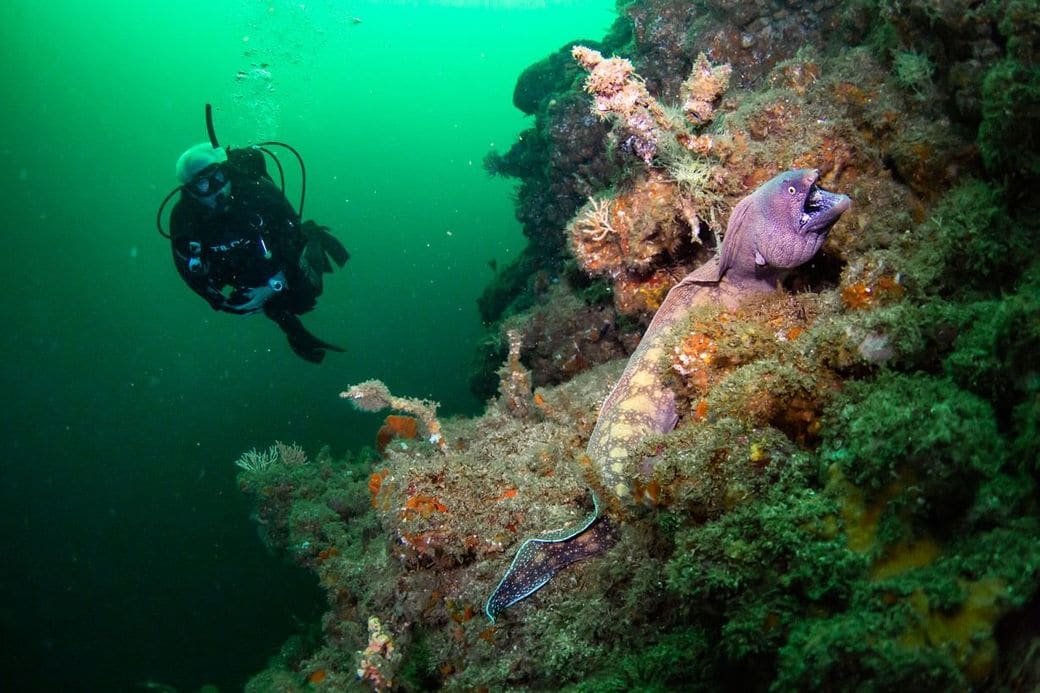
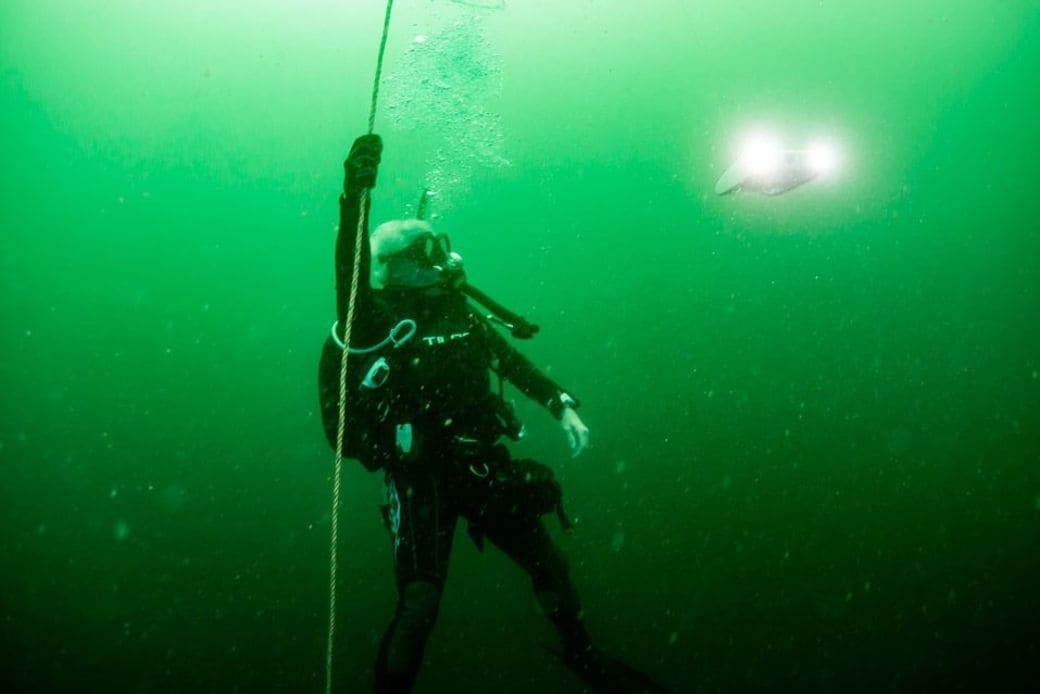
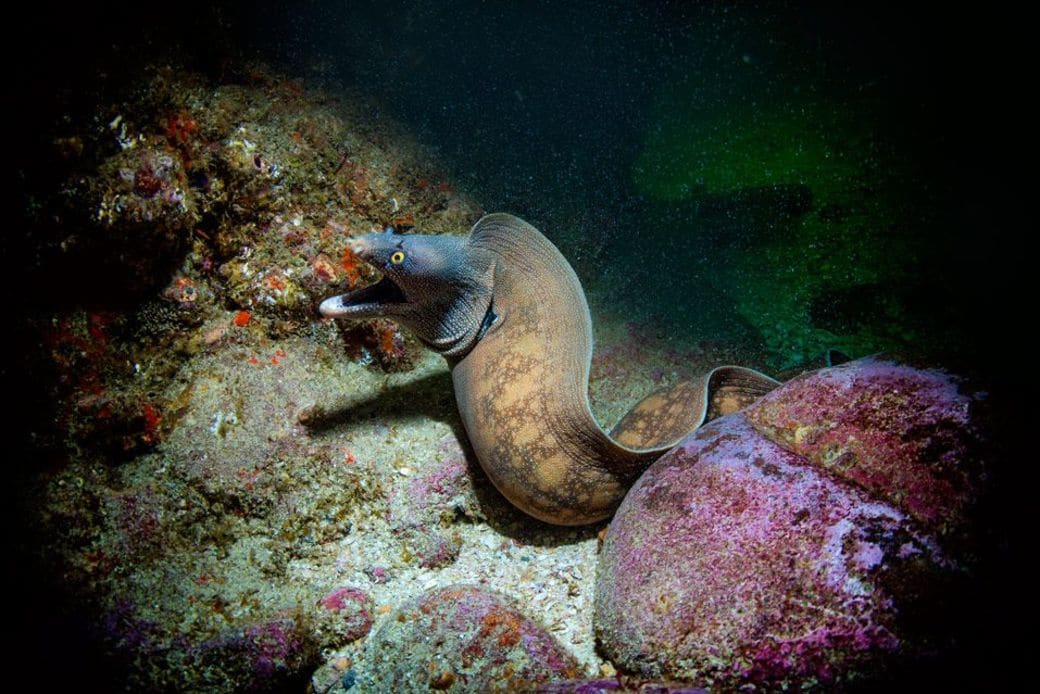
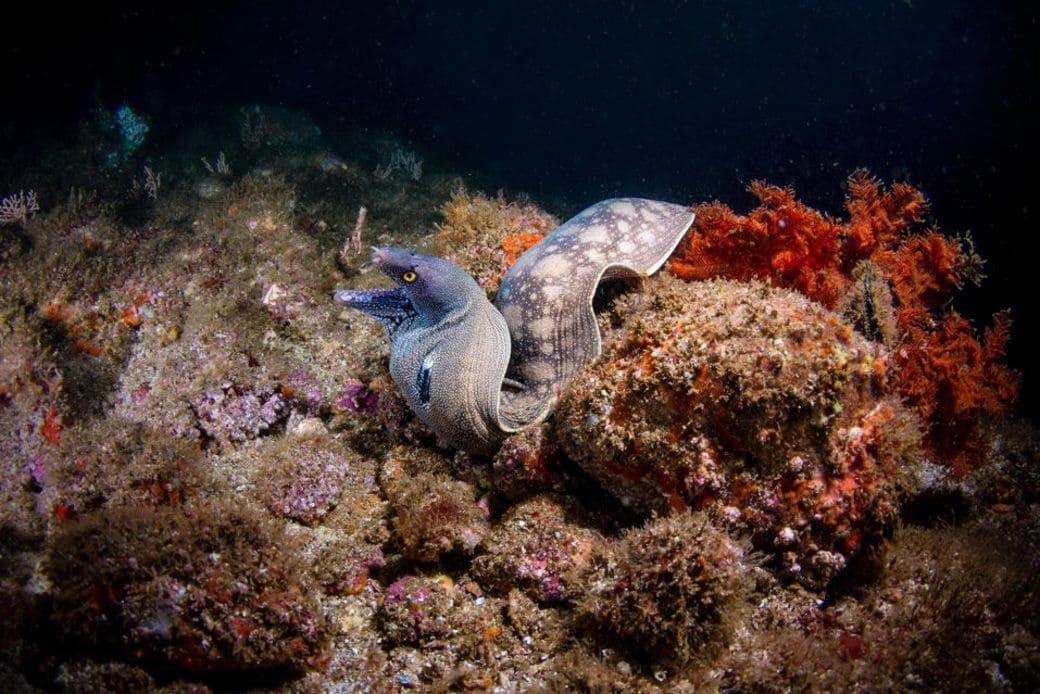
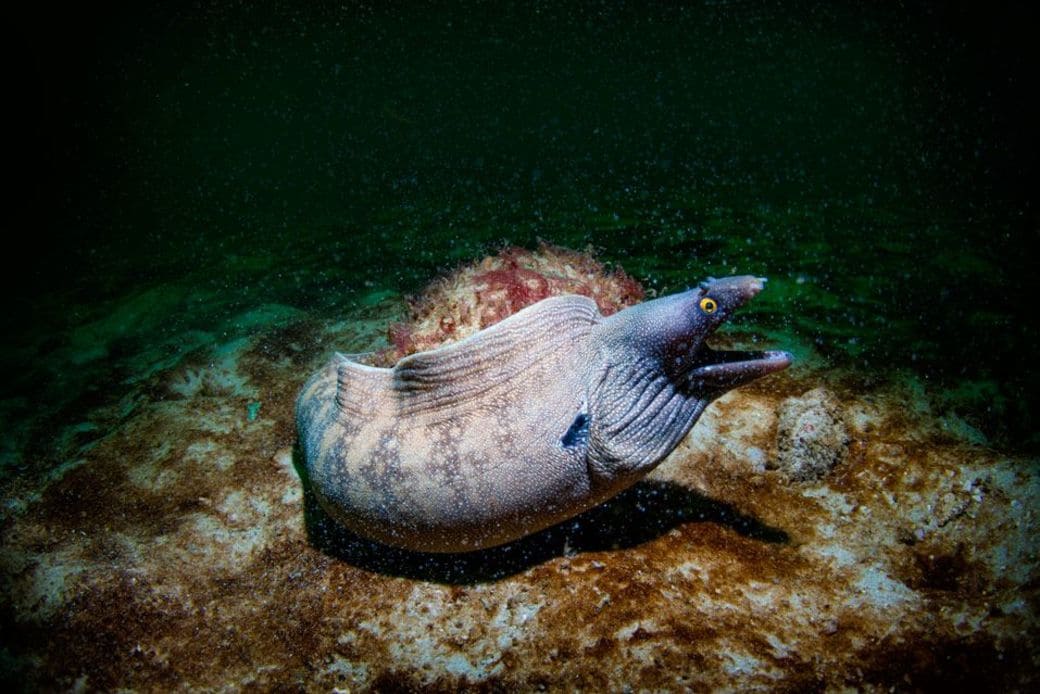
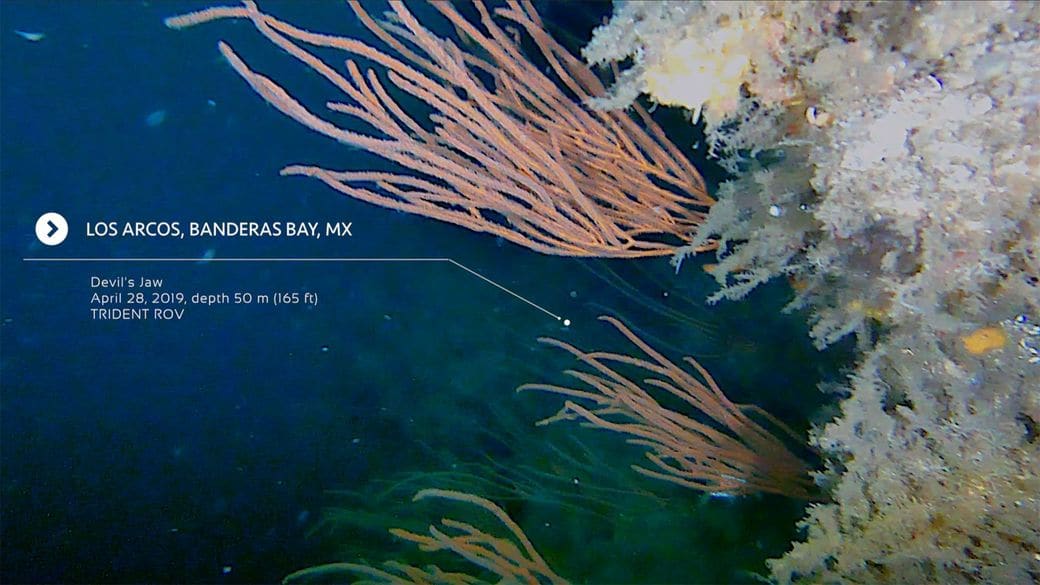
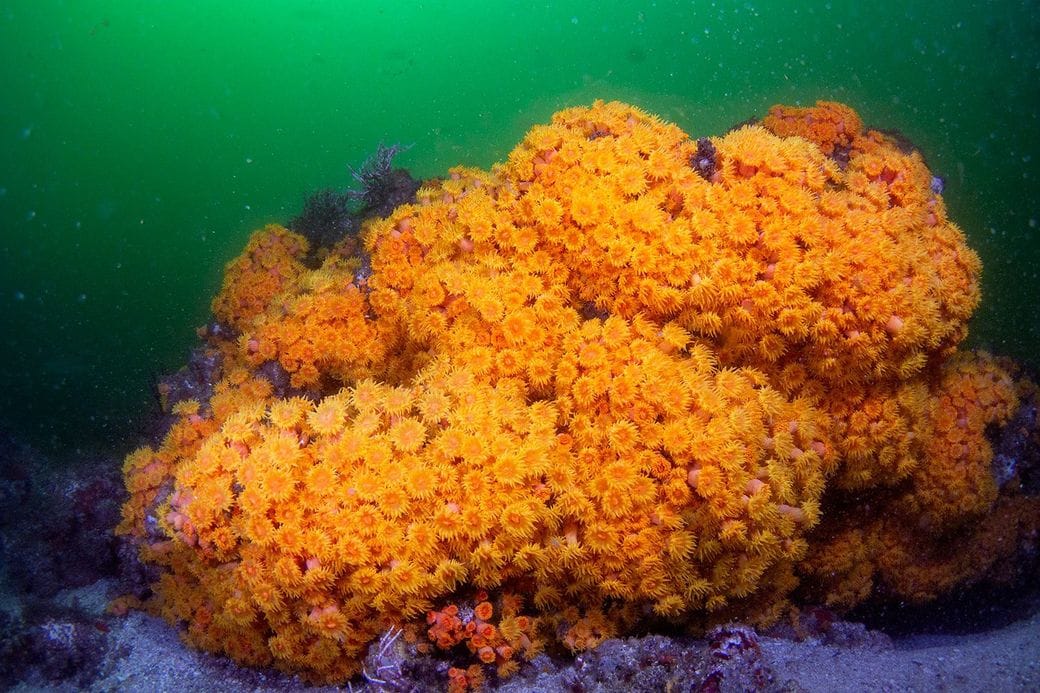
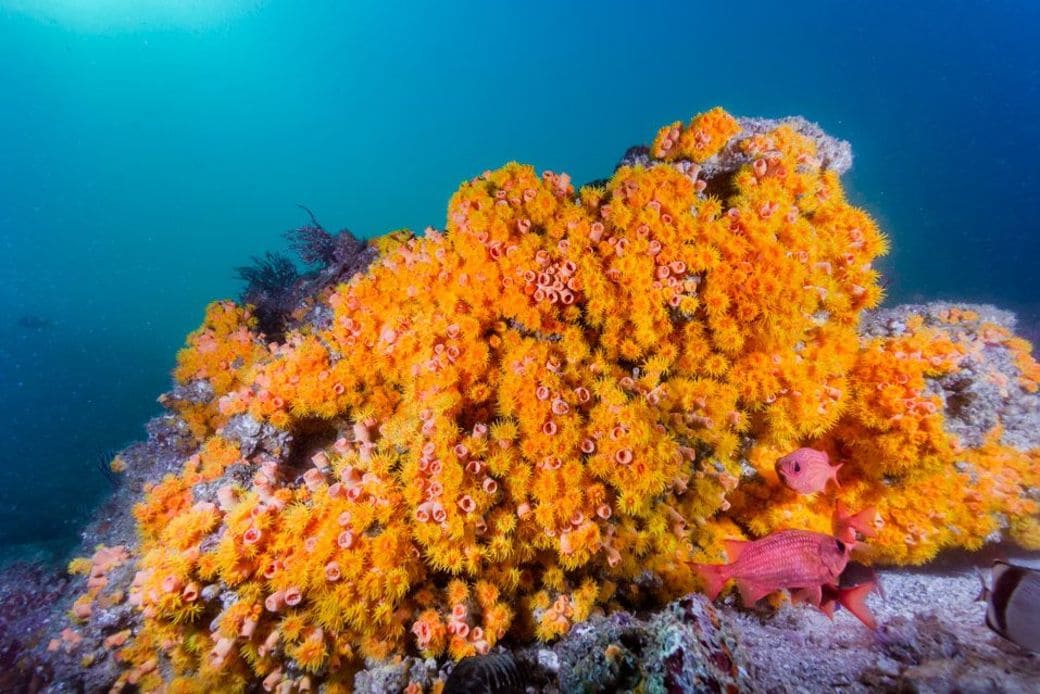
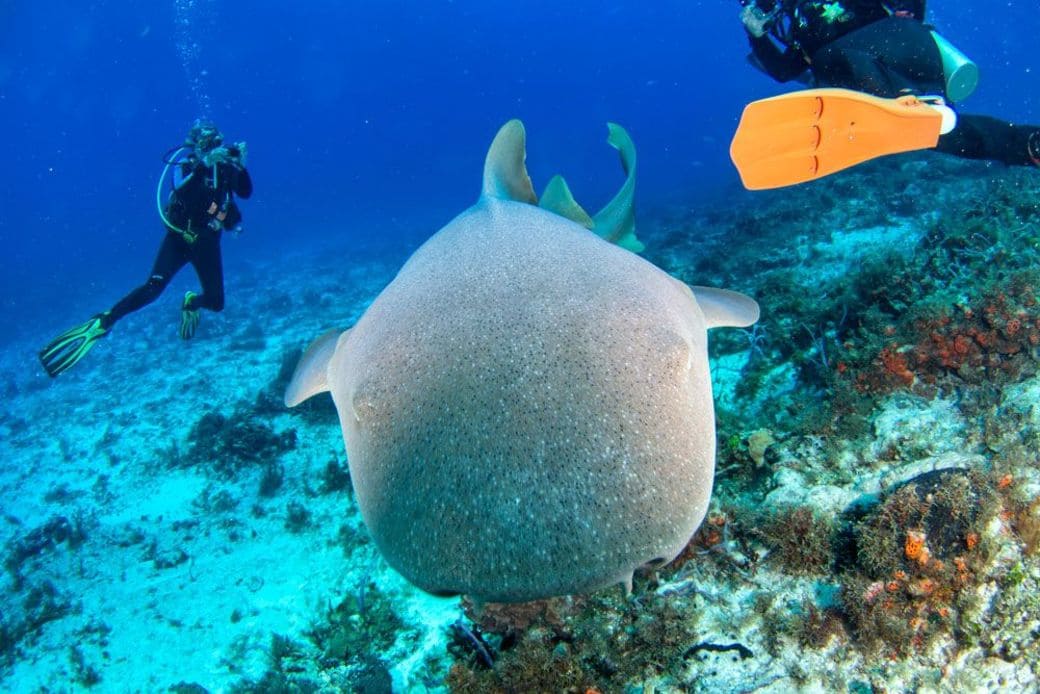
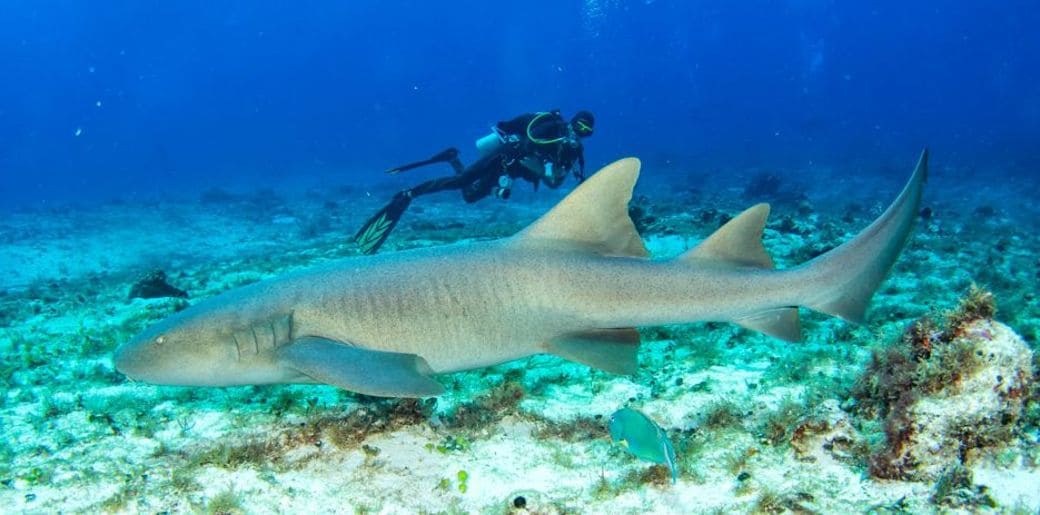
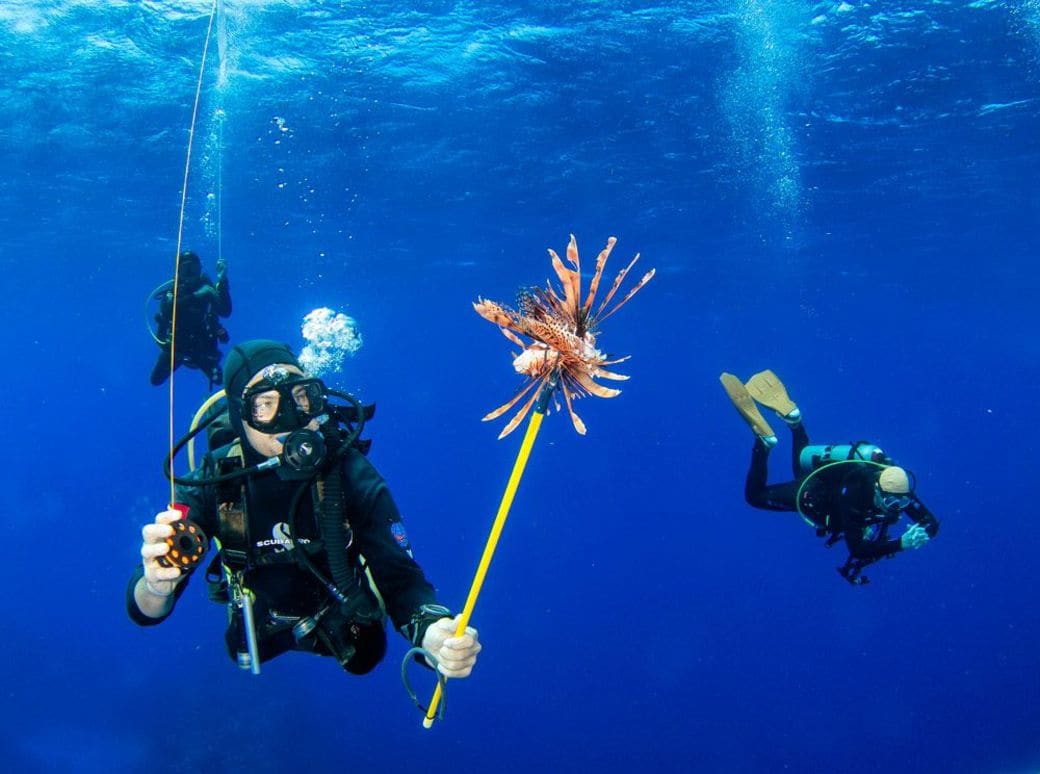
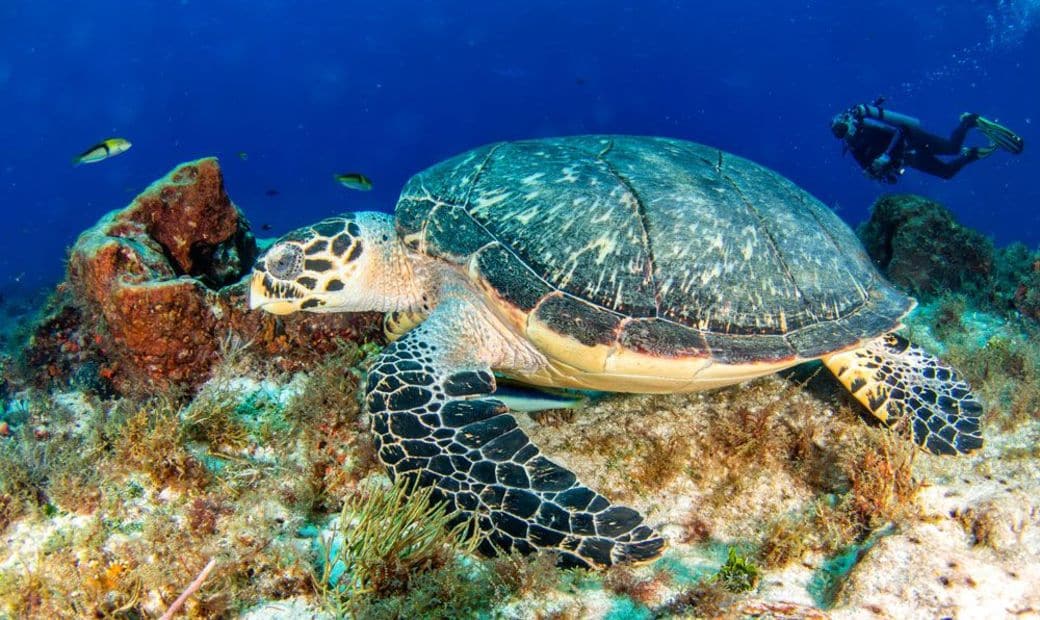
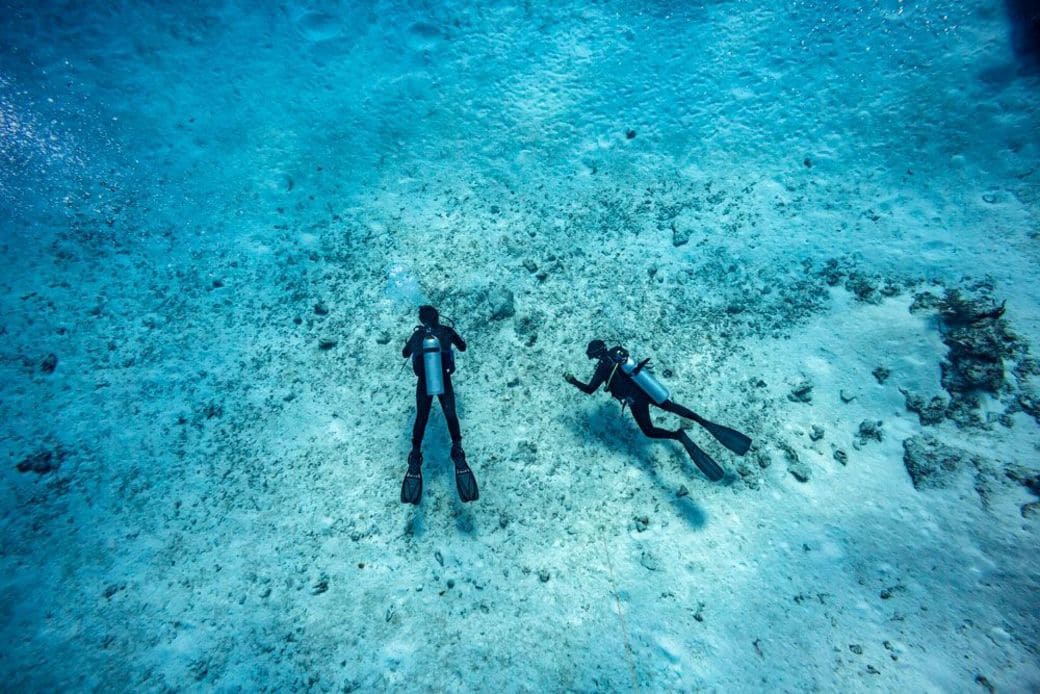
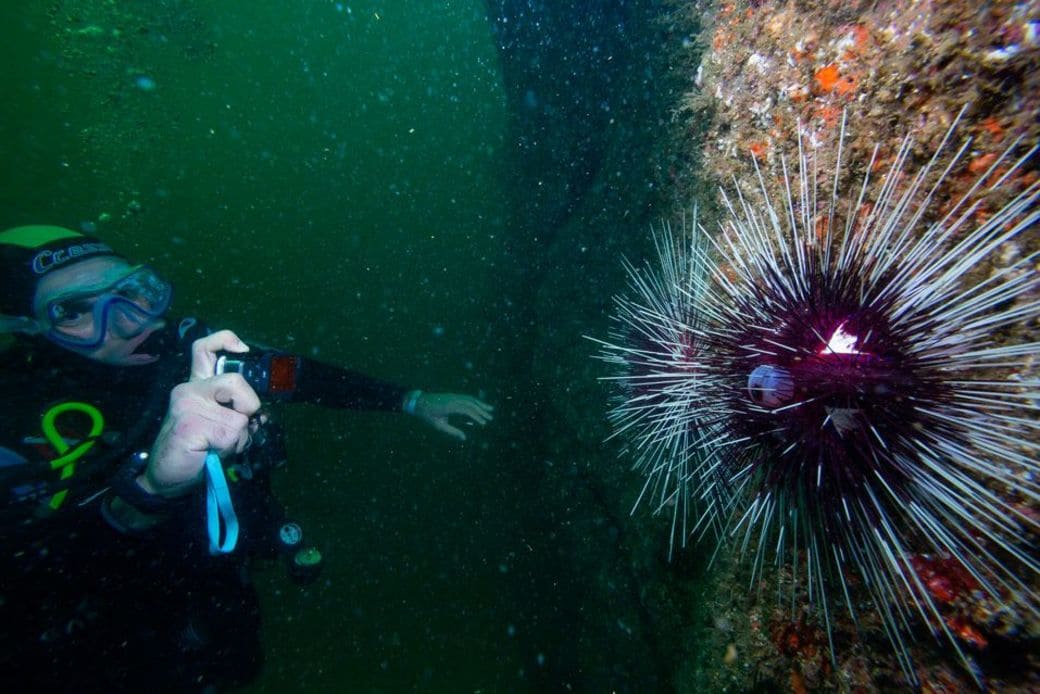
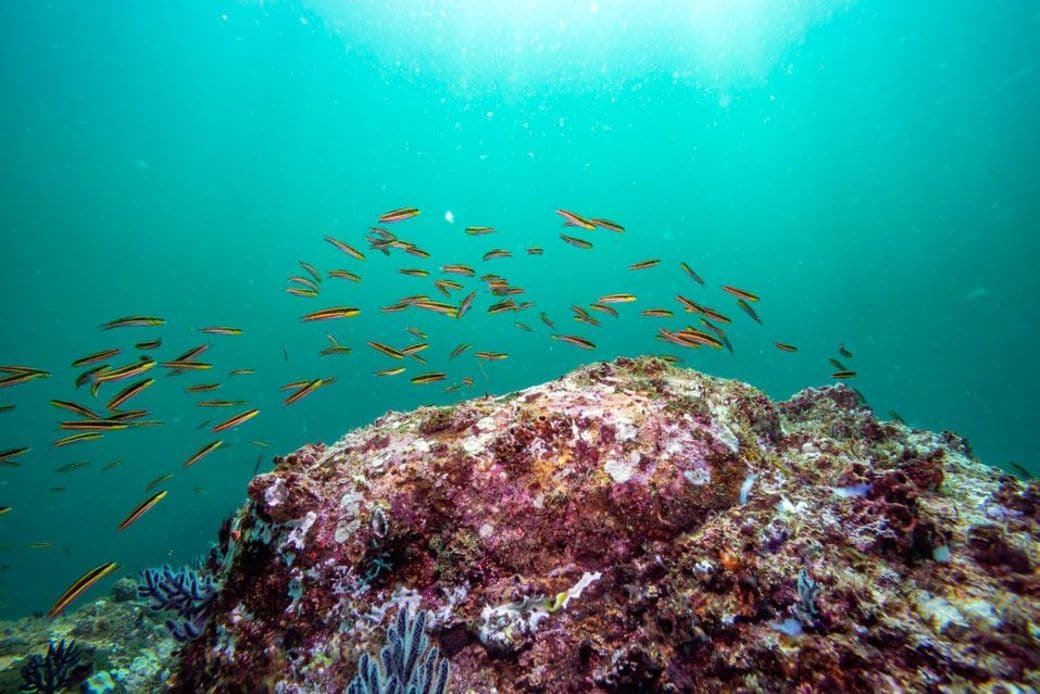
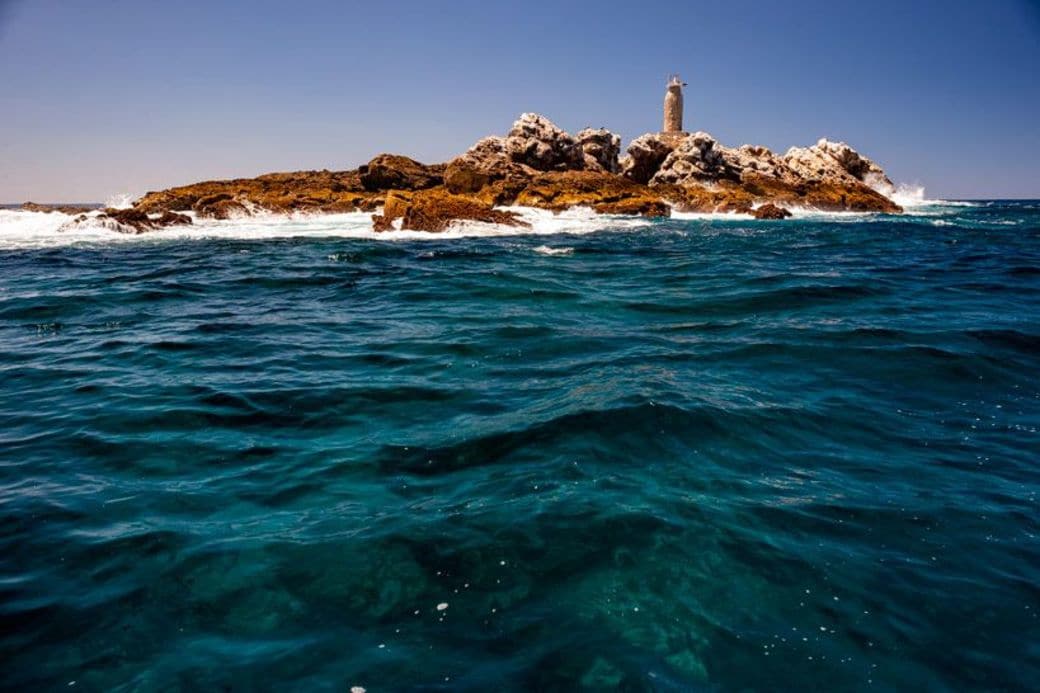
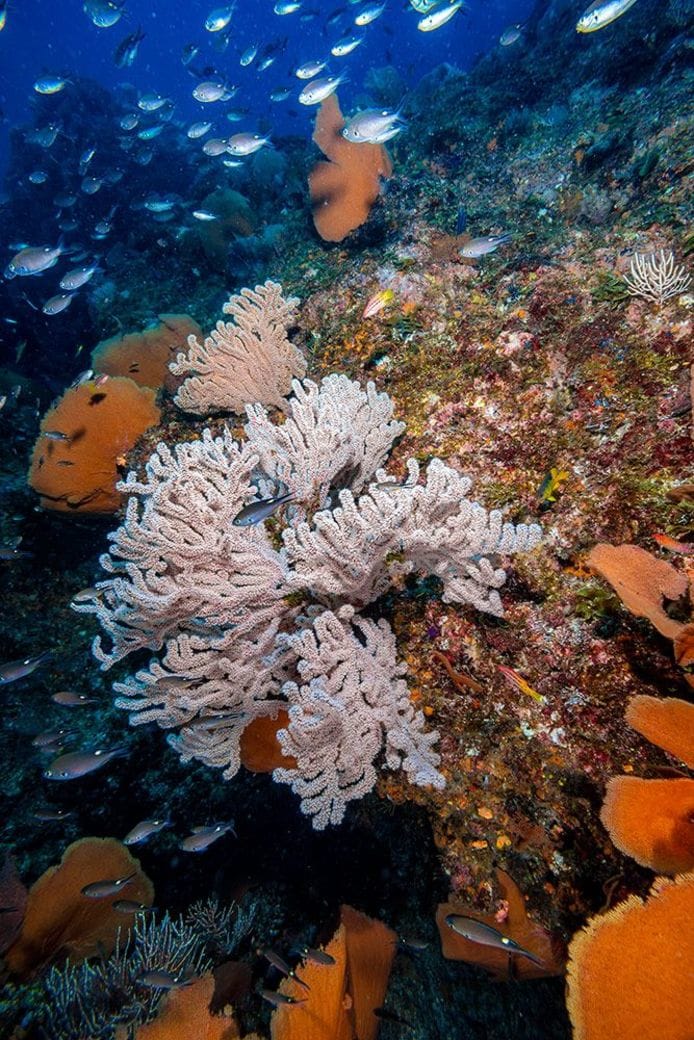
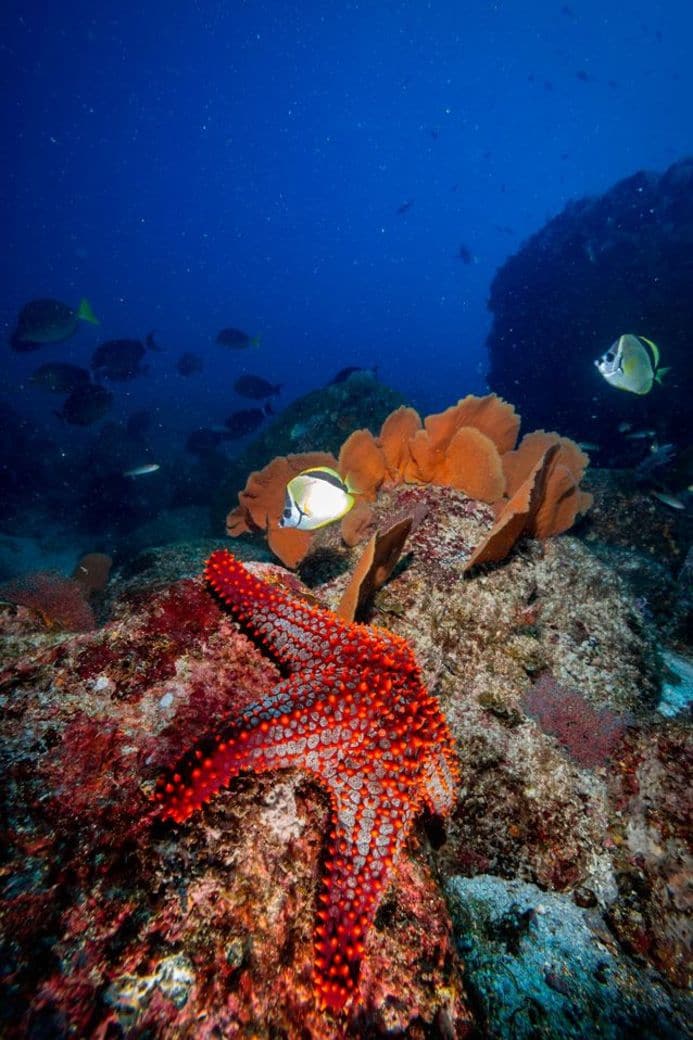
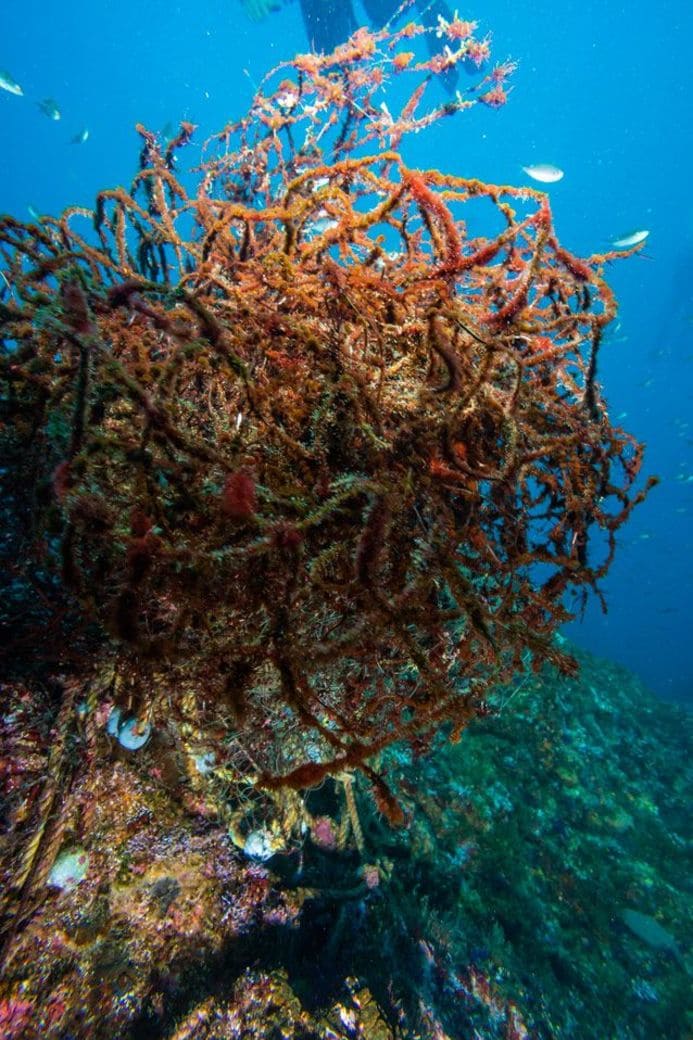
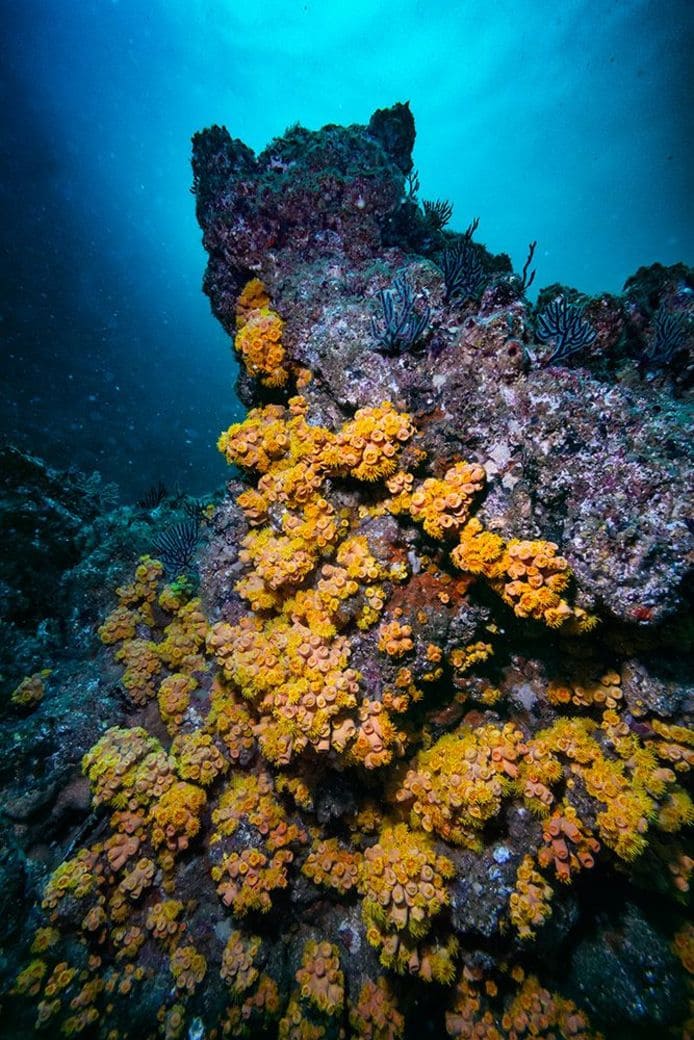
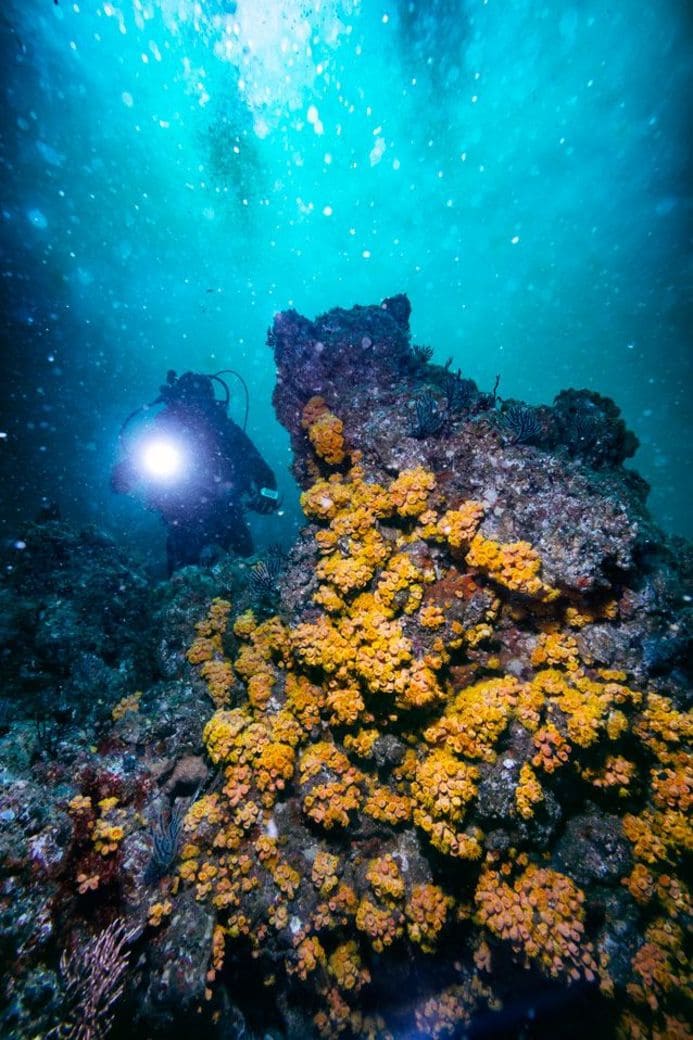
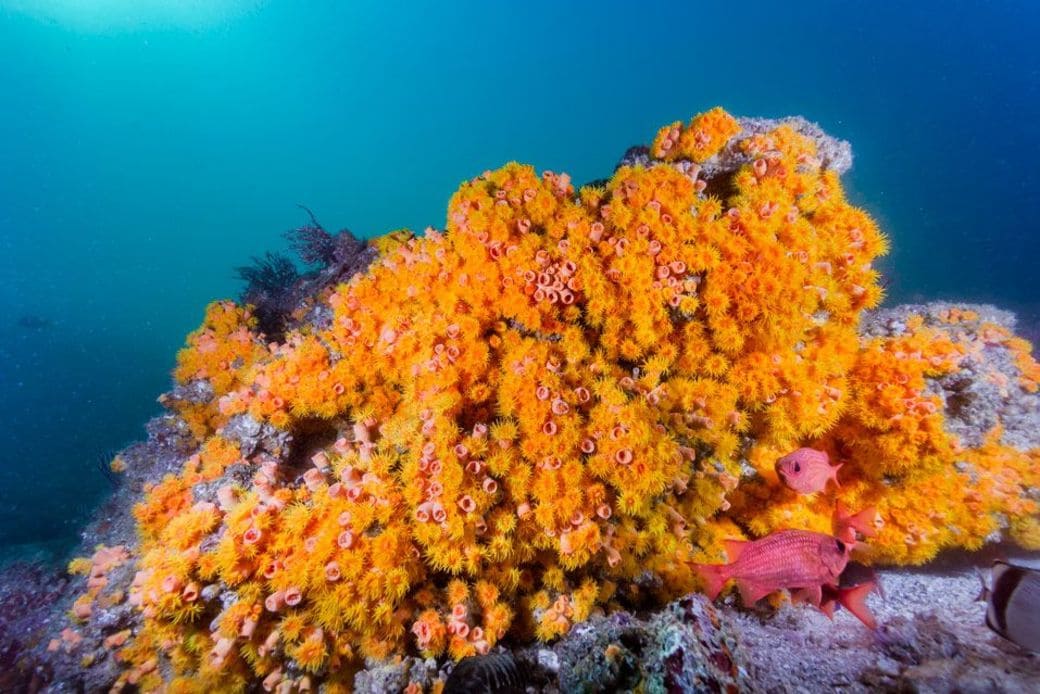
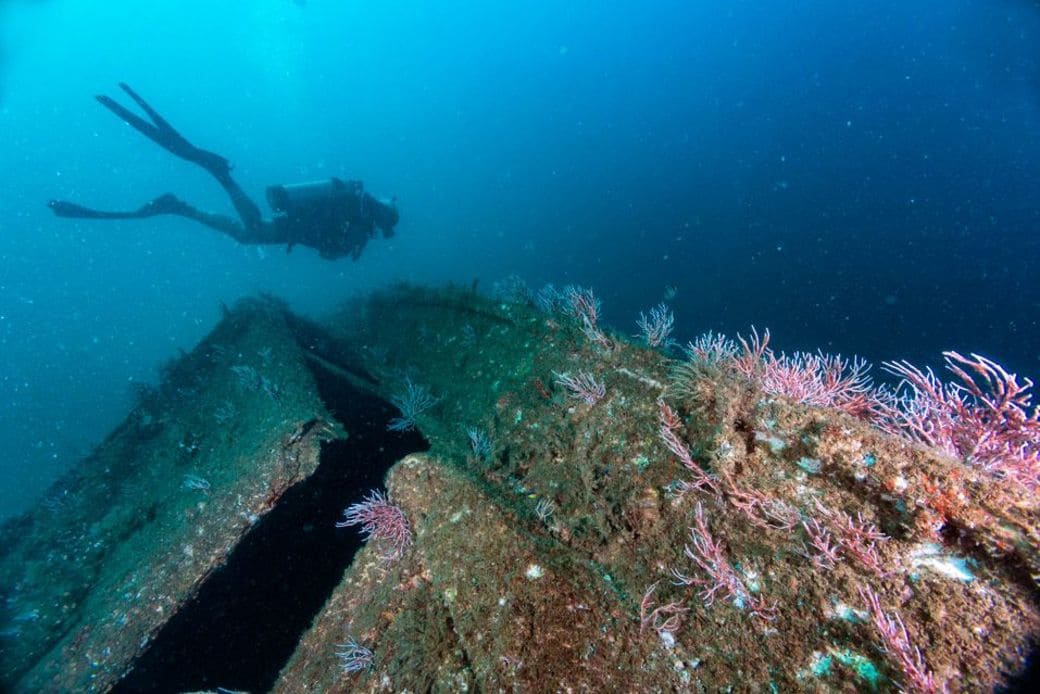
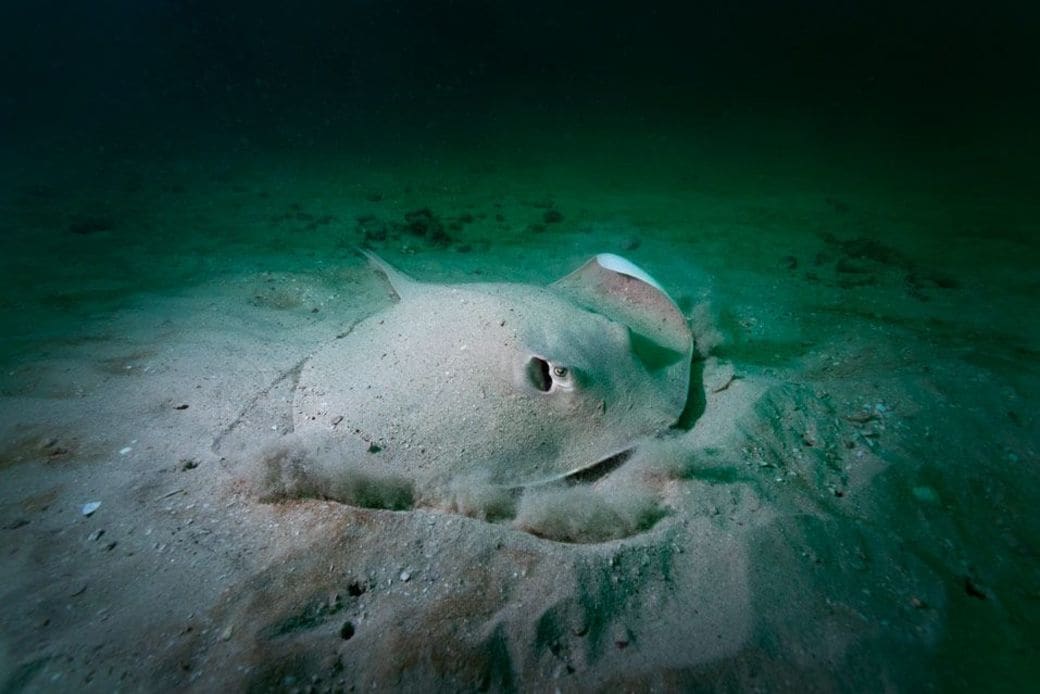
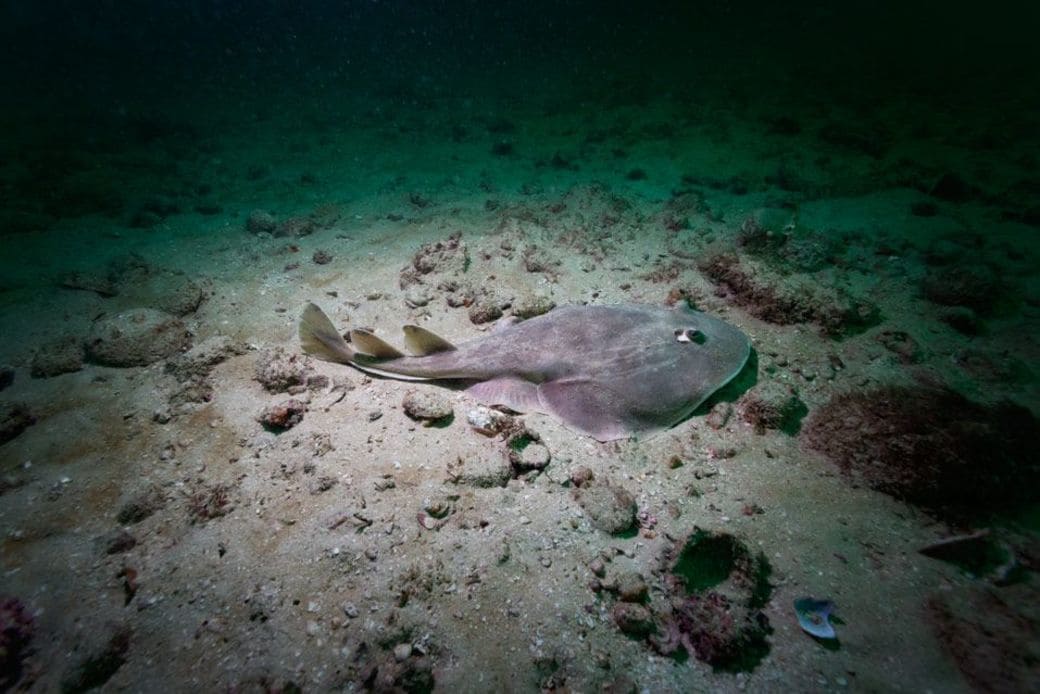
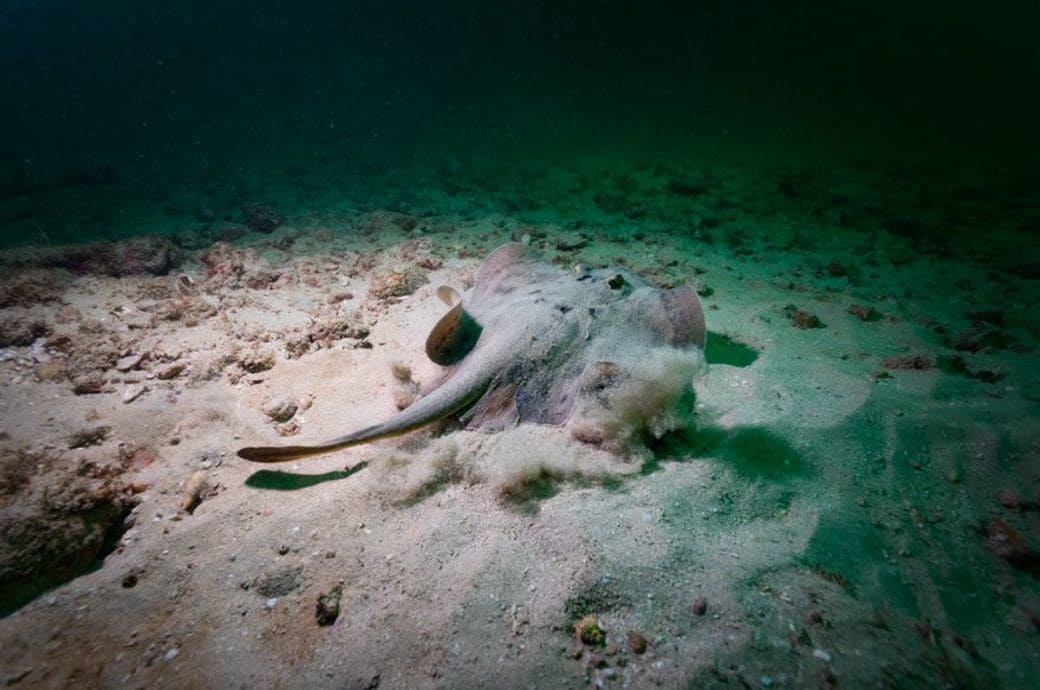
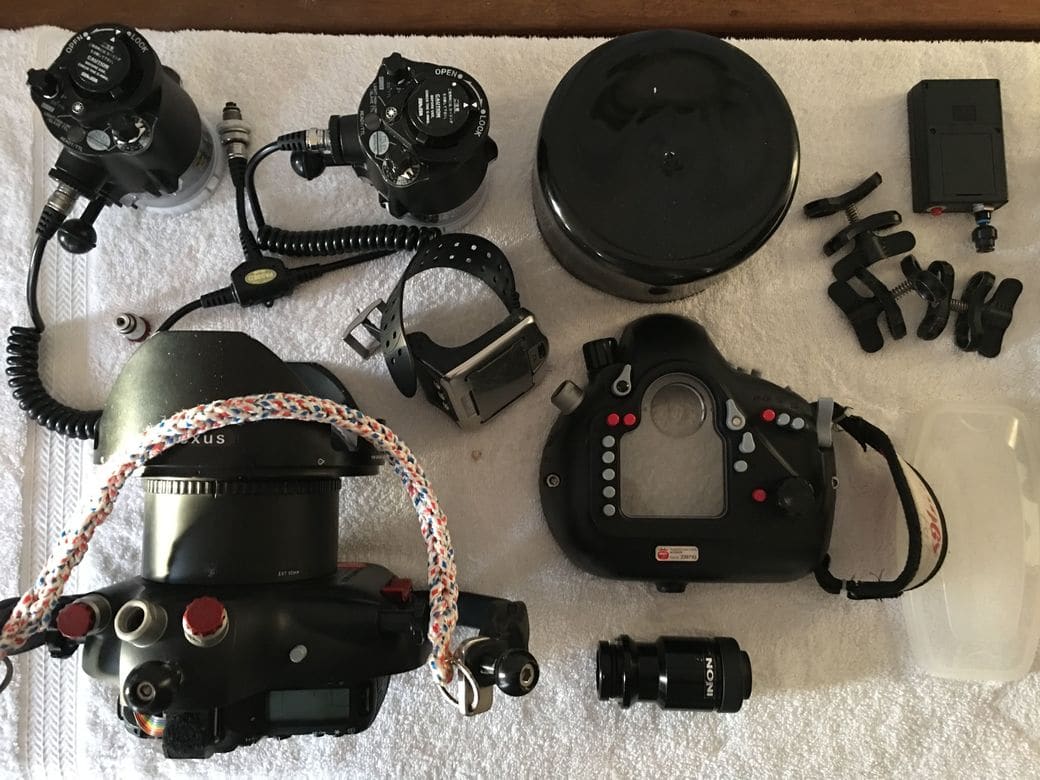
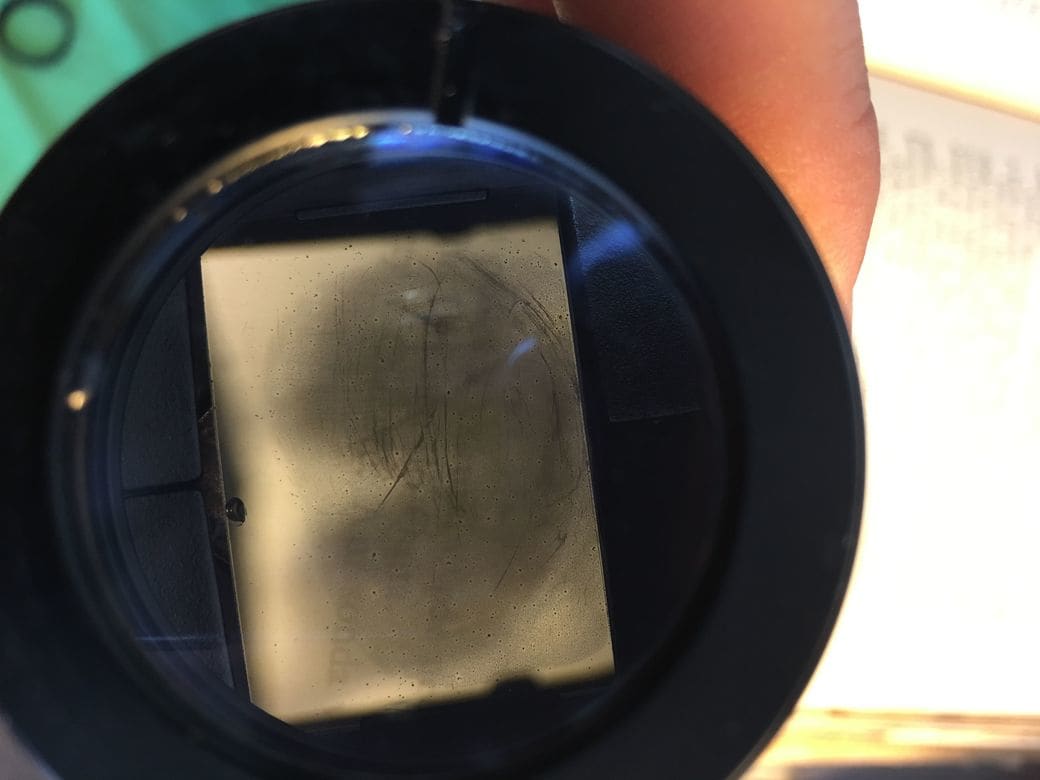
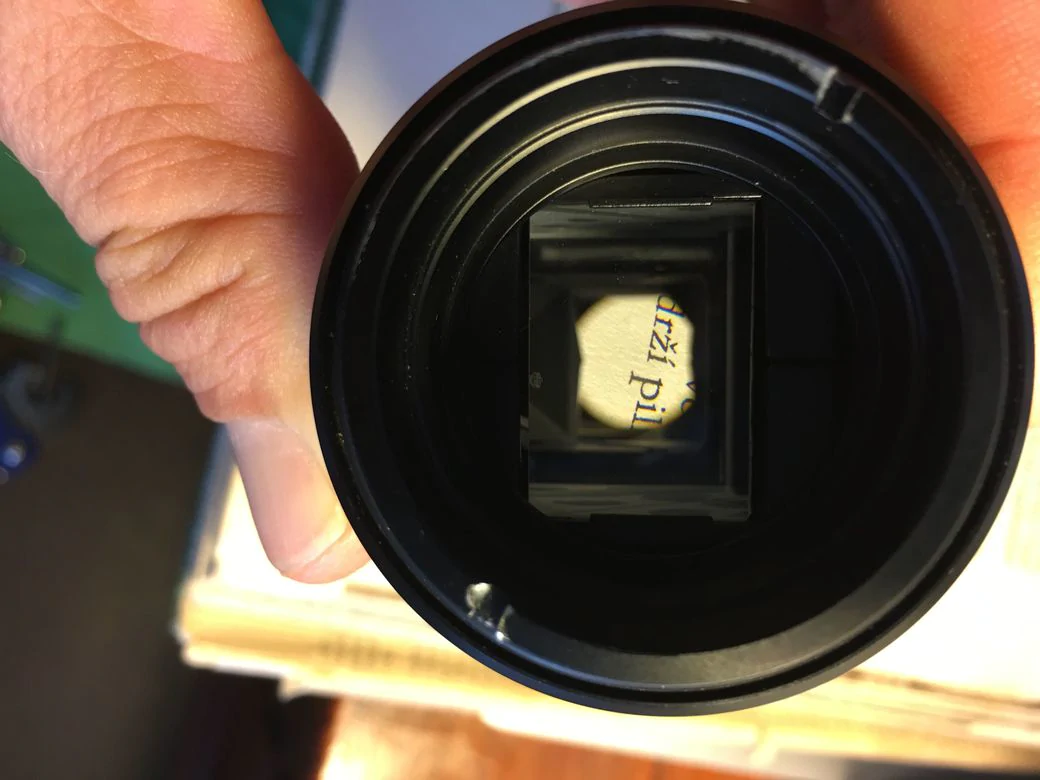
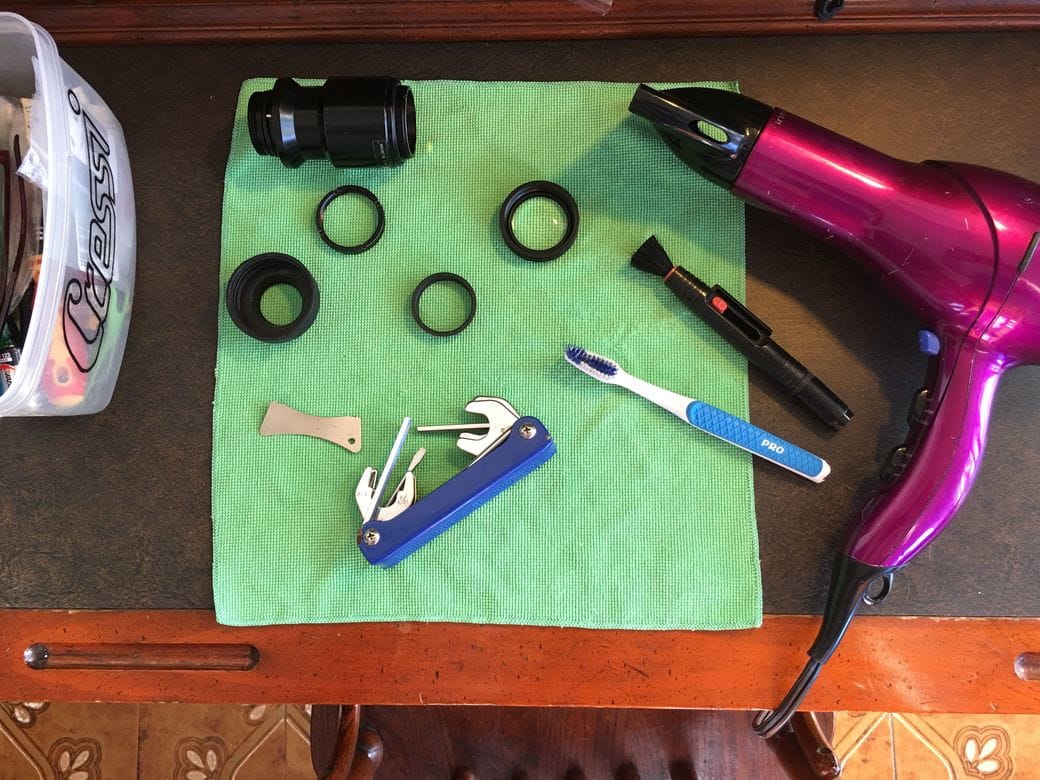
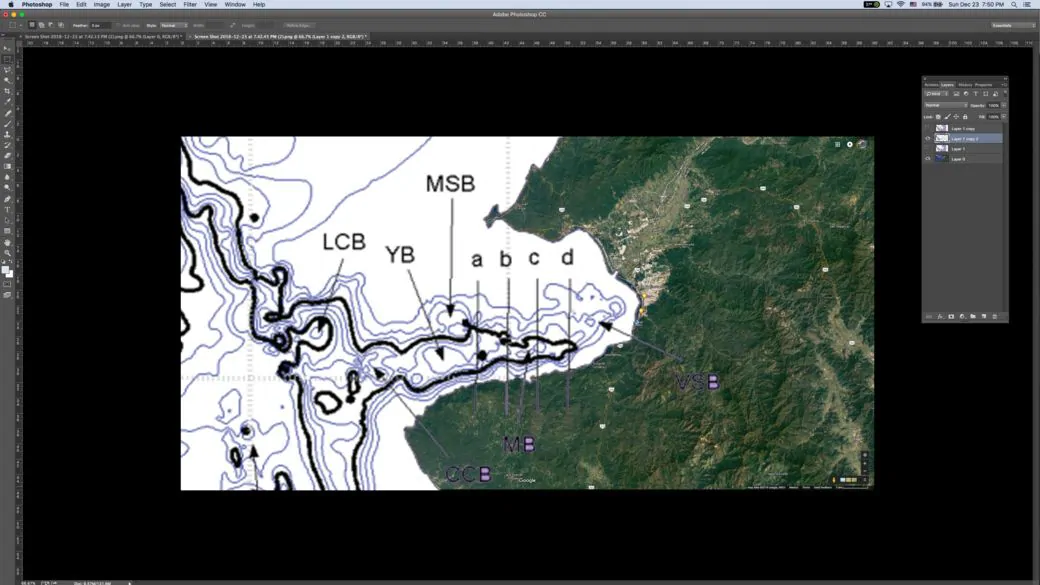
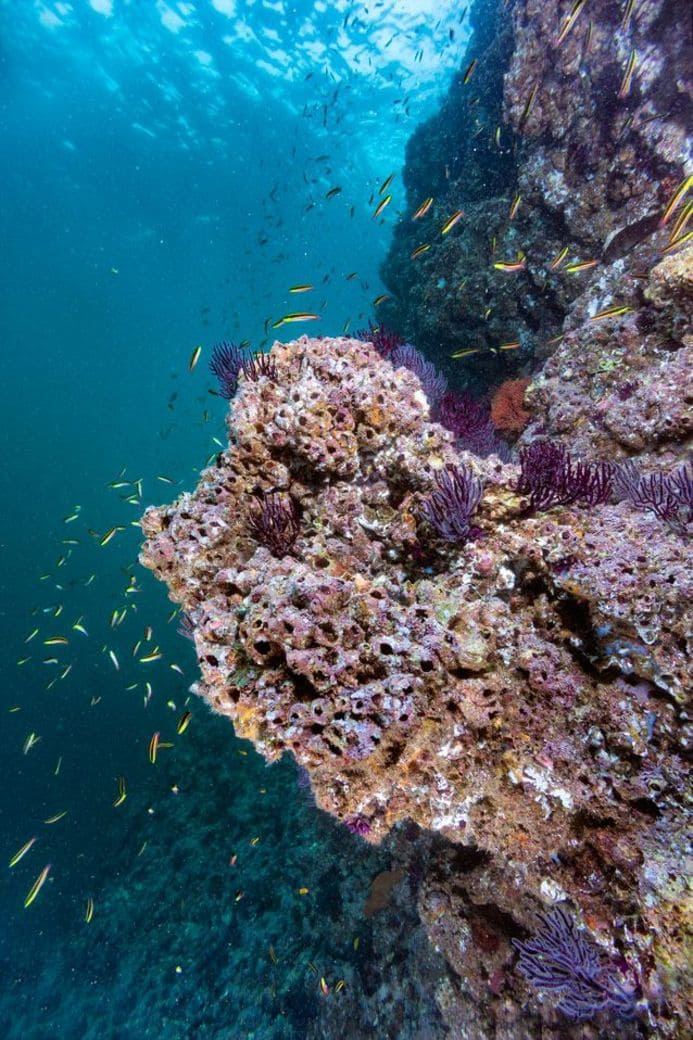
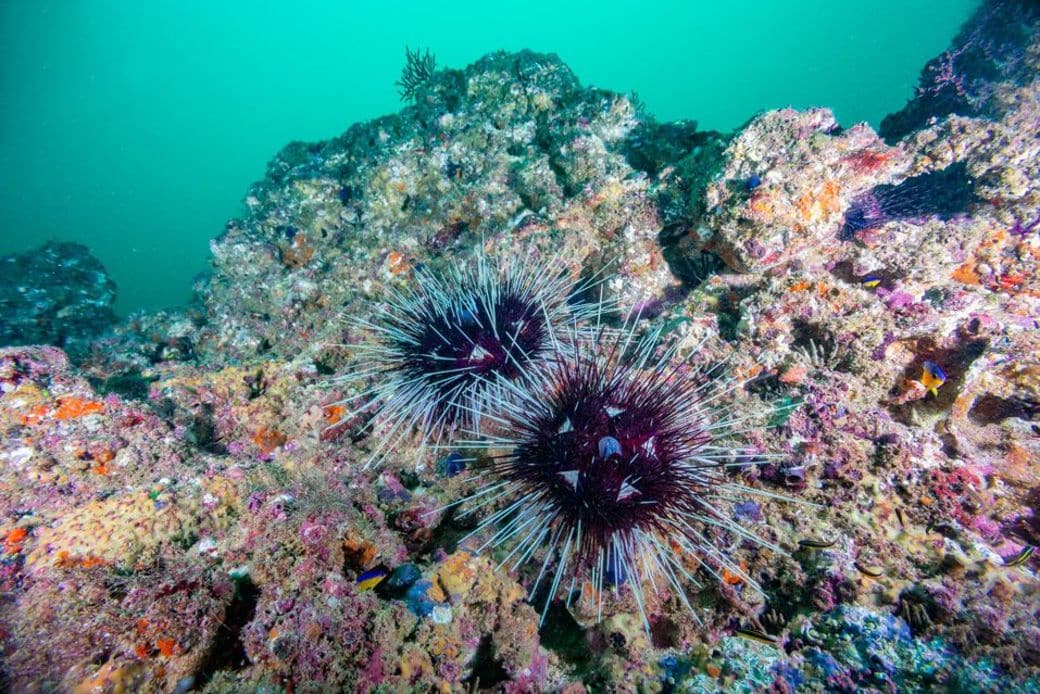
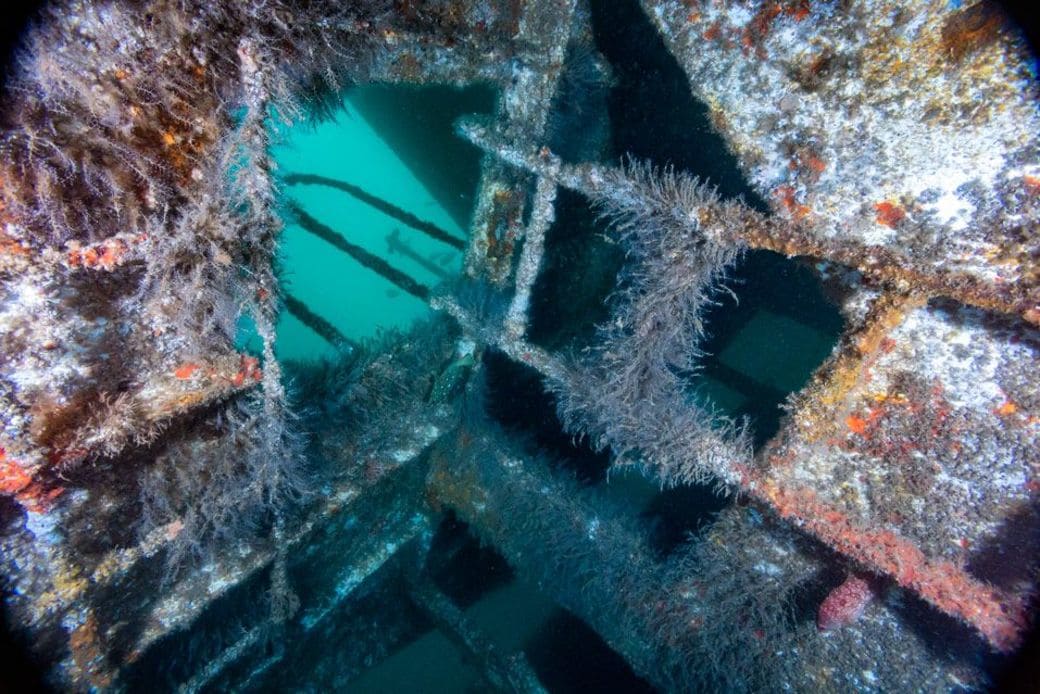
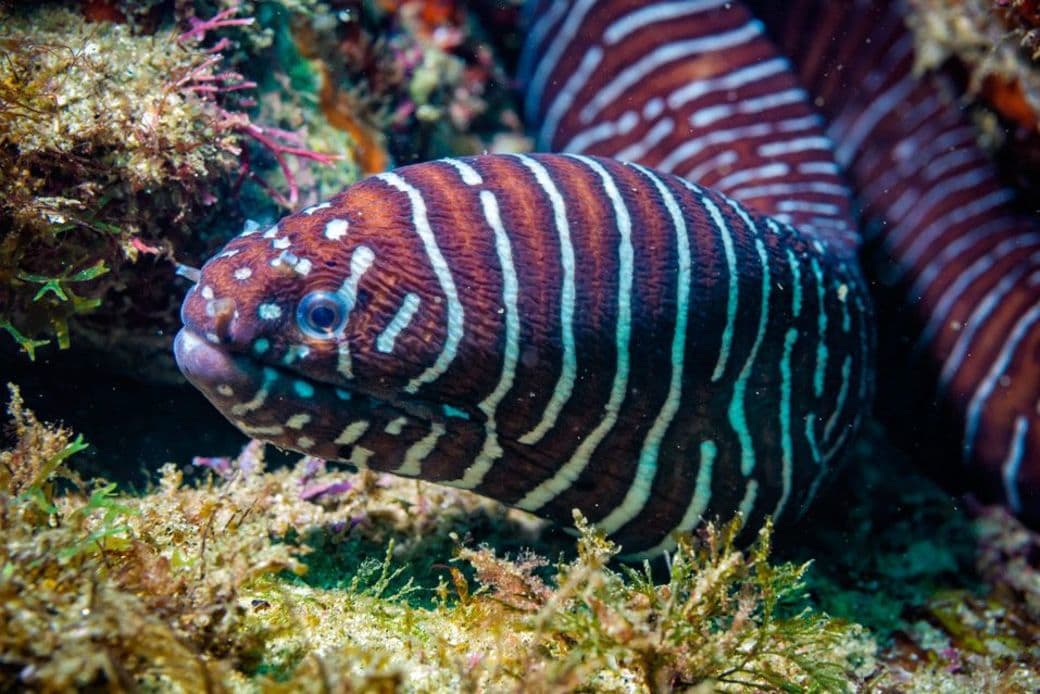
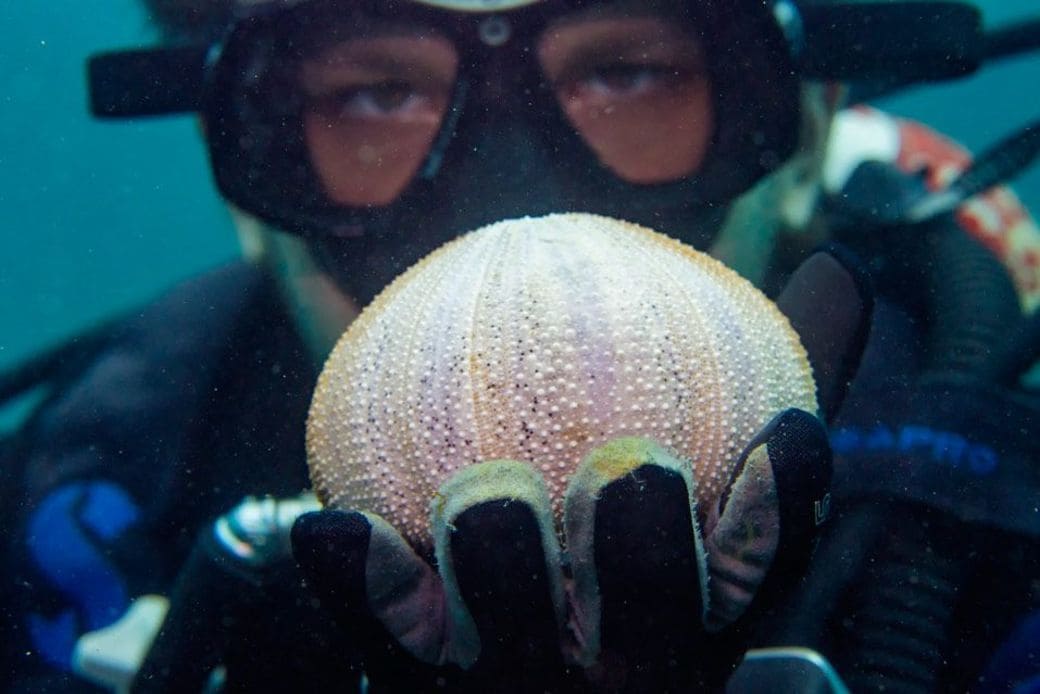
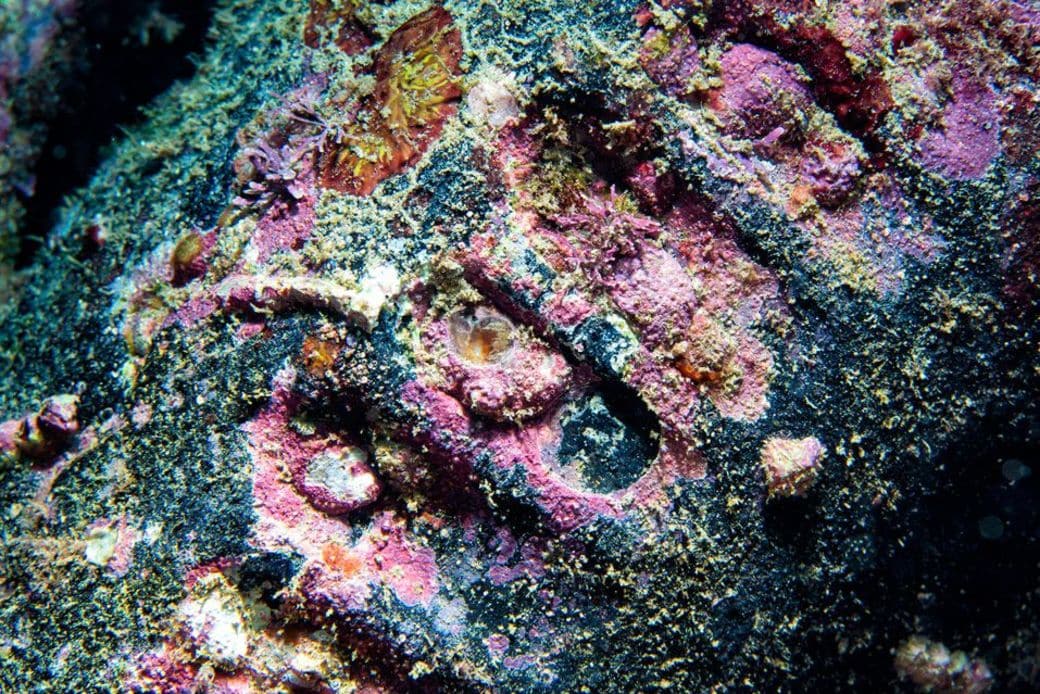
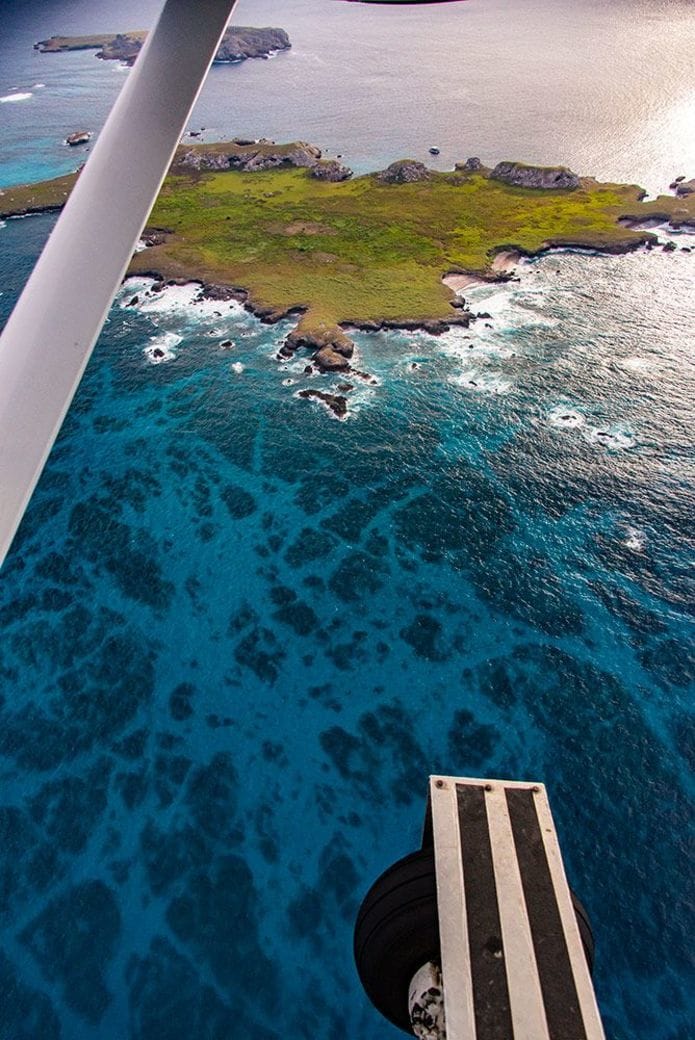
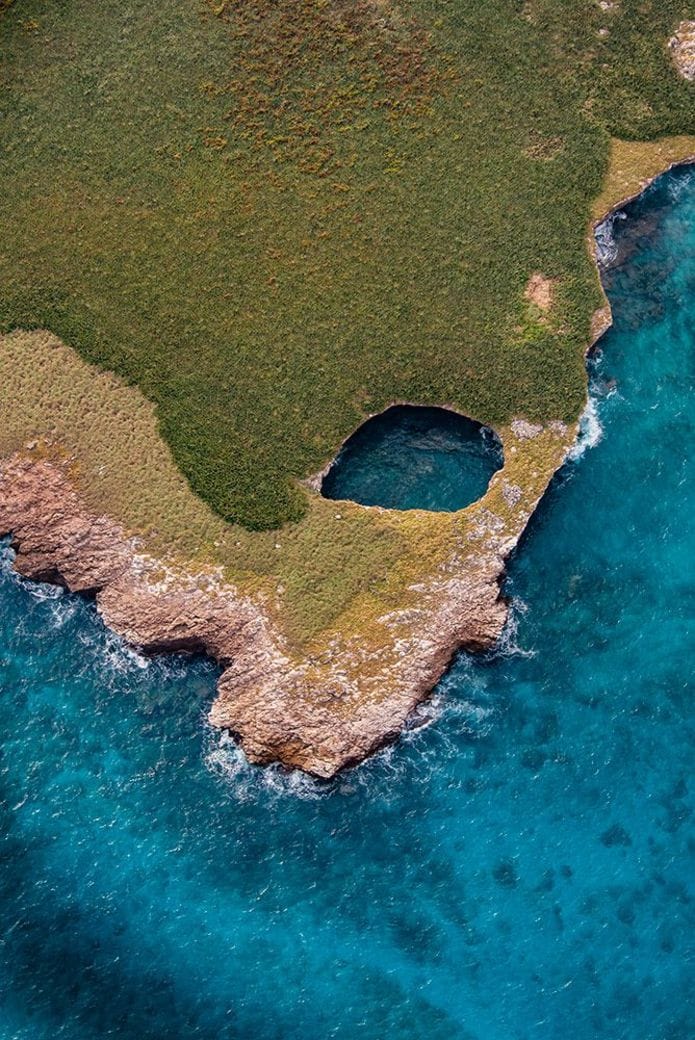
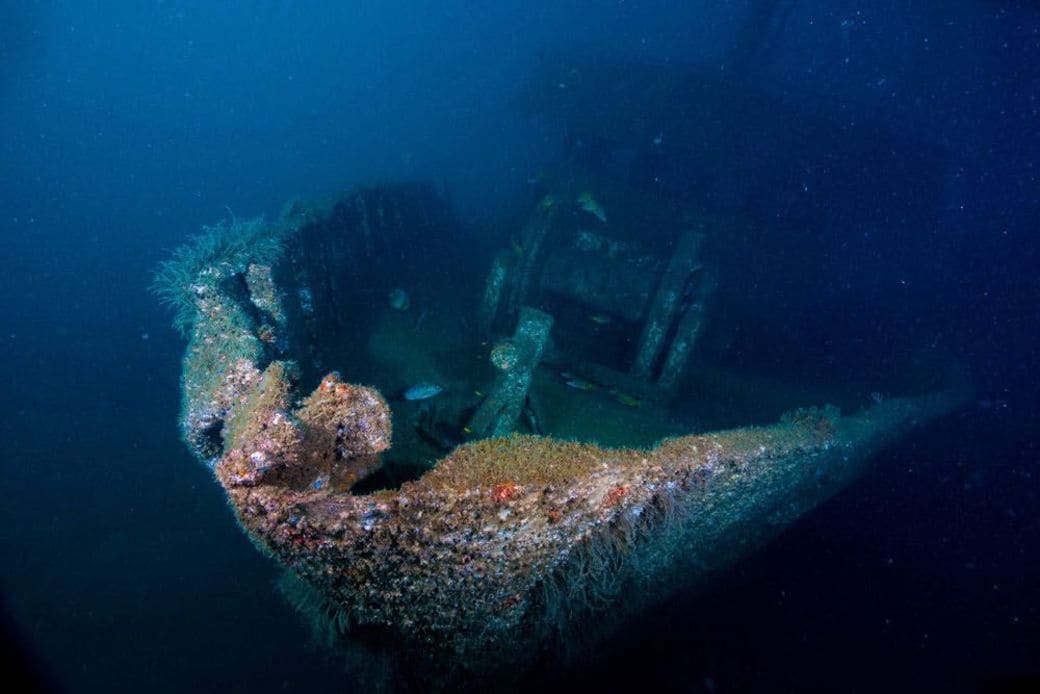
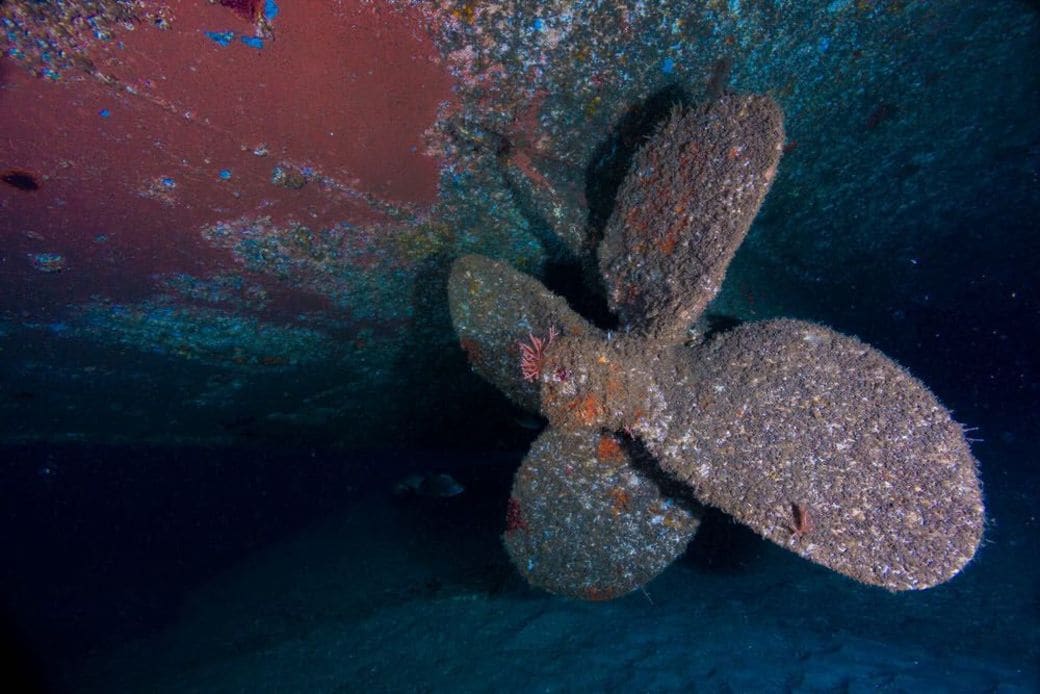
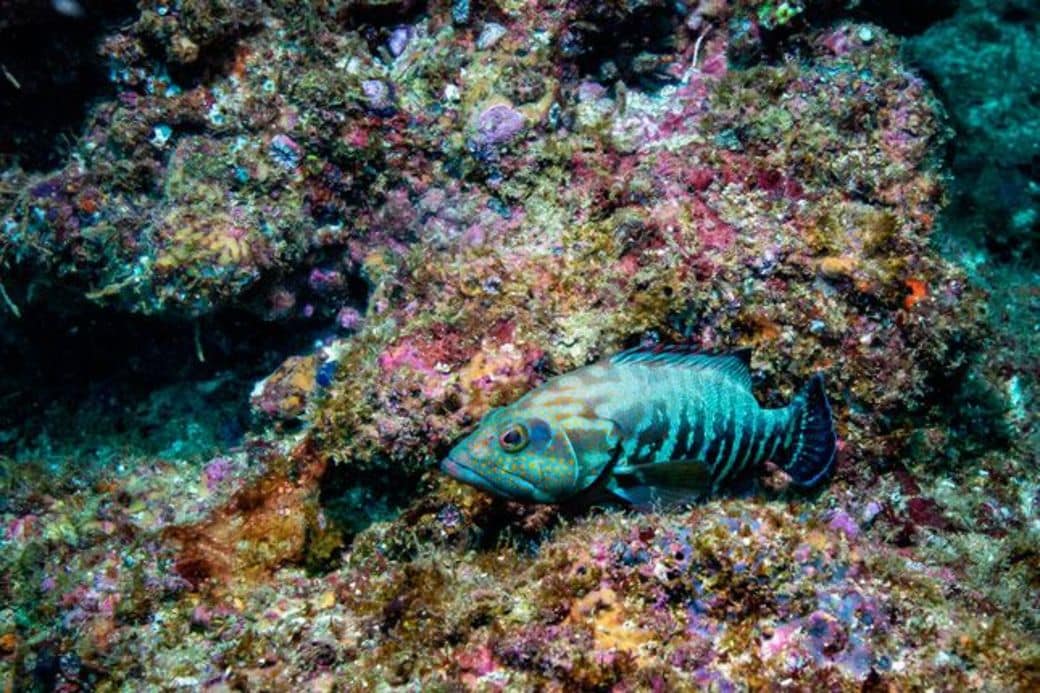
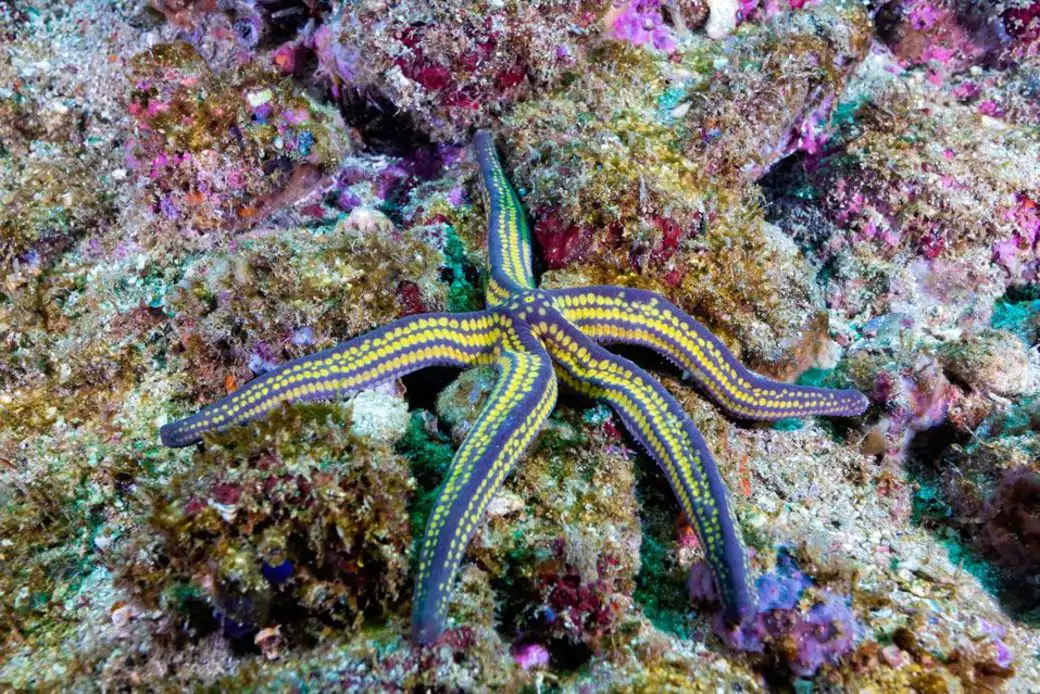
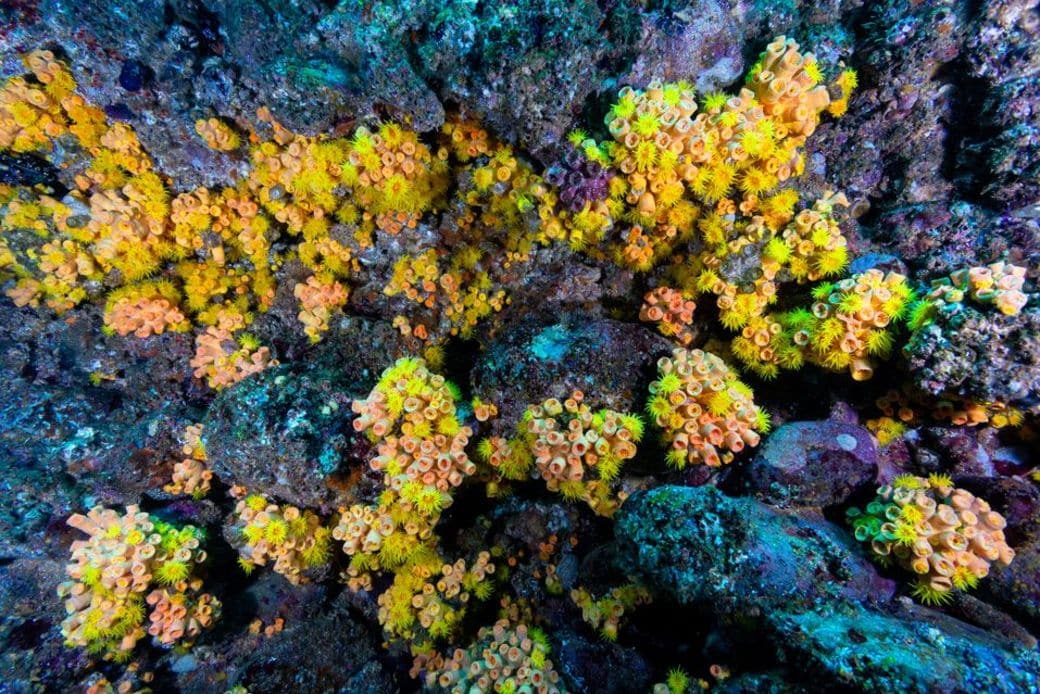
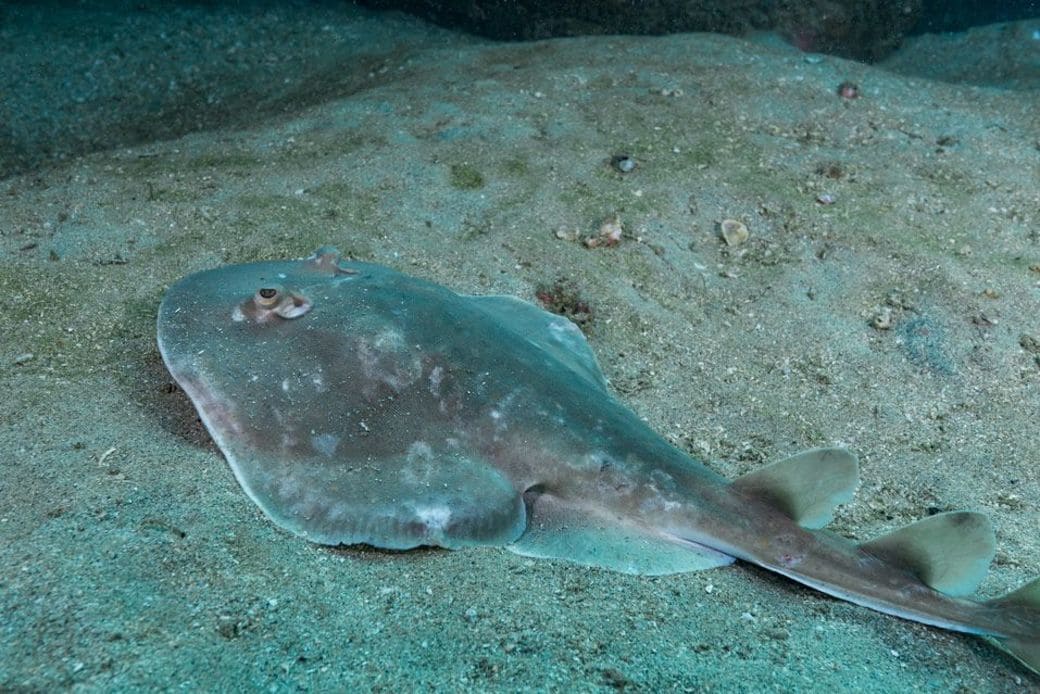
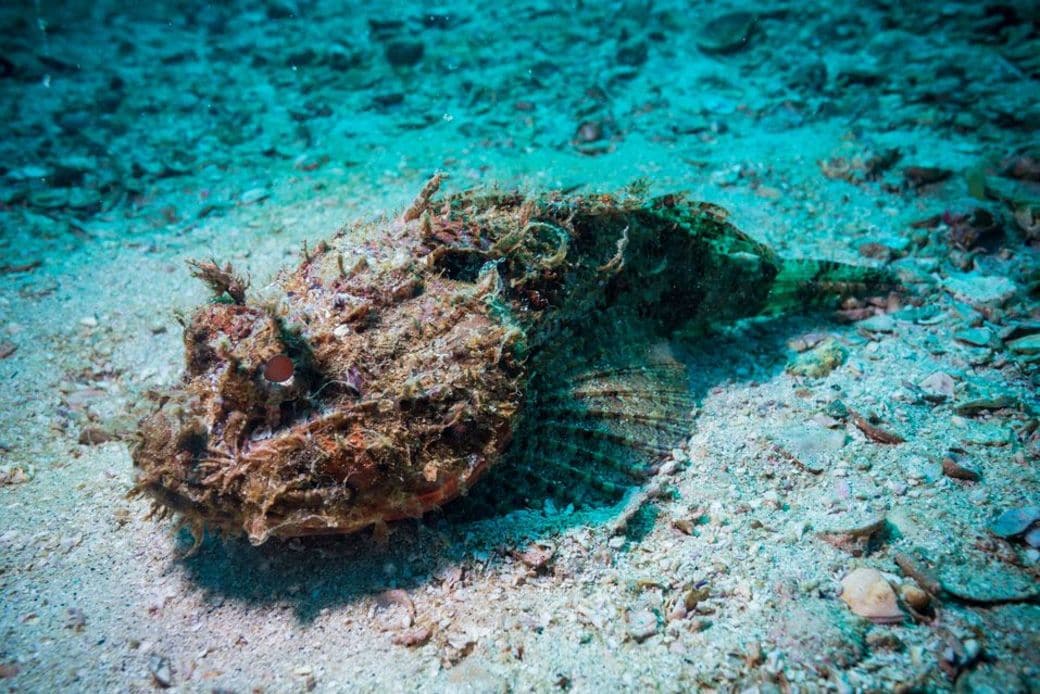
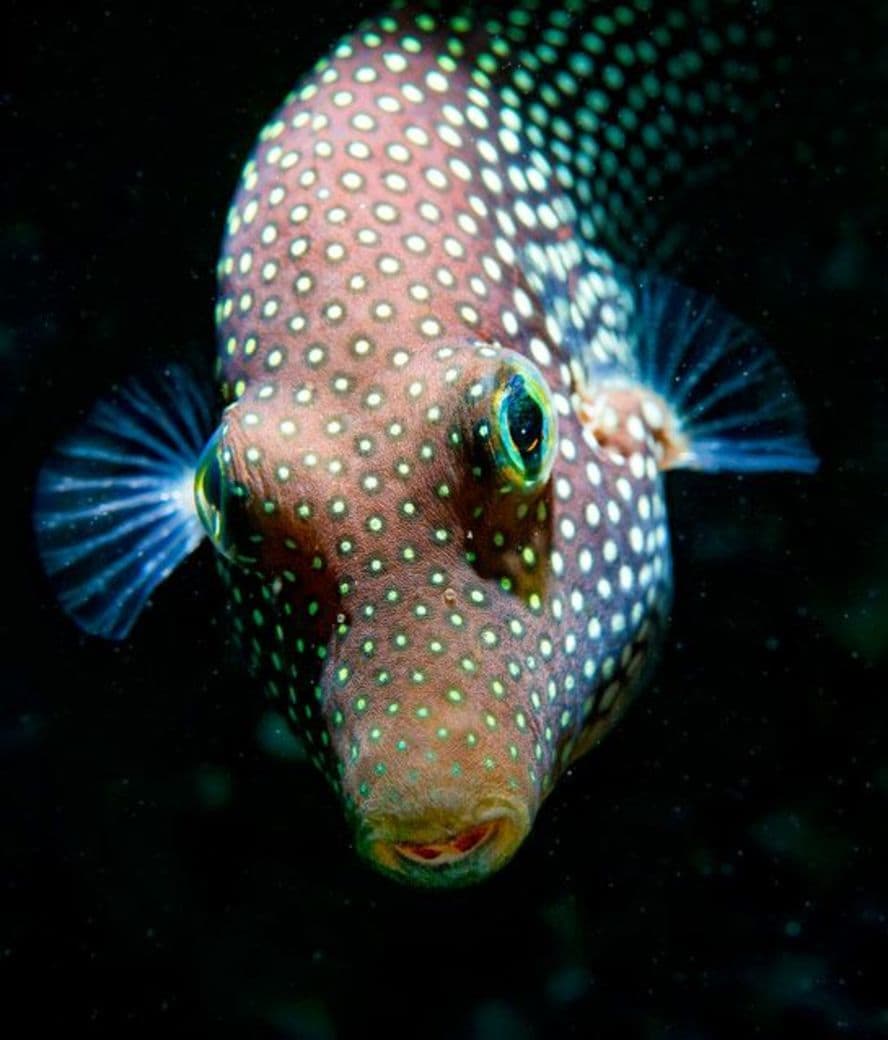
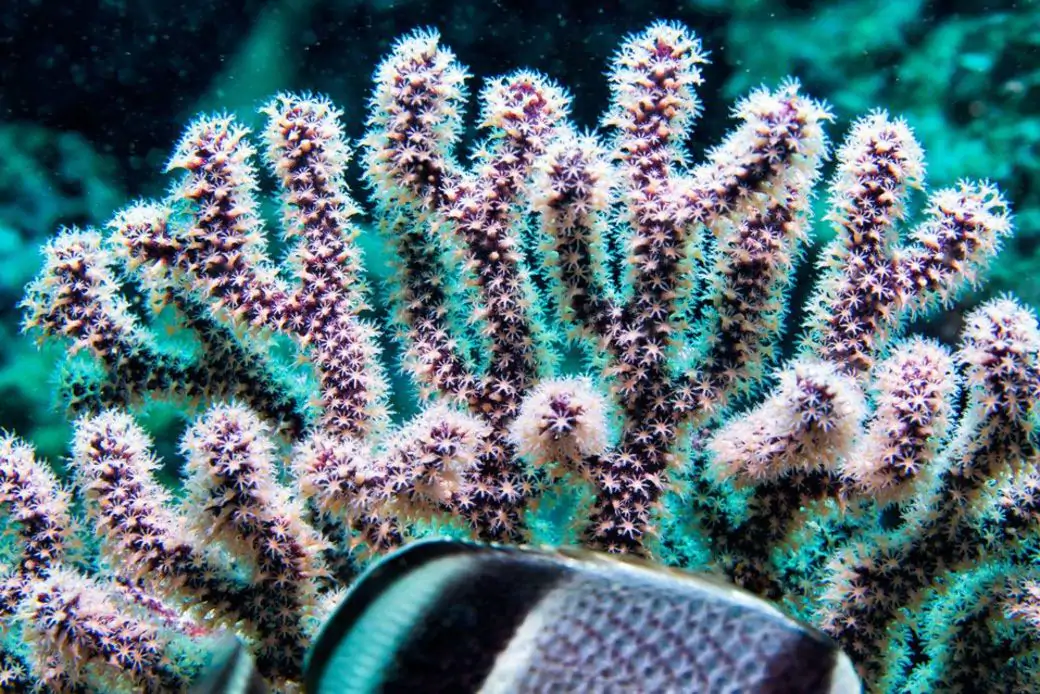
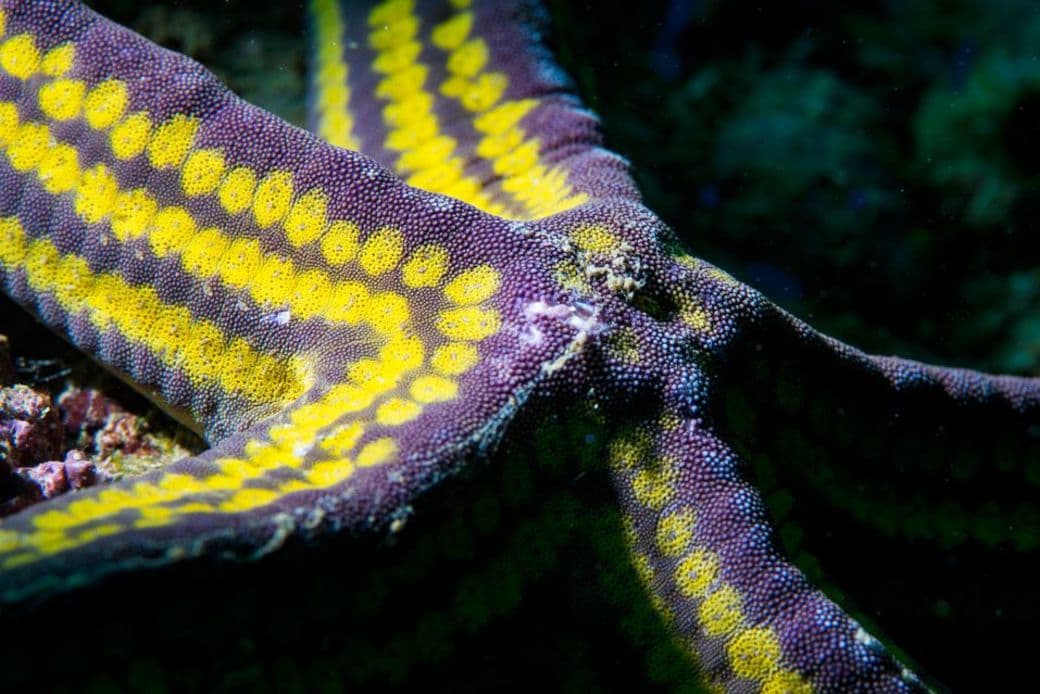
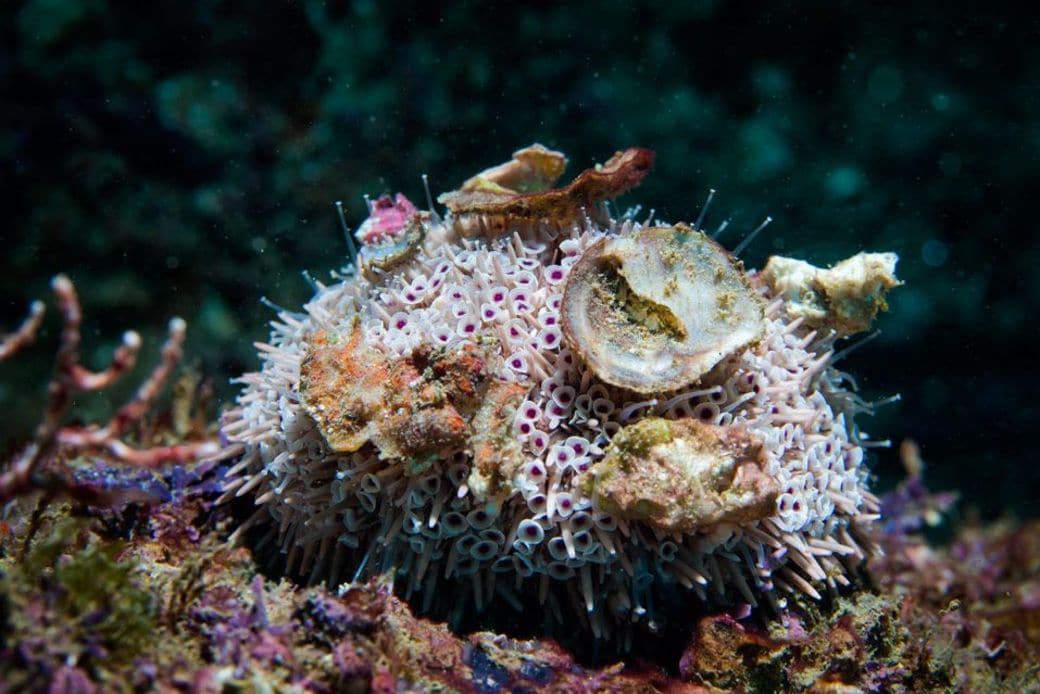
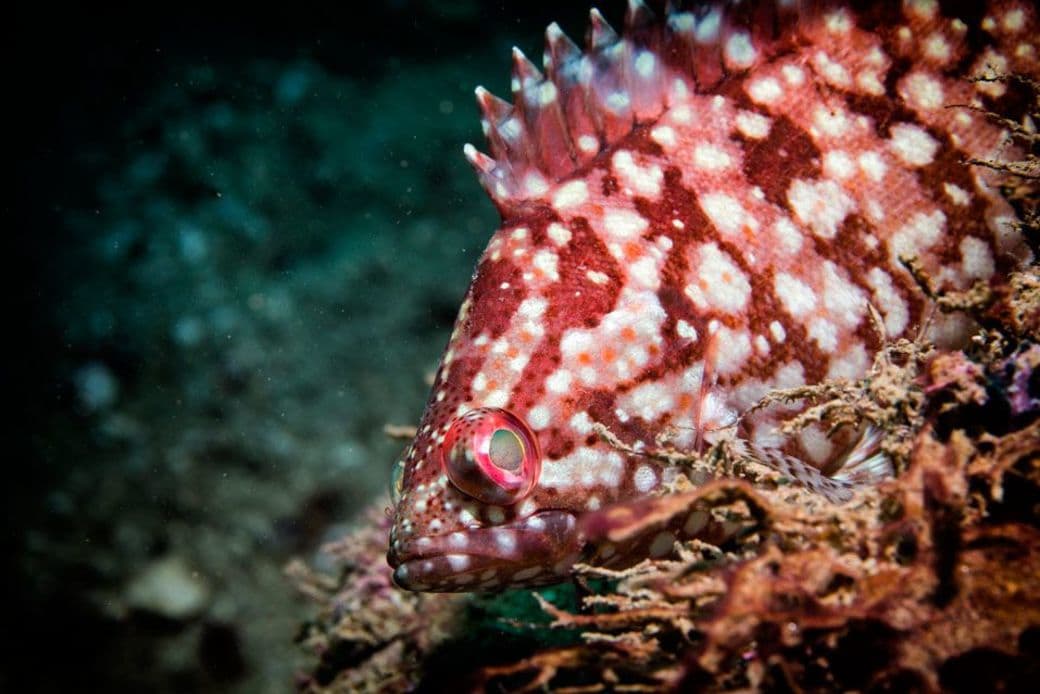
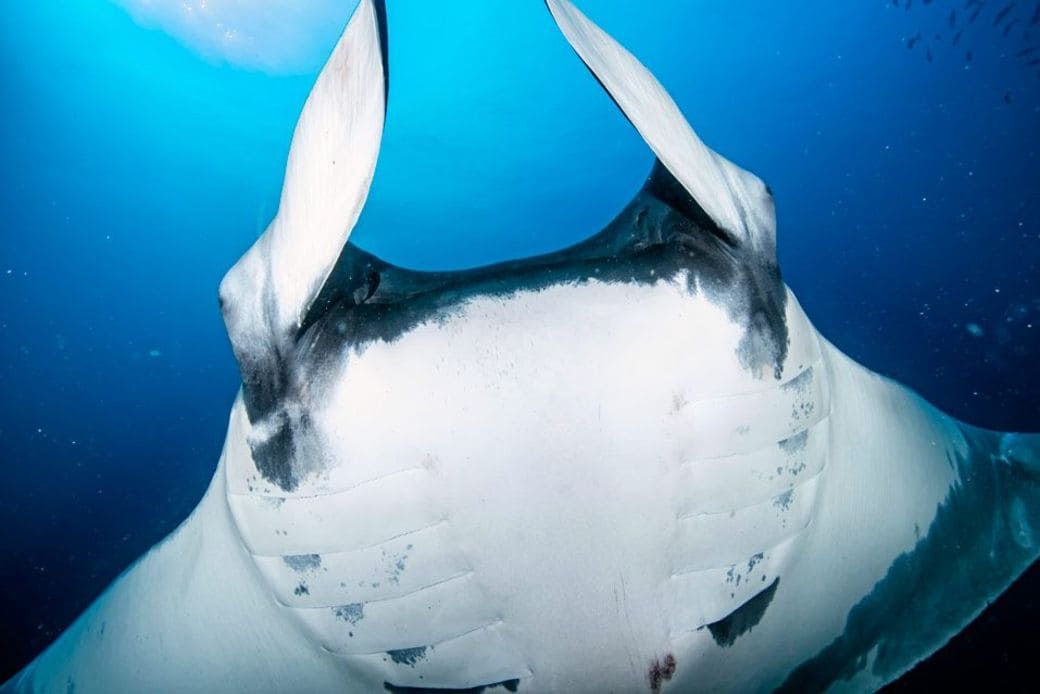
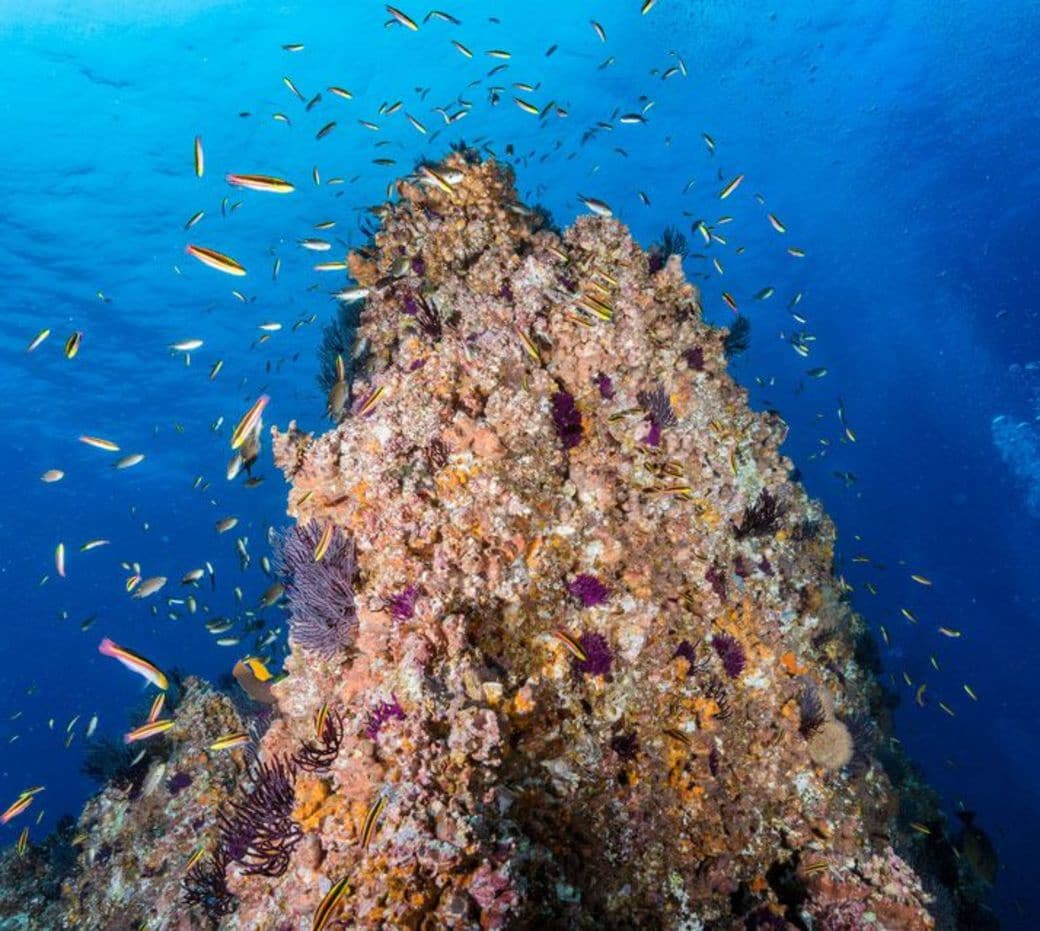
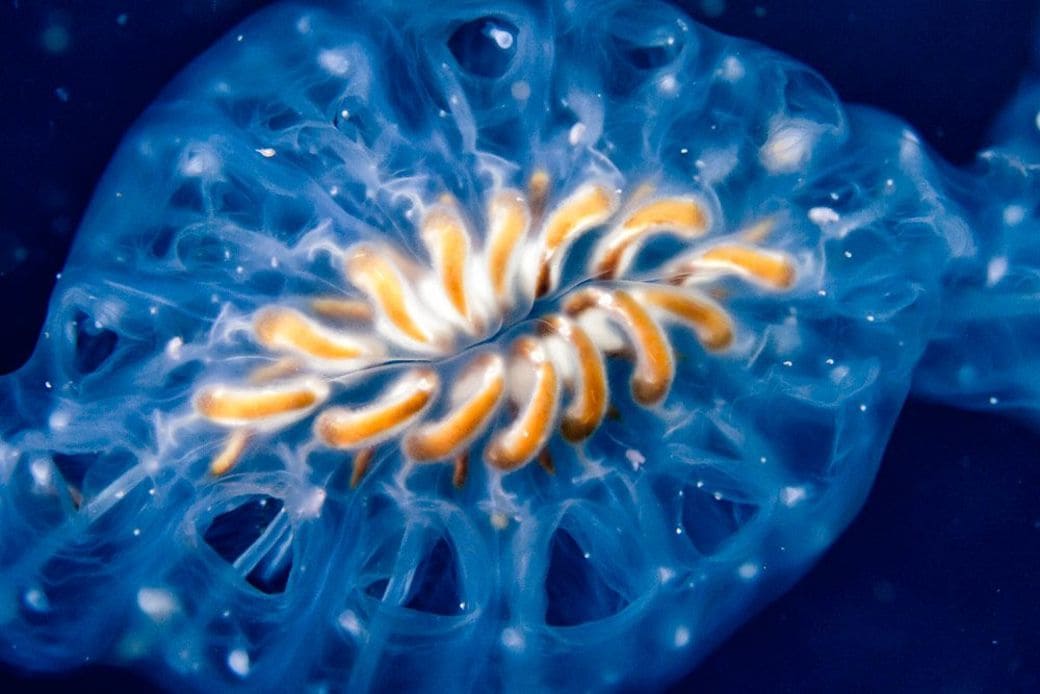
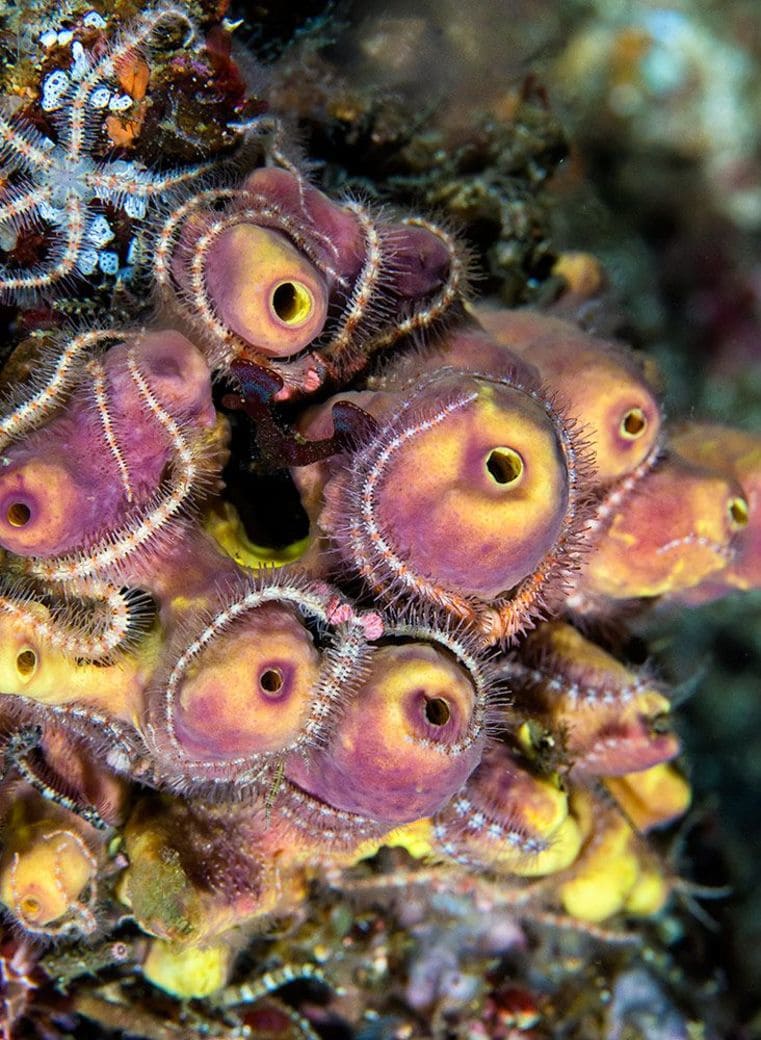
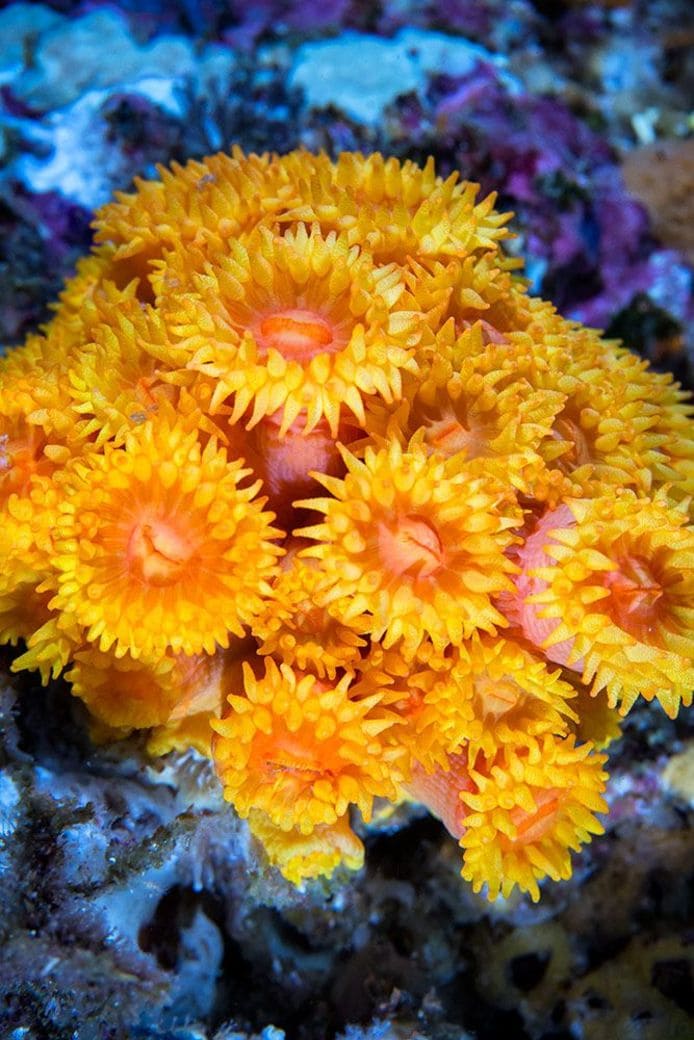
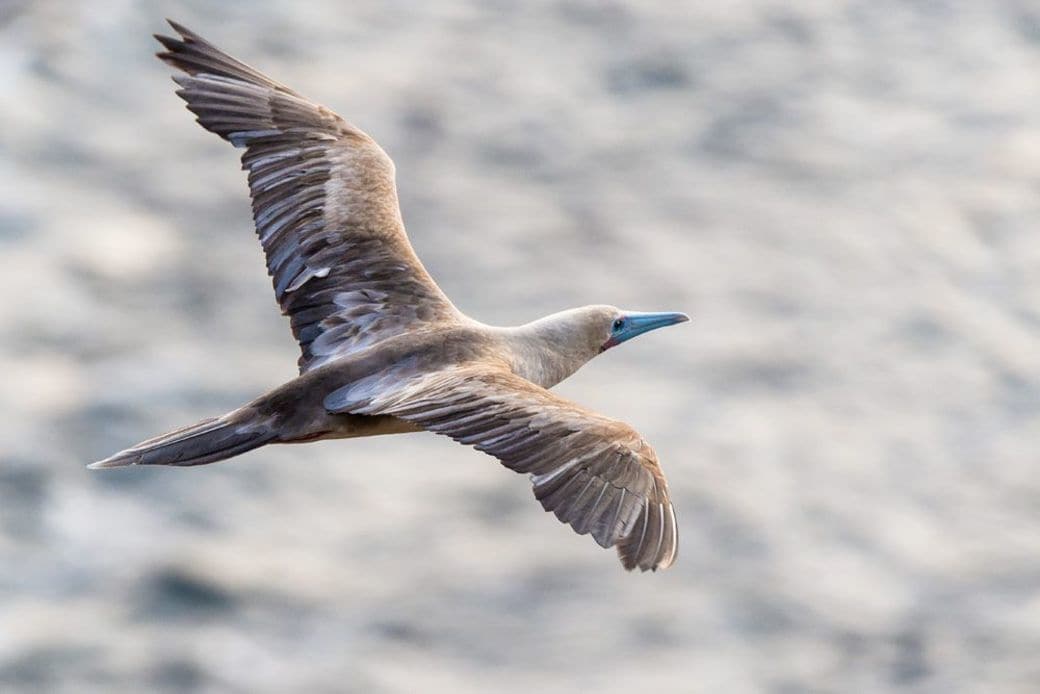
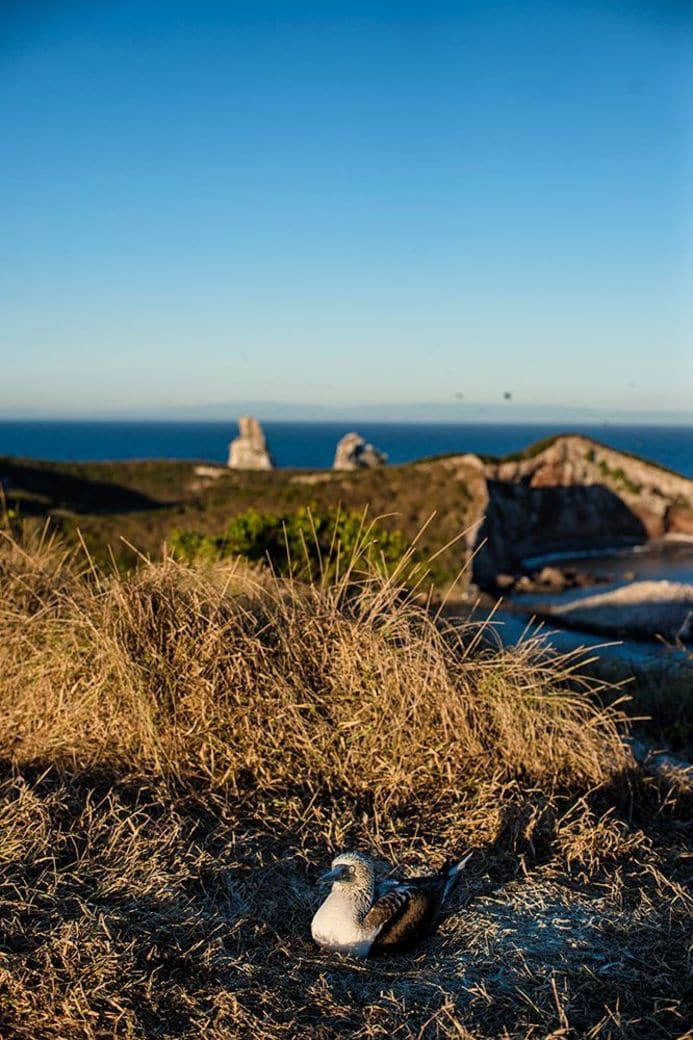
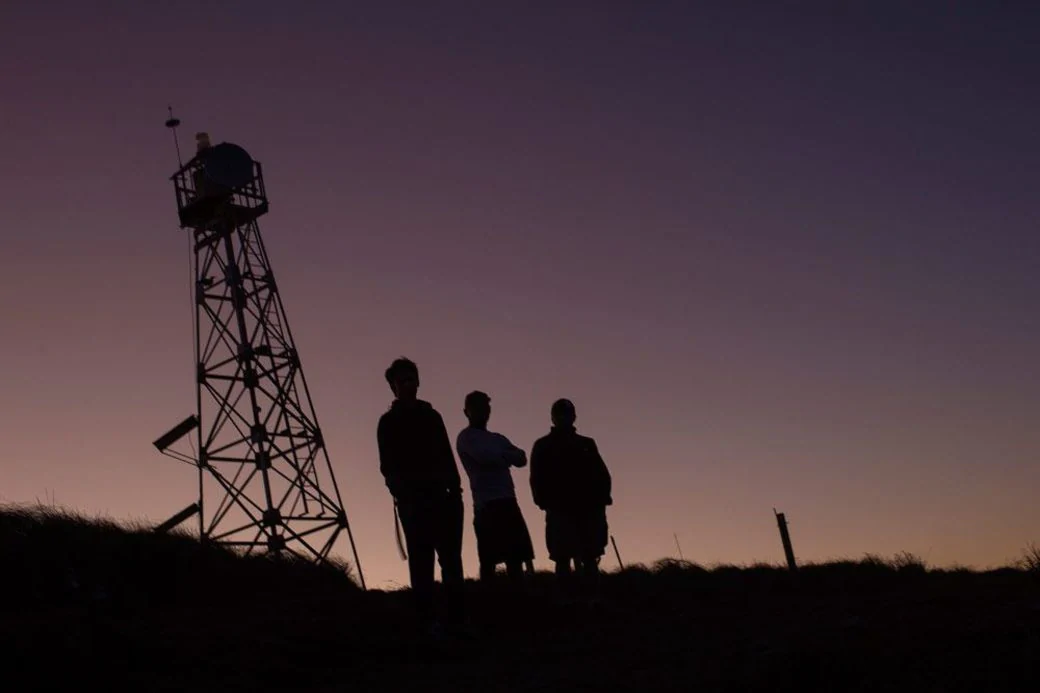
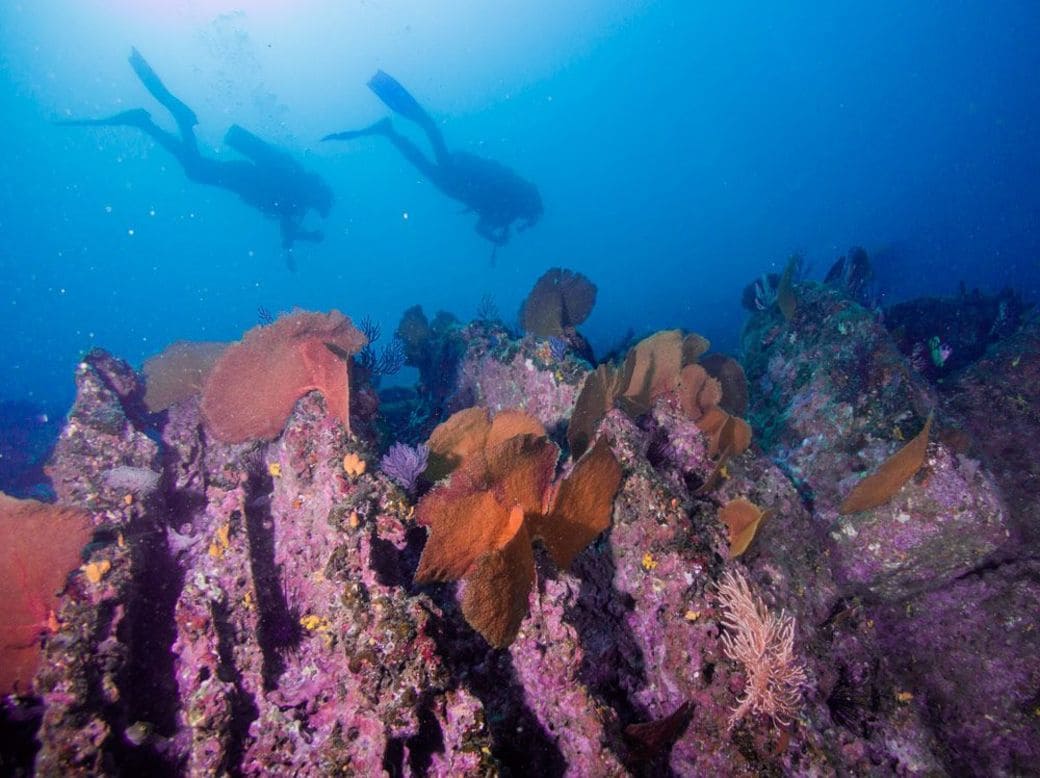
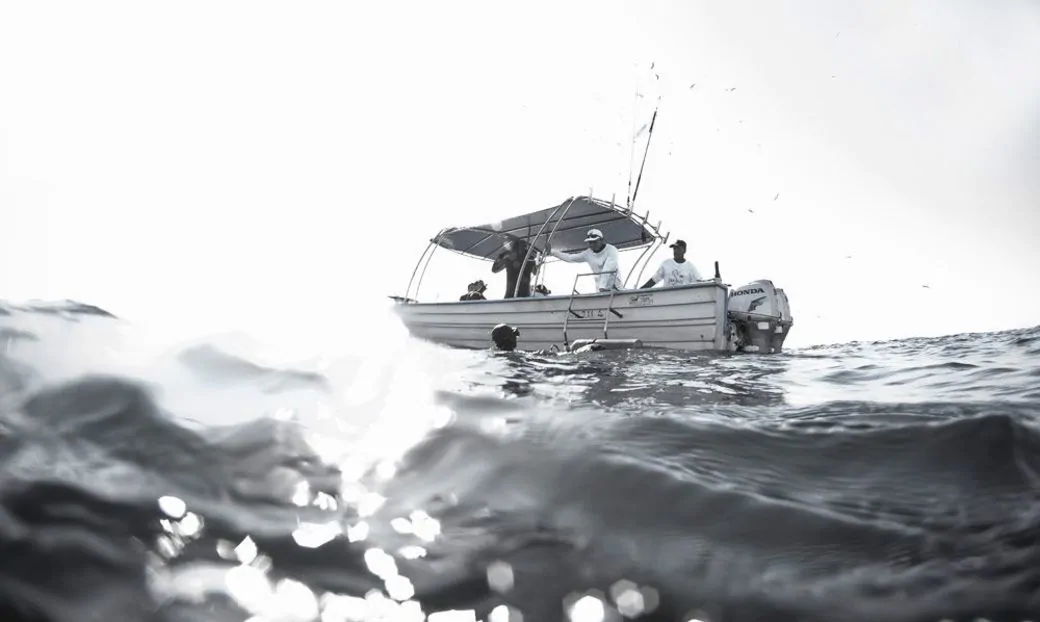
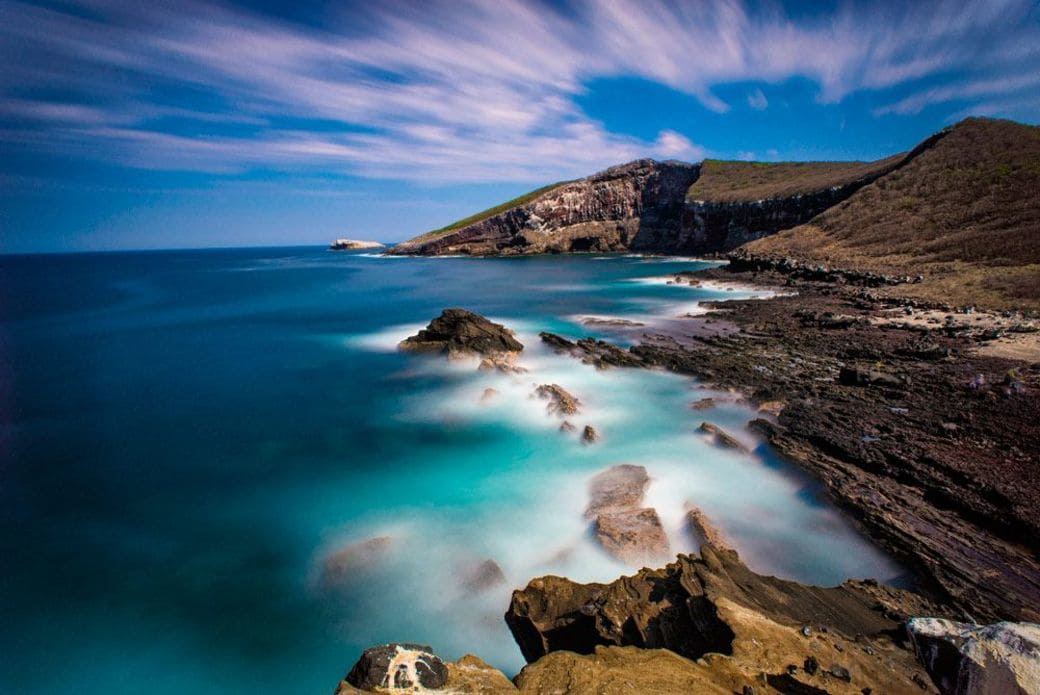
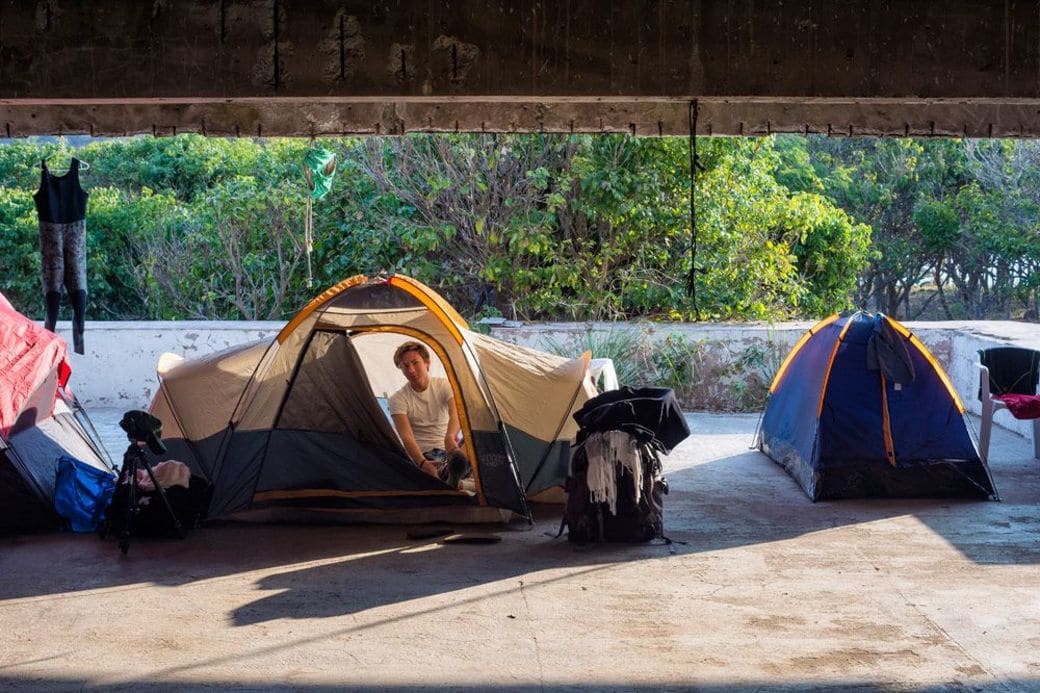
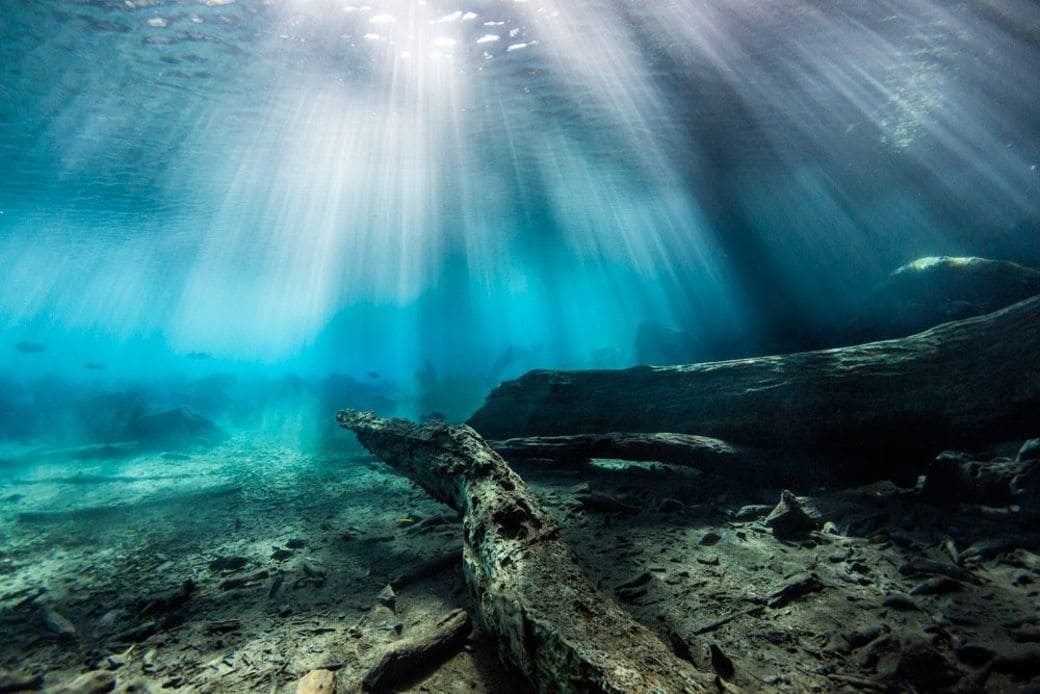
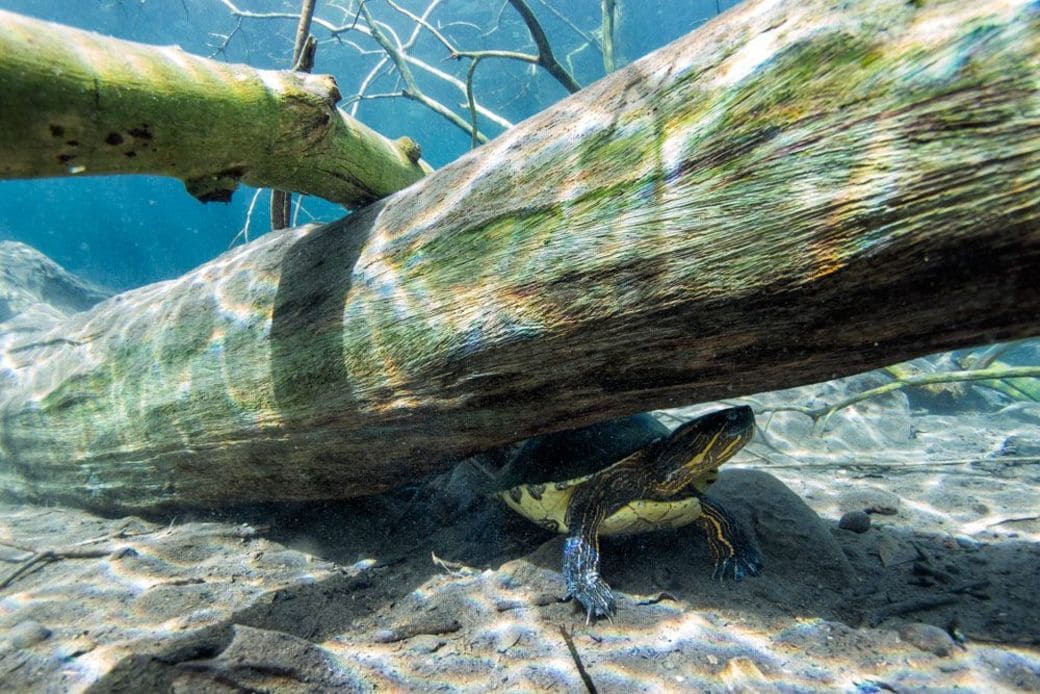
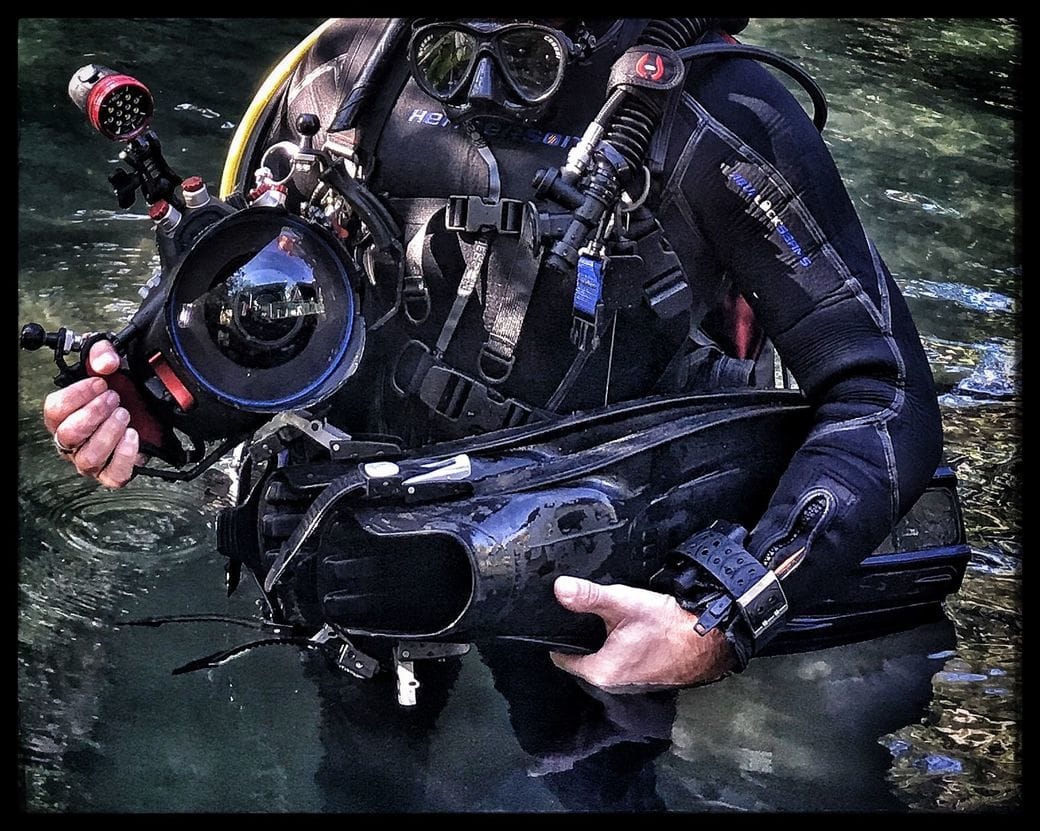
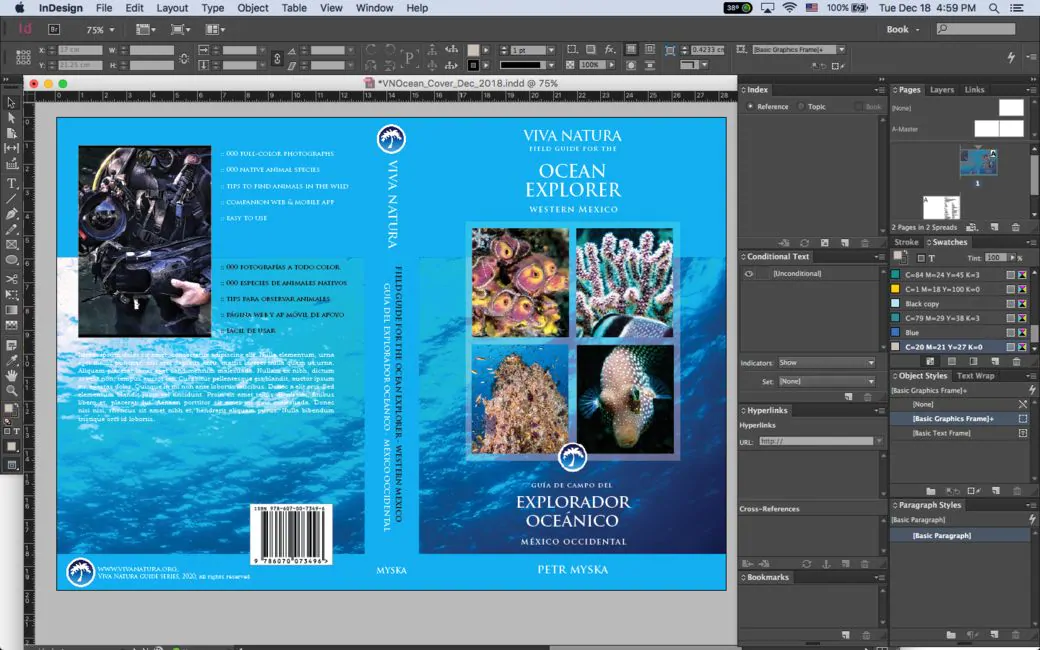
Add a comment